If you want to fill your shelves with the best novels of all time, you’re in the right place.
From the best fiction books to the best nonfiction books, novels, essays and memoirs, there are so many excellent titles collected in libraries and bookstores around the world.
So how do you know when one belongs among the best books of all time? Well, we believe the best books open our minds to new characters, points of view, and worlds. They stay with us long after the last page is read. They make us want to share them with everyone.
That’s true of all the picks in our list of the best books of all time. To land in our top 100, a book needed to truly stand out in the stacks, ratings and cultural importance. As such, we considered best sellers, award winners, and books that are highly rated by readers and critics alike.
Here is a list of our top 100 novels of all time. All these books have been regarded as some of the finest works of literature ever written for a variety of reasons, and we have reviewed them individually to tell you why;
100. Heart of Darkness
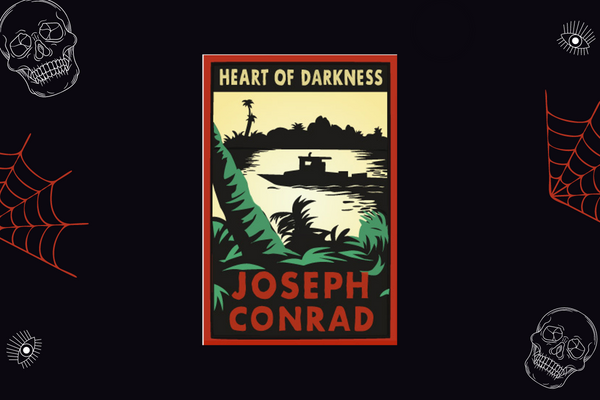
Joseph Conrad’s novella Heart of Darkness rose from humble beginnings to become a regular text in schools for the entirety of the twentieth century. Its concerns of racism and colonialism exploit inside a dramatic and intricate tale, displaying techniques that would influence future masters, ensuring an important position of study. It’s uncertain whether it retains any relevance today. Regardless of the shortcomings in the book or how confident we are of our moral high ground over the past, ignoring the past and failing to acknowledge it for what it was is always a mistake.
Joseph Conrad’s work Heart of Darkness was first published as a three-part serial in Blackwood’s Magazine in 1899. In this story-within-a-story, a guy named Charlie Marlow tells a group of men on board a docked ship about his trip.
His formative days as a ferry boat captain are the subject of the narrative. Charlie takes an interest in investing in Kurtz, a government-employed ivory procurement agent, despite the fact that his employment was to move ivory downstream. In “one of the darkest places on earth,” Kurtz has been revered by the locals due to his reputation as a clever envoy of civilization. Marlow believes Kurtz has another motive, specifically that he is insane.
One of the most significant novels ever written, Heart of Darkness is a reflection on corrupt and evil European colonialism as well as a journey inside the terrifying mind of one of the corrupt.
It’s surprising how this book, which gained little recognition and was viewed as an inferior piece even by its writer at the time of its first publication, came to be recognized as highly essential and a compulsory reading for both high school and college students.
It’s likely that as time passed, its effort to confront racism and colonial exploitation—both in terms of what it accomplished and where it fell short—made it more pertinent. Perhaps the uncertainty created by its modernist technique leaves interpretation pointless and subject to endless research and revision, leaving the reader to interpret it as they see fit.
“We penetrated deeper and deeper into the heart of darkness”
Joseph Conrad
Check out- Heart of Darkness
99. The Scarlet Letter

Nathaniel Hawthorne maintained that The Scarlet Letter was a “romance,” not fiction, calling it “a story of human frailty and loss.” He considered this distinction to be important.
A romance reveals “the reality of the human heart,” but a novel, in his words, “aims at a very precise fidelity, not only to the conceivable, but to the likely and normal course of man’s experience.” This is, in essence, the first psychological novel, a superb and ground-breaking sample of a brand-new genre of 19th-century literature.
Nathaniel Hawthorne’s tale is remarkable for how straightforward it is. A young woman from Boston in the 17th century named Hester Prynne is publicly humiliated for having affairs and giving birth to Pearl, an illegitimate daughter. Hester gradually restores her reputation in the eyes of Puritan society despite having to wear a scarlet “A.” She wrestles with her own sinful nature while also confronting the two men in her life—her husband and her lover—over a long period of time with the harsh truth of their emotional commitments and shortcomings. She endures a terrible seven-year recovery process before emerging as a strong, respectable lady, while the pastor who seduced her, Arthur Dimmesdale, passes away in shame. Hester too passes away eventually and is buried next to Dimmesdale, with a simple “A” inscription marked on her tombstone.
It is without a doubt a significant work that brought attention to the flaws of Puritan morality. Hawthorne discussed the nature of evil, sin, morality, as well as individual development and identity. His psychologically intricate writings have cutting-edge portrayals of women. For instance, Hester Prynne became one of the most well-known female characters, and who many people believe to be the first heroine of American fiction.
Check out – The Scarlet Letter
98. Moby-Dick or, the Whale
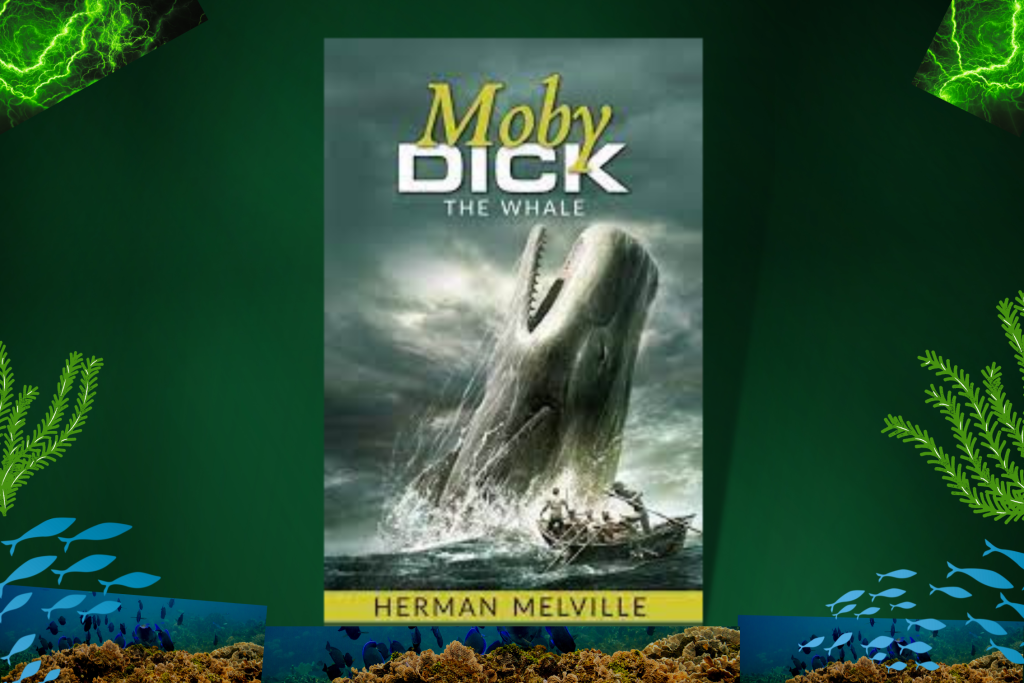
Moby Dick; Or The Whale, or Herman Melville’s MOBY-DICK, a sad tale of obsession and vengeance set against the merciless sea, has now been skillfully edited and lavishly illustrated for the reader of the twenty-first century. Here are the crazed whaling captain Ahab, the ever-observant narrator Ishmael, and the enigmatic, unstoppable white whale himself. The action is shown in Melville’s original words and is stitched together with summaries by acclaimed author Jan Needle. Patrick Benson, one of the best children’s artists working today, creates lavish illustrations that perfectly reflect the eternal spirit of this remarkable classic.
Thus, Melville described his magnum opus, one of the most imaginative works in literary history. In part, Moby-Dick tells the tale of a terrifyingly captivating maniac who waged an atrocious war against a creature that was as colossal, deadly, and mysterious as the ocean itself. The book may be viewed as a part of the writer’s lifelong reflection on America and can be seen as more than just an adventure novel or an encyclopedia of whaling myth and tradition. Moby-Dick is a deep examination of character, religion, and the nature of perception that is written with marvelously redemptive comedy.

“Moby Dick reads like a great blog. It’s a meditative state, almost transcendental when you submerge yourself in it. It’s circular, similar to the experience of drugs. It pulls you into a dreamlike world where things are transformed, turned into other things…” – Philip Hoare
Check Out – Moby-Dick or, the Whale
97. Hard Times
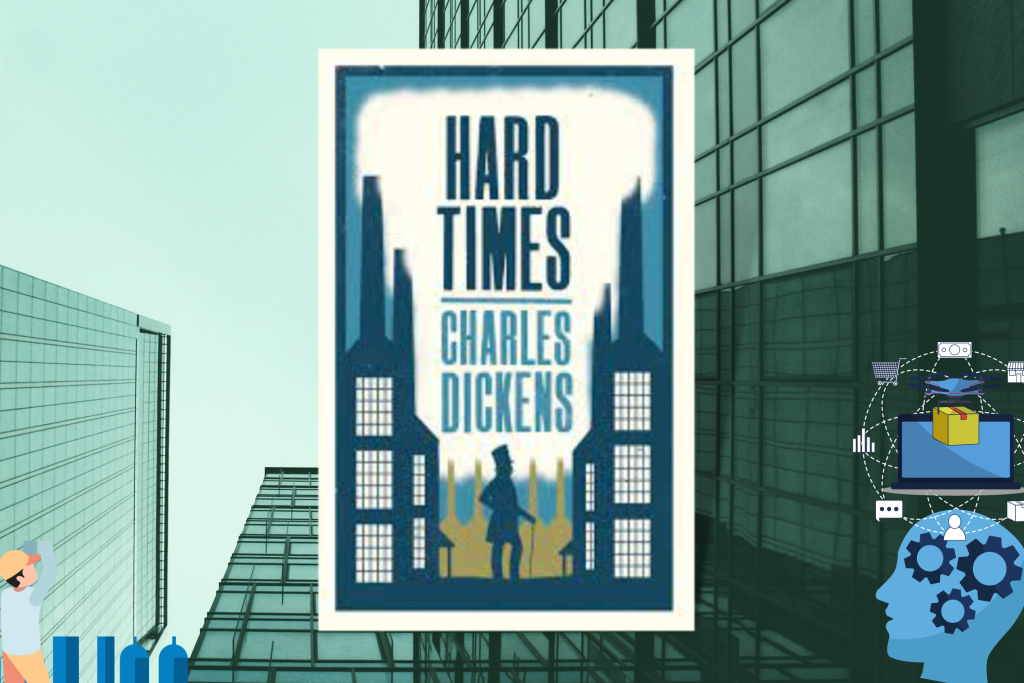
The next best novel of all time falls no. 97 on our list. Dickens wrote Hard Times in 1854, in the midst of a century and an age that took great pride in its social, economic, and scientific advances. Several references throughout the book show that the novel’s background is more or less contemporary with its composition.
The novel is partially concerned with the plight of individuals such as Stephen Blackpool who have been treated unfairly or ignored as a result of their successes, but the significant proportion of its storyline is concerned with the lives of people in the middle and upper classes, such as Mr. Bounderby, a factory owner, and the Gradgrinds, a rich family. Irrespective of wealth or poverty, each character in Hard Times has their life massively influenced by the major changes brought about by the new wave of Industrialization in England.
By the mid nineteenth century, the industrial revolution had fully established itself in northern cities such as Charles Dickens’ fictional Coketown, however the cultural and social ramifications were yet to be ironed out. There had been a lack of political involvement for the poor and working class since the beginning of industrialization, which was a huge cause of discontent.
In light of these concerns, the novels of the time, known as “industrial novels” or “Condition-of-England novels,” explored how to neutralize the tension between the newly enlarged working classes and the capitalists.
Dickens included the subtitle “For These Times” when Hard Times first debuted in a bound volume edition, stressing the book’s continued relevance to the social challenges it examines.
Of course, Dickens addresses a wide range of societal concerns in regard to the exploitation of factory workers. Education, women’s status, and the severe divorce laws of the time are all factors to consider. Each of these concerns were being contested by Victorian society. By 1853, state-run, universal education was only getting underway, and its exact structure was still being argued.
Check Out – Hard Times
96. The Invisible Man
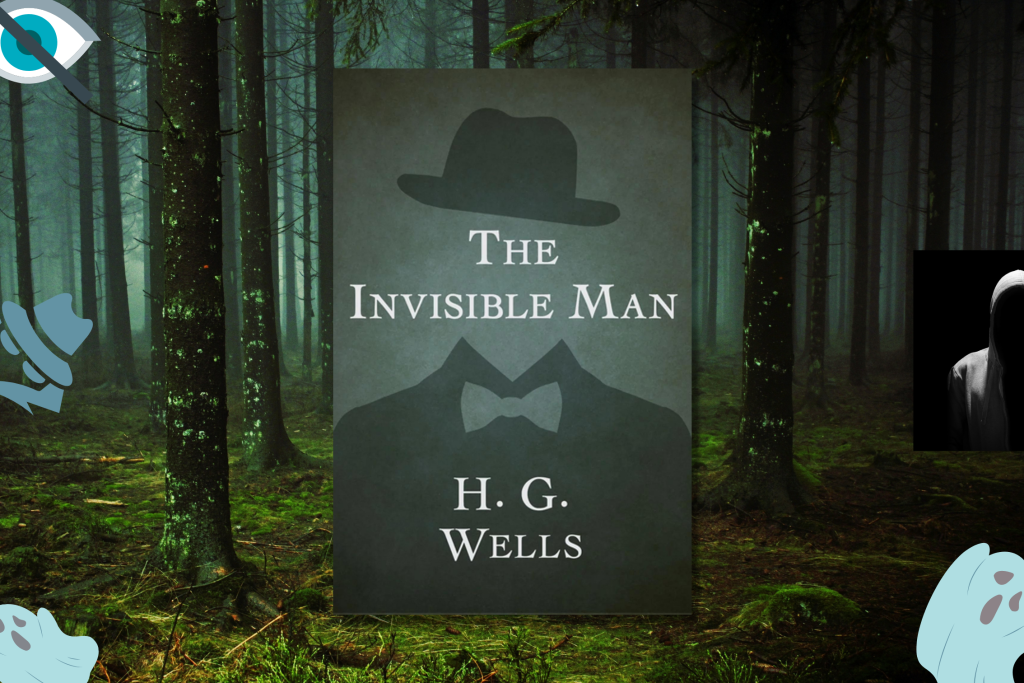
HG Wells makes no attempt to make things difficult for his readers. If a time machine acts as the story’s major point, he will name a book The Time Machine. If there is a war between two worlds, he will call the book, you guessed it, The War of the Worlds. So it’s not hard to imagine what the plot will be if he writes a book called The Invisible Man.
But consider this: while the characters in the book may not be aware that the story is about an invisible man (which lowers the tension), you most likely are. That means we’ve gotten a step ahead of the characters. As a result, when weird events occur in Iping and locals wonder, “Are those ghosts?” we are outside the book saying, “No, dummies, it’s the Invisible Man! Get with the program!”
One more interesting thing. When it was first published, the book was titled The Invisible Man: A Grotesque Romance. What kind of romance is this you might wonder? Certainly, “romance” did not always mean “oh-Edward-oh-Bella” in Wells’ day. In truth, Wells aims for the romance subtitle of his book to hint that it will be rather unusual. He even refers to his writings as “scientific romances” to emphasize that he was incorporating and expanding on science fiction elements, as the term “science fiction” was not frequently used in the late nineteenth century.
But bear in mind that, even when he was being a tiny bit extravagant, Wells usually wrote his novels in a realistic manner. As a matter of fact, that is one of the reasons that makes The Invisible Man one of our favorites!
Check Out – The Invisible Man
95. The Life and Adventures of Robinson Crusoe (Robinson Crusoe #1)
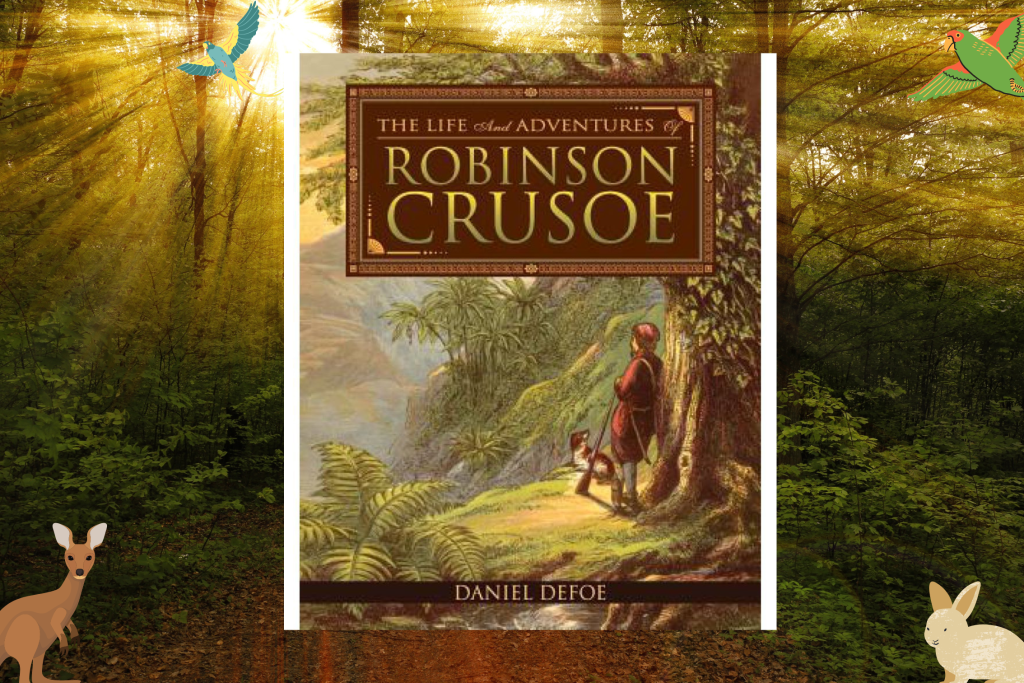
Robinson Crusoe by Daniel Defoe, often regarded as the first English novel, was written and published in 1719. The novel tells the account of one man’s survival on a desert island following a shipwreck. At the time, the book was presented to the public as a true account of true events documented by a real man named Crusoe, and it was published without Defoe’s name in 1719. Readers, though, became skeptical after reading it.
A book titled Robinson Crusoe Examined and Criticized, written by a man named Charles Gildon, was published the same year as the novel, revealing the falsification of both Crusoe and the occurrences detailed in the book.
Interestingly, Defoe’s old classmate Timothy Cruso, who subsequently became a guidebook author, may have inspired the name “Crusoe.”
Why Is The Book On Our List?
Robinson Crusoe is perhaps more well-known than read nowadays, which affects readers’ impressions of the book’s genuine significance. Robinson Crusoe is a romantic adventure narrative about a young man who journeys to sea in quest of thrilling experiences, only to find himself shipwrecked on a desert island and gradually becoming adapted to his situation with the assistance of a parrot as a companion.
In reality, this is only half true (although he does befriend a parrot at one point). The framework that is critical for understanding Defoe’s novel is early eighteenth-century capitalism and Renaissance ideals based on rationalism (i.e., seeing what is actually there) rather than an out-of-date Romantic worship of the senses, or “man’s relationship with his environment.”
Robinson Crusoe was not the first fantasy fiction set on a desert island, despite being the most influential among English writers. Although Alexander Selkirk, a Scottish man who lived on fish, berries, and wild goats for more than four years alone on a Pacific island, is often regarded as having influenced Defoe, another notable literary influence that has been proposed is Hai Ebn Yokdhan’s book; The Improvement of Human Reason: Exhibited in the Life of Hai Ebn Yokdhan.
Because of its success in the United Kingdom, Robinson Crusoe was reprinted multiple times in the months after its initial publication. Daniel Defoe’s Robinson Crusoe sequel, The Farther Adventures of Robinson Crusoe, was also published in 1719. The book was promptly translated and published on the European continent. The Robinsonades, which Defoe’s work immediately inspired, quickly followed, and he used it as inspiration for further writings, while also being featured in other book references and films.
Some critics have questioned whether Robinson Crusoe is a novel because of its highly episodic structure, Defoe’s inconsistent narrative pacing, and minor typos (a male goat changes gender as needed, for example), raising the possibility that the author did not intend or complete the work as a single cohesive piece.
In many ways, its diversity; incorporates aspects of romance, history, fantasy, symbolism, and other genres—argues that “novel” is the only category large enough to include it. The best method for understanding Robinson Crusoe is to compare it to novels such as Tristram Shandy and Infinite Jest, which all maximize the novel’s potential while disguising its shortcomings.
Check Out – The Life and Adventures of Robinson Crusoe (Robinson Crusoe #1)
94. The Legend of Sleepy Hollow
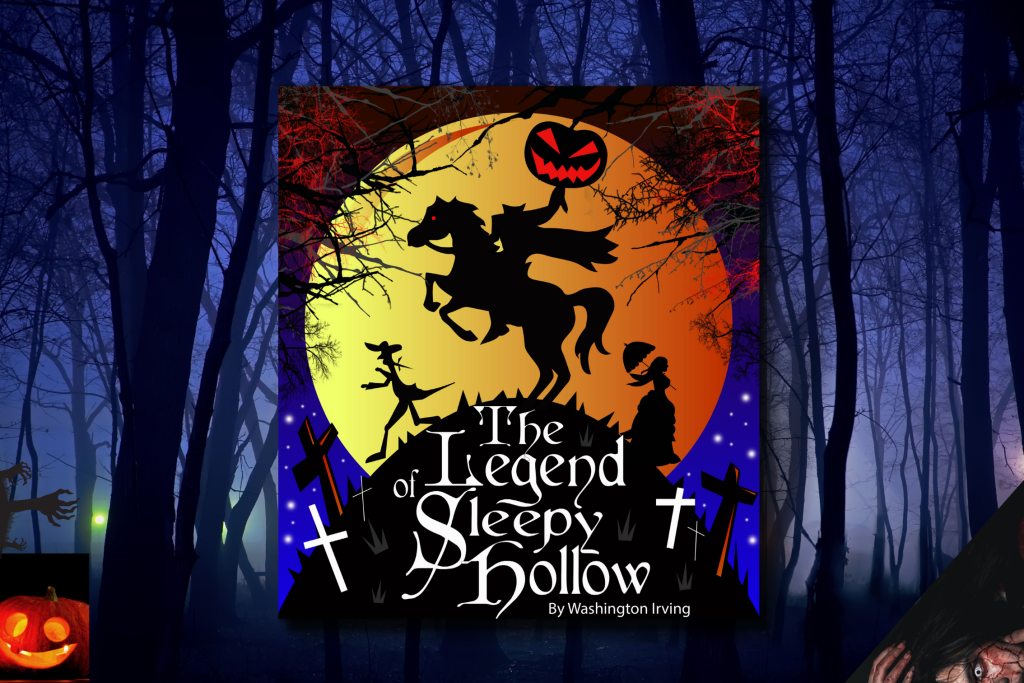
The Legend of Sleepy Hollow, Washington Irving’s iconic work of science fiction, has been simplified by Fiza Pathan and Michaelangelo Zane, with black and white illustrations by Farzana Cooper.
This edition’s target demographic is children aged 7 to 12. People in the quiet upstate New York valley of Sleepy Hollow live simple lives and experience horrific dreams about a Hessian soldier from the American Revolution. He is believed to like his nighttime rides around the ancient cemeteries and to be most active during the witching hours.
The people of Sleepy Hollow were intrigued by his story when they were children, and they are still hesitant to go out at night. When a very cruel and authoritarian school teacher from Connecticut, Ichabod Crane, arrives in town and becomes a much-hated instructor and ardent suitor of a young townswoman, the Headless Horseman takes a special interest in her affairs.
Undoubtedly, The Legend of Sleepy Hollow, Washington Irving’s renowned story about a ghost horseman, has long thrilled young readers, particularly in the fall when pumpkins may be seen in pumpkin patches and the days become shorter.
In this abbreviated version, Fiza Pathan and Michaelangelo Zane do a wonderful job of filling it up so that young readers who have grown up with the works of Rowling, Lemony Snicket, and other modern children’s authors will be drawn in.
Pathan and Cooper’s illustrations are excellent throughout the book. The black and white graphics provide a historical sense to the story, and as you read, you could be forgiven to assume that they were woodcut prints. Crane and his opponent Brom Bones’ amazing images assist to highlight how strange the attractive schoolteacher who appears to be doing everything for Katrina is.
You will surely love returning to Sleepy Hollow and marveling at the mystique of the Headless Horseman. It is strongly recommended that you read The Legend of Sleepy Hollow.
Check Out – The Legend of Sleepy Hollow
93. The Island of Dr. Moreau

Although considered one of the greatest English novels and the inspiration behind numerous spectacular films, this early work by H. G. Wells elicited howls of outrage from critics who saw it as horrifying and blasphemous in 1896.
In contrast to its propensity for abuse and horror, they were intrigued by the astounding scientific possibilities portrayed in his debut novel, The Time Machine. Edward Prendick, a shipwrecked sailor, finds himself alone on a Pacific island controlled by the famed Dr. Moreau. In the novel The Island of Dr. Moreau, he must cope with terrible secrets, strange beasts, and every reason to run for his life.
Wells’ predictions of the ethical concerns raised by creating “smarter” people or resurrecting ancient creatures would surprise modern readers who are conversant with genetic engineering. While this engrossing novel was supposed to be a meditation on evolution, divine creation, and the battle between human nature and civilization, it was not completed.
These several levels of interpretation enrich Prendick’s experiences on Dr. Moreau’s island of lost souls without detracting from the overall enjoyment of the novel.
To top it all off, it’s all wrapped up in a horrific horror thriller that will have you on the edge of your seat until the very last word. Bonus.
Check Out – The Island of Dr. Moreau
92. Ulysses

Ulysses has a solid reputation for being a witty, amusing, and irreverent masterpiece that praises the ordinary and is as much fun as any novel. It is frequently seen as the summit of the literary elite, and whoever claims to have read it – and, furthermore, to have liked reading it and returned for more – are occasionally met with suspicion at best, and outright skepticism, or even outright accusations of lying.
Is it because Ulysses cannot be read? Or, at the very least, difficult. And can anyone honestly enjoy something that is so incredibly hard?
Isn’t it more conceivable that reading this book—or claiming to have read it—serves as a type of admission ticket to an elite and extremely elitist literary society, membership in which allows the privilege to look down the noses of ordinary people?
Is there any other incentive to read it other than gaining entrance to this shady and egotistical academic society? Laughing at such silliness would be easy if such claims were not frequently made. The worst aspect about this foolishness is that it usually puts one on the defensive while discussing the book. One should not, either.
Everyone knows that Ulysses takes place in Dublin on a single day, June 16, 1904, popularly known as Bloomsday, and shows pretty ordinary people going about their ordinary lives. Modernity is frequently perceived as a dramatic break from what came before it, but more than a century later, we should be able to recognize both its radical nature as well as its ties to what came before.
After all, during the nineteenth century, the likes of Jane Austen, George Eliot, Gustave Flaubert, Anton Chekhov, and many other novelists sought to find the extraordinary inside the routine. Joyce was far from the first to do so, but was certainly one of the most successful at giving us an unforgettable work of literature.
“The book that’s most influenced me.”
Neil Strauss
Check Out – Ulysses
91. Ivanhoe (Waverley Novels #5)
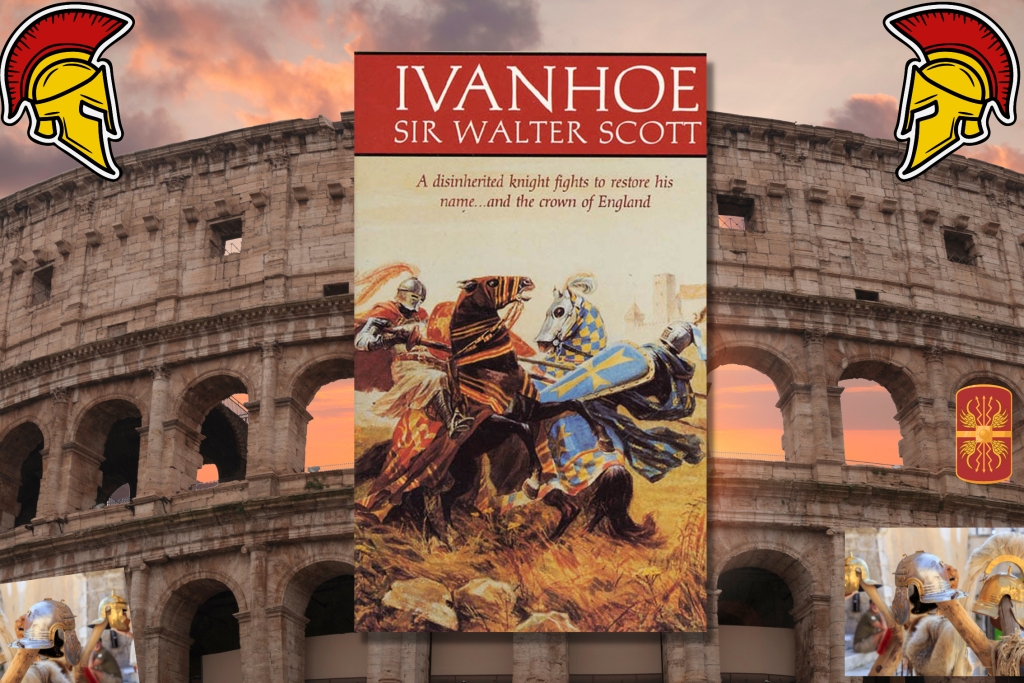
Sir Walter Scott wrote the historical novel Ivanhoe, which was first published in three volumes with the subtitle “A Romance” towards the end of 1819.
In the classic tale of chivalry and courtly love, the disinherited knight Ivanhoe, his fair mistress Rowena, and legendary figures like Richard the Lion-Heart and Robin Hood appear. This historical fiction novel about the Crusades, knights, and courtly love both recreates and creates history.
For this work, Scott relocated far away from the backdrop of his own tough era. Instead of employing the Scottish settings from his past works, he returned to the late 12th century and England. Here, he recognized a link between his modern issues and the structure of Ivanhoe.
Scott linked together the themes of historical reality and medieval romance, social realism and epic adventure, and indeed the past and present.
Ivanhoe offers vivid depictions of contests, outlaws, a witch trial, and tensions between Jews and Christians.
It is credited with popularizing romance and medievalism. It has also had a huge impact on how people currently understand Robin Hood, King John, and Richard the Lionheart.
Ivanhoe, dubbed “the great epic of our century” by Victor Hugo, was an instant success upon its original publication in 1819. The book inspired paintings, dramatizations, and even operas, as well as literary parodies. Unsurprisingly, Sir Walter Scott’s grand dream of medieval England has inspired a stunning new television production in recent years.
Check Out – Ivanhoe (Waverley Novels #5)
90. A Connecticut Yankee in King Arthur’s Court
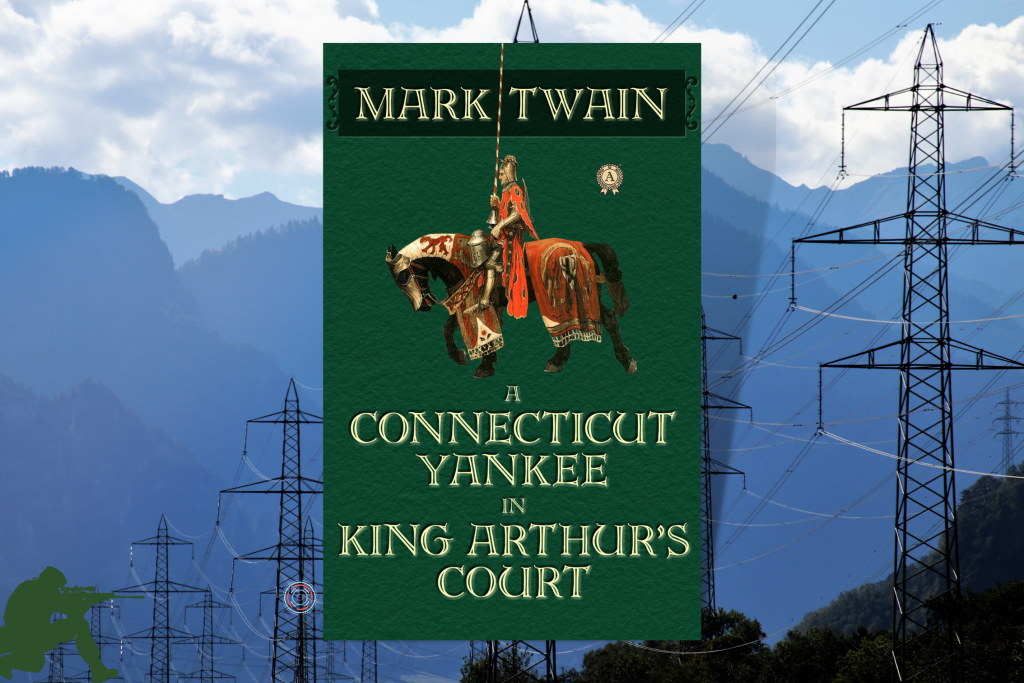
At the start of one of Mark Twain’s most brilliant satires in American literature.”A Connecticut Yankee in King Arthur’s Court,” Hank Morgan, a competent mechanic at a nineteenth-century New England armaments factory, gets knocked on the head during a brawl and awakens to find himself among the knights and wizards of King Arthur’s Camelot.
The “Yankee” undertakes an ambitious plan to modernize Camelot using 19th-century technological marvels like electricity and firearms, proclaiming boldly that he will “control the entire country within three weeks.” Suddenly, all hell breaks loose!
Mark Twain’s A Connecticut Yankee in King Arthur’s Court was one of the earliest works of fiction to merge genres and one of the first to involve time travel. It was released in 1889. Twain’s most famous story is also one of his most unique. Despite the Old World backdrop of the novel, Twain utilizes it to launch a social critique on current life.
Even while it has traces of the gloomy cynicism that would fully materialize in Twain’s later writings, the novel continues to be remembered mostly for its tremendous leaps of imagination, dazzling humor, and engaging storytelling.
Check Out – A Connecticut Yankee in King Arthur’s Court
89. Candide

Voltaire’s most famous and widely read novel; Candide, provides a satire on the pervasive intellectual views of the day. Although it may no longer be as significant, its historical relevance assures that it will carry on. Candide, a good-natured, open-minded young man, grows up in Baron Thunder-ten-castle. Tronckh’s tutor Pangloss teaches Candide the Optimistic worldview, which claims that everything turns out for the good in a world carefully monitored by a loving God.
Unfortunately, Candide is banished when the Baron sees him enjoying a private moment with his daughter. Candide, on the other hand, doesn’t seem to mind being left behind. Because of his optimism, he is content to accept whatever life throws at him and to face any difficult decisions with indifference.
Later, he gets enrolled in the Prussian army and exposed to the brutalities of combat as a result of his mentality.
Even in this brief book, Voltaire manages to write in numerous simultaneous approaches. A detailed assessment of all that is going on would undoubtedly demand a book way longer than Candide! For instance, Leibniz, a German mathematician and philosopher, is critiqued and ridiculed in Candide for his optimistic outlook. Hence, Candide’s journey from both natural and man-made disaster to disaster mocks the almost unrealistic worldview he embraced as a young man.
Voltaire, one of the most influential minds in Western history, was instrumental in the early stages of the Enlightenment. He was a gifted fiction writer who believed in pragmatism and the scientific process. His work did not just express his views on philosophy, politics, religion, and the law.
Despite their range and relevance, his novels are not generally read today. This is due to a number of reasons. One was his propensity for penning short, effective pieces rather than the vast works of his intellectual predecessors, which made collecting and organizing them difficult. Hence Candide, his satirical novella, is by far his most popular and longest-lasting work and the most translated.

“A light hearted satire that pokes fun at optimism, philosophy, politics, and power.” – Ryan Holiday
Check Out – Candide
88. Great Expectations

Great Expectations is one of Charles Dickens’ most well-known and beloved works. As you might already know, Dickens was a famous Victorian literary master. With all of Dickens’ other great writings, Great Expectations shares his brilliant use of character and plot, as well as his amazing sensitivity and empathy for the evolution of the British class system in the nineteenth century.
Pip, a young man from a lowly family, is the book’s protagonist, and a mysterious benefactor offers him the opportunity to become a gentleman. Great Expectations depicts the Victorian class difference fascinatingly, as well as having a beautiful sense of humor and tragedy.
Further topics accurately depicted in Great Expectations include the class difference and the corrupting consequences of money. The novel clearly states that money cannot buy happiness or real love. Joe, the husband to Pip’s sister, is one of the book’s happiest and most morally honest characters. And Miss Havisham is one of the wealthiest people in the world (as well as the most unhappy and loneliest).
Pip believes that if he can only be a gentleman, he can have anything in the world. His whole financial structure was built on Magwitch’s dishonest earnings, causing his entire world to crumble. Pip too realizes the true value of life.
Great Expectations has some of Dickens’ most memorable characters as well as one of his most complex plots. The novel is both a good read and a good morality tale. Great Expectations is a brilliant depiction of a time and place filled with passion, daring, and hope. At its best, it offers a realistic and critical evaluation of the English class system.
“You get something new every time.”
Oprah Winfrey
Check Out – Great Expectations
87. The Odyssey
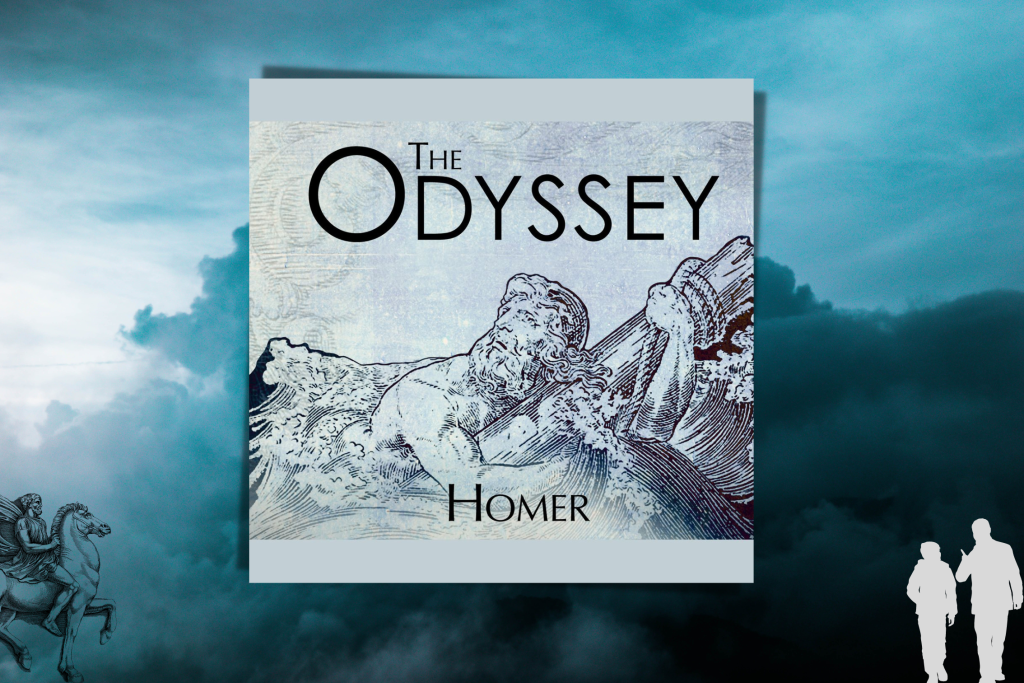
The epic Odyssey was written by Homer. One of the finest epic tales revolves around a hero who faces several difficulties and trials but overcomes them. The tone of appreciation adopted by the author throughout the novel enhances the hero’s persona. Supernatural abilities that influence the course of all the events in the book are a defining feature of the epic tale.
The Odyssey, which comprises 24 books, comes after the Iliad. It tells the tale of how Odysseus used the Trojan Horse to combat and ultimately vanquish Troy.
The relationship between a father and son, the place of women, the value of hospitality, and the use of disguise are some of the book’s primary themes. As a result, the narrative has endured for ages.
As they say, “like father, like son.” The Odyssey, an epic tale, demonstrates this. The primary character of the novel is an old man named Odysseus.
As a result of his courageous action in defending Ithaca’s honor, he has been able to win the admiration, valor, and glory of his people. Due to his reputation as a perfect guy with a great degree of wisdom and manner, this character causes Odysseus to be revered all over the world.
Telemachus, the son, embarks on his own mission in an important subplot to Odysseus’ return to Ithaca.
By evaluating this subplot as well as Telemachus’ personality and challenges, the reader might predict how Ithaca will be following Odysseus’ death. Consequently, Ithaca will be safe under Telemachus’ leadership since the son will succeed his father in terms of charismatic and fearless leadership. Excellent reading!
Check Out – The Odyssey
86. Hedda Gabler

Hedda Gabler is a play written by Norwegian writer Henrik Ibsen.
Hedda Gabler, the aristocratic General’s daughter, just returned from a honeymoon with George Tesman, an ambitious young professor who is loyal but not terribly bright, and who mixed their vacation with work. When Tesman’s intellectual competitor Eilert Lovborg shows up, their lives become hectic.
Hedda Gabler, written in 1890, is a high point in Ibsen’s creative career. In his “social dramas” of the prose period, Ibsen created fully formed and realistic characters, but Hedda Gabler represents the only psychologically sophisticated play he ever made. In A Doll’s House, Ibsen expanded his study of the feminine character in a male-dominated society to cover the entire pathology of the social female.
Although Hedda Gabler is a classic example of distorted femininity, her situation illustrates what Ibsen saw as a wounded society prepared to sacrifice the freedom and creative expression of its most gifted individuals for the sake of self-interest.
The novel is considered a classic of realism, nineteenth-century theatrical, and world theater. The book’s title heroine, Hedda, is widely recognized as one of the finest and tragic characters in theater.
Check Out – Hedda Gabler
85. Paradise Lost

The best epic poem ever written in English, John Milton’s Paradise Lost, has divided critics, yet its impact on English literature is second only to Shakespeare’s.
Few people nowadays read Milton’s Paradise Lost. Nonetheless, even after 350 years, this epic poem remains a work of remarkable creative genius that has influenced English poetry today.
Milton invokes the souls of blind prophets in Paradise Lost by referring to ancient Greek mythology. He cites Tiresias, the oracle of Thebes who sees in his mind’s eye what physical sight cannot, as well as Homer, the author of Western literature’s first great epics.
Paradise Lost narrates the tale of man’s exile from Eden and the battle for heaven in more than 10,000 lines of plain poetry. Its twelve parts represent an ambitious effort to understand the destruction of paradise from the viewpoints of man who has fallen from grace and the fallen angel Satan.
The poem is a profound reflection on disobedience, longing, and the need for salvation, even for readers living in secular times.

“The mind is its own place and of itself can make a hell of heaven, and a heaven of hell. – Peter Thiel
Check Out – Paradise Lost
84. The Adventures of Huckleberry Finn (Adventures of Tom and Huck #2)
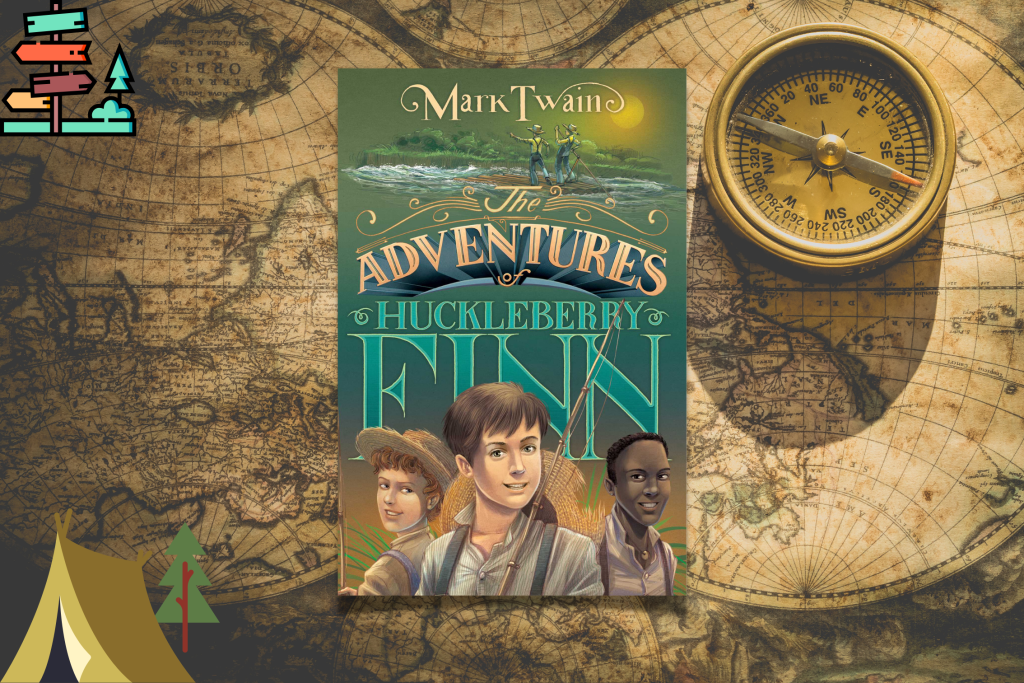
Every time we try to see a work as vast and dynamic as The Adventures of Huckleberry Finn, some of it always escapes us. This book is the most difficult work of literature to accurately characterize. This is owing to its diversity and complexity, as well as its relatively young form.
In truth, it is often easiest to think that the novel does not exist at all, but only the experience of reading it, separate from its physical presence, which comprises paper, ink, glue, covers, and so on. Every time we read Huckleberry Finn, we read a different book, and every time we read it, we read a new book.
No character in any of these books is the actual Huckleberry Finn, but they all sort of are. Huckleberry Finn is fundamentally a story about real people dealing with real moral and ethical dilemmas and making real decisions. These people are placed in a society that we can all agree oozes an air of authenticity, and the whole thing is handled, for the most part, as honestly and realistically as is humanly possible.
However, we would like to go beyond this first characterization or definition of Huckleberry Finn and propose that the book could also contain other components that are just as crucial for a comprehensive understanding.
In terms of geography or space, time, and intensity, I would want to explore the book in three different angles: in time, by examining how much Huckleberry Finn mimics an ancient literary form much older than the novel, the epic poem; and in degree, by evaluating just how much Huckleberry Finn surpasses its position as a realistic novel and assumes the forms and qualities of metaphor.
In space, by considering some of the ways the book stretches beyond its position as one of the masterpieces of American fiction and becomes, if the term be allowed, a global narrative.
Check Out – The Adventures of Huckleberry Finn (Adventures of Tom and Huck #2)
83. The War of the Worlds
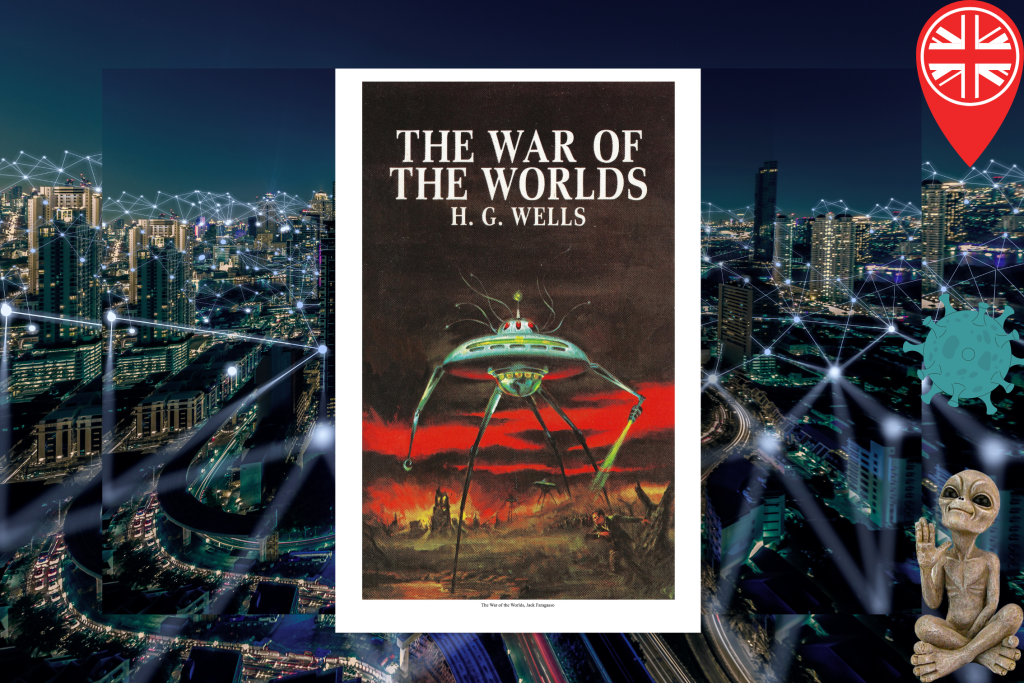
After being serialized in US and UK media in 1897, H.G. Wells’ science fiction classic The War of the Worlds was first released as a book in 1898. Wells had already written The Time Machine, The Island of Doctor Moreau, and The Invisible Man. Although The War of the Worlds was not the first novel to mention Martians or alien invasions, it was among the first and had a significant influence. It has always been published.
Martians with advanced technology attack Earth and settle in southern England, according to the story. They handily beat the British military. However, because they are unable to breathe our air and lack antibodies to our illnesses, bacteria and infections, the aliens are eventually eliminated.
You might be surprised to learn that literary critics commonly compare The War of the Worlds to literature about European invasions. In the novel’s opening, Wells makes reference to this concept, drawing parallels between his imaginary alien invasion and the British attacks of Aboriginal people in Tasmania in the 1820s and 1830s.
Unsurprisingly, since its release in 1953, The War of the Worlds has been adapted into seven films, as well as countless TV shows, video and computer games, radio plays, and comic books. Some of these usually change the setting. Both the 2005 film starring Tom Cruise and the 2019 Fox miniseries reinterpreted the original story in a modern setting. The story’s action was moved from southern England to New Jersey, and then to California.
Wells’ plot twist, in which Martians lack resistance to Earth’s microbes, appears to have influenced films that aren’t adaptations of his novel. In the 1996 satire Mars Attacks!, the invaders are defeated by a country song. A computer virus proves to be their undoing in the 1996 film Independence Day. In the 2002 film Signs, they are defeated by water. The frequency of the deaf character Regan’s cochlear implant in the 2018 film A Quiet Place bothers the aliens to utter discomfort. None of these are exact copies of Wells’ narrative, but they all follow the same pattern: alien invaders are prevented by common Earth objects or items.
The War of the Worlds had a significant impact on the sci-fi genre, which was known at the time as “science romance.” Alien invasions and science-fiction parallels to Wells’s novel became popular. Throughout the 1930s and 1940s in the United States, authors like Isaac Asimov, Arthur C. Clarke, Robert A. Heinlein, and others wrote stories of alien invasion, a time known as the “Golden Age of Science Fiction”, and whose influences we continue to enjoy to this day!
Check Out – The War of the Worlds
82. The Innocents Abroad
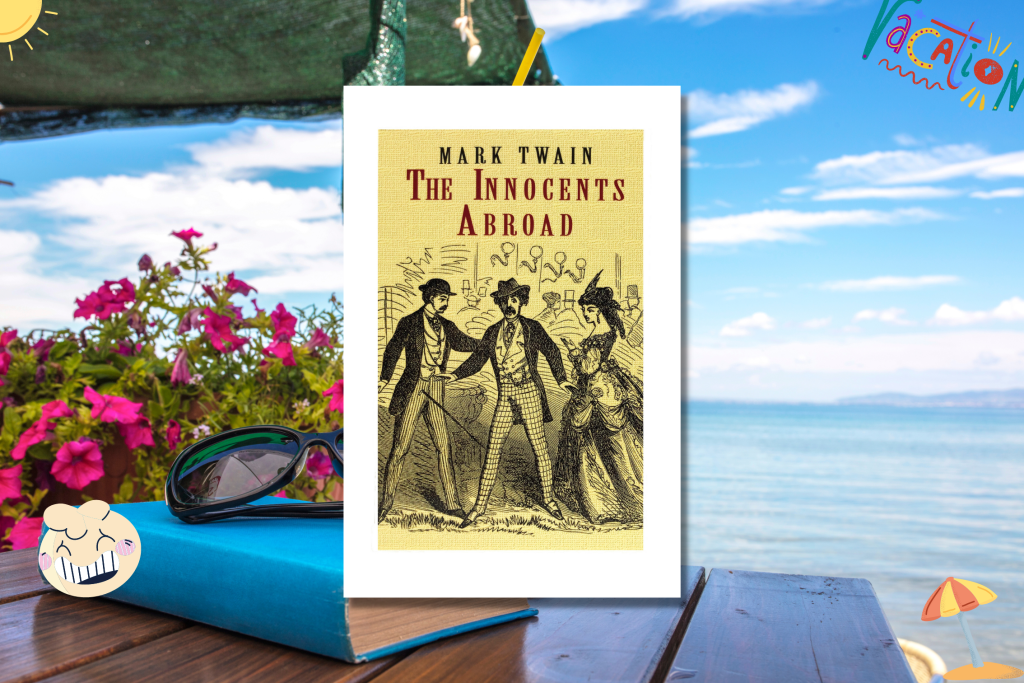
The Innocents Abroad was fittingly dubbed “an oasis in the desert of overseas travel magazines” by The New York Herard. The Innocents Abroad was a tremendous smash when it first came out, and it remained Mark Twain’s best-selling book for the remainder of his life. It shows the author at the peak of his literary prowess as he provides razor-sharp, sometimes humorous appraisals of the people he meets and the sights he visits while traveling across Europe and the Holy Land in 1867.
The book, which began as a compilation of travel stories for a San Francisco newspaper, provides a vivid and honest description of places such as Marseilles, Tangier, Gibraltar, Rome, Constantinople, and Damascus.
Twain’s wit is particularly scathing toward tourists who describe their vacation exploits based on travel guidebooks rather than genuine observations. The book mixes between comical and serious portions that cover history, statistics, and descriptions of religious relics, literary masterpieces, and architectural monuments.
This timeless classic will captivate a wide range of readers, including lifelong admirers of the American comedian and anybody who appreciates an amusing and educational travel book. It includes maritime adventures, seeing the “outrageous” cancan in Paris, and seeing the prominent landmarks of Venice, in addition to admiring the majesty of St. Peter’s, climbing Vesuvius, and examining the remnants of Solomon’s Temple.
This version also includes all of the artwork from the original release.
Check Out – The Innocents Abroad
81. Frankenstein

Mary Shelley wrote Frankenstein; or, The Modern Prometheus when she was just 19 years old. It is often regarded as the most well-known and enduring creative work of the Romantic era, if not of the last 200 years.
It was first published in 1818 with only 500 copies and has never been out of print, inspiring countless authors, theatrical producers, and film directors to rewrite the myth of Prometheus being created by man to reflect the thrills of scientific idealism and the fears of ambitious plans gone horribly wrong. Frankenstein continues to inspire cautionary tales, fear alien and alienation metaphors, and label any partially recognized human as the “other.”
Frankenstein captures our attention with the force of its astounding fantasy and wide range of ramifications. This including the definition of “monster,” judgments that derive morality or villainy from class origins and accidents of physical appearance, creators’ responsibility to and for their creations, society’s responsibility for the outrage of those to whom it refuses care, compassion, or even just decent regard, and the relationships between parents and children.
Everything is presented in an uncanny, magnificent manner.
Frankenstein still remains the most terrifying story we have, and continues to fascinate our imaginations because it taps into our most fundamental fears about the thin line between life and death, as well as our failings in the face of great ambitions.
Check Out – Frankenstein
80. The Metamorphosis

The Metamorphosis, Franz Kafka’s most famous work, was composed in three weeks in the latter months of 1912 and published three years later, in 1915.
The brief novel tells the tragic and unnerving story of Gregor Samsa, who wakes up one day to discover that he has been transformed into a huge insect or vermin. The reader is drawn into the story by the clear manner in which this change is described and the surreality of Gregor’s reaction to it.
The Metamorphosis entered the literary world as a one-of-a-kind expression, simple in outline but timeless in its appeal to unveil the gloomy depths of the human subconsciousness. (However, Kafka did not live to witness or imagine it to become a cult.)
The book is a conventional examination of the regions where a literary work and its creator overlap. Kafka’s characteristic style of including surrealistic elements in stories shows that he developed this writing style as a result of the reality imposed on him by strong people in his life. The novel is comparable to his previous works in terms of protagonists facing an existential crisis, acute guilt, or detachment from a world incoherent to their mismatched creative talents.
After reading The Metamorphosis, you will definitely remember it for years to come. Kafka brings the reader to a world where a single strange encounter significantly alters a man’s life. Gregor is extremely sympathetic because of his troubles with humanity, how his family treats him, and his continued sorrow under the circumstances.
However, his new form as a massive insect—possibly a cockroach or another type of flying insect—makes him unappealing and impossible to accept as a human.
This book will leave readers wondering how and why this change happened. Fortunately or sadly, there is no simple solution to this issue. In fact, it has kept readers guessing since it was originally published in 1915.
Check Out – The Metamorphosis
79. Treasure Island

Nobody needs to be told the story of Treasure Island. Robert Louis Stevenson’s novel defined the pirate narrative, as well as the treasure hunting story, the mutiny-on-the-high seas story, and the adventure story in general for both children and adults. At least a dozen films have been based on Treasure Island, not to mention numerous television shows, cartoons, parodies, and sequels.
But what makes this story so popular?
It is, without a doubt, a fantastic adventure. Jim Hawkins and his mother uncover a treasure map amid the remains of a dead pirate at their inn. Young Jim goes out with his sponsor, Squire Trelawney, to find the treasure while avoiding a gang of thugs out for the map.
Long John Silver’s role as the protagonist, on the other hand, is what makes the story so spectacular. Rather than just having a bad villain thwart the adventurers, Stevenson has created a person that is eternally mysterious and intriguing.
You never know how much goodwill he has or how much he is doing for his own profit, even if he is a cold-blooded killer who befriends Jim to fight the purely despicable people.
He helps save the innocent, yet he still pulls a quick one and grabs part of the riches for himself.
There is never a shortage of exciting stuff, encompassing murder, mystery, greed, cunning, and heroism—with, of course, good ultimately triumphing. As they say, it’s a rip-roaring story that is wonderfully told. The intricate details of the characters, narrative, and dialogue create a spooky and terrifying environment you couldn’t possibly conceive.
Check Out – The Treasure Island
78. Dubliners
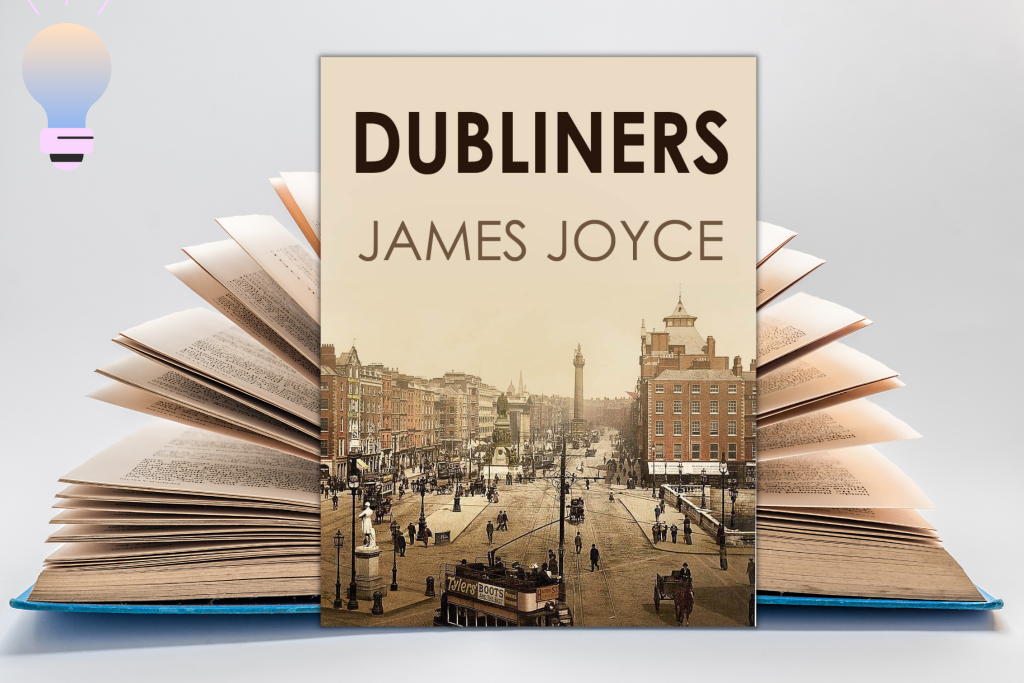
Dubliners is a terrific collection of stories that you may revisit at different stages in your life and appreciate on different levels each time.
The compilation begins with stories told by small children and progresses to stories about the lives and troubles of progressively older people. This is consistent with Joyce’s categorization of the collection into three parts: childhood, adolescence, and maturity.
The stories are built around still moments that each immediately shed light on an insight into the people or their lives, making them frequently unclear and, at times, barely stories at all.
Joyce sought and accumulated these self-illuminating moments for his later writing, referring to them as “eureka moments,” which are almost divine.
Contrary to popular belief, not all of them are subjective monologues. In truth, very few. Instead, in Dubliners, Joyce utilized what is often referred to as free indirect style, an important in-between voice that blends the characters’ first-person ideas with third-person accurate reporting of their activities.
Through the slow accumulation of stories about seemingly insignificant but small incidents in the lives of his Irish subjects, Joyce shows to readers the wide-ranging social network of Dublin at the time. Some of these individuals appear briefly in his later, larger works, including A Portrait of the Artist as a Young Man and Ulysses.
Check Out – Dubliners
77. The Autobiography of Benjamin Franklin
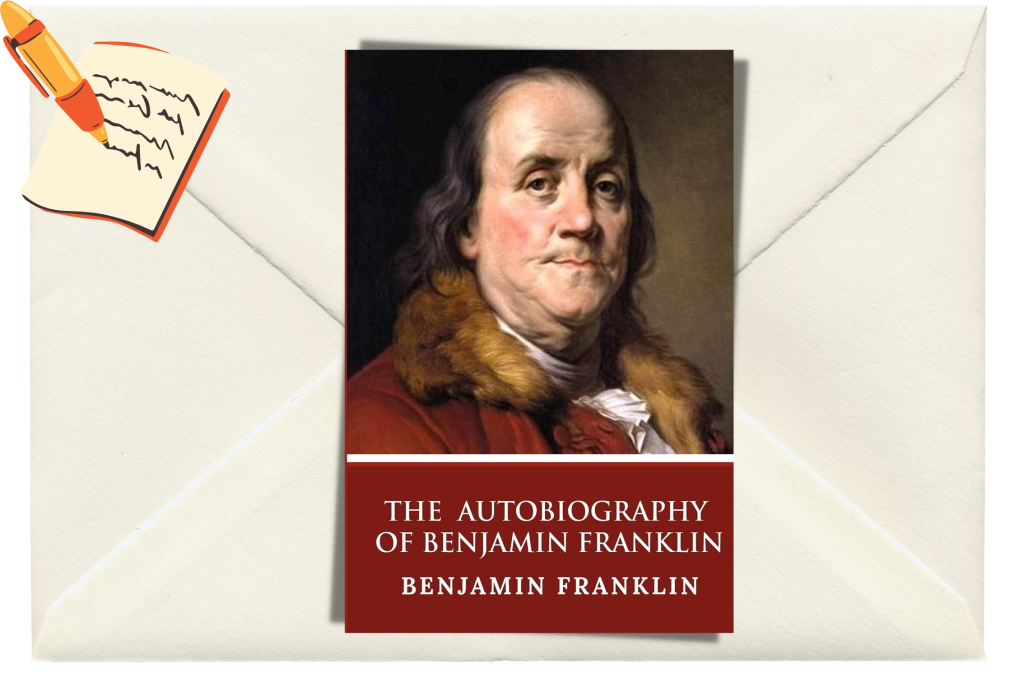
The Autobiography of Benjamin Franklin is a classic of eighteenth-century American history and literature, and it has probably had more influence than any other book by an American author. Franklin’s Autobiography, written as a letter to his son William, offers his ideas on politics, war, religion, education, financial success, and the role of women.
The editors of The Papers of Benjamin Franklin prepared this official version, which was meticulously transcribed from the original text in Franklin’s handwriting, which is now preserved in the Henry E. Huntington Library and Art Gallery.
With Leonard W. Labaree’s introduction, the autobiography is placed in both literary and historical contexts. In a new prologue, renowned Franklin scholar Edmund S. Morgan analyzes Franklin’s dual devotion as a citizen of the United States and a subject of an English king, as well as his emergence as a leader of the American Revolution.
This edition also includes a biography of Benjamin Franklin, a chronology of his life, and an improved bibliography.
Check Out – The Autobiography of Benjamin Franklin
76. The Secret Adversary (Tommy & Tuppence Mysteries #1)
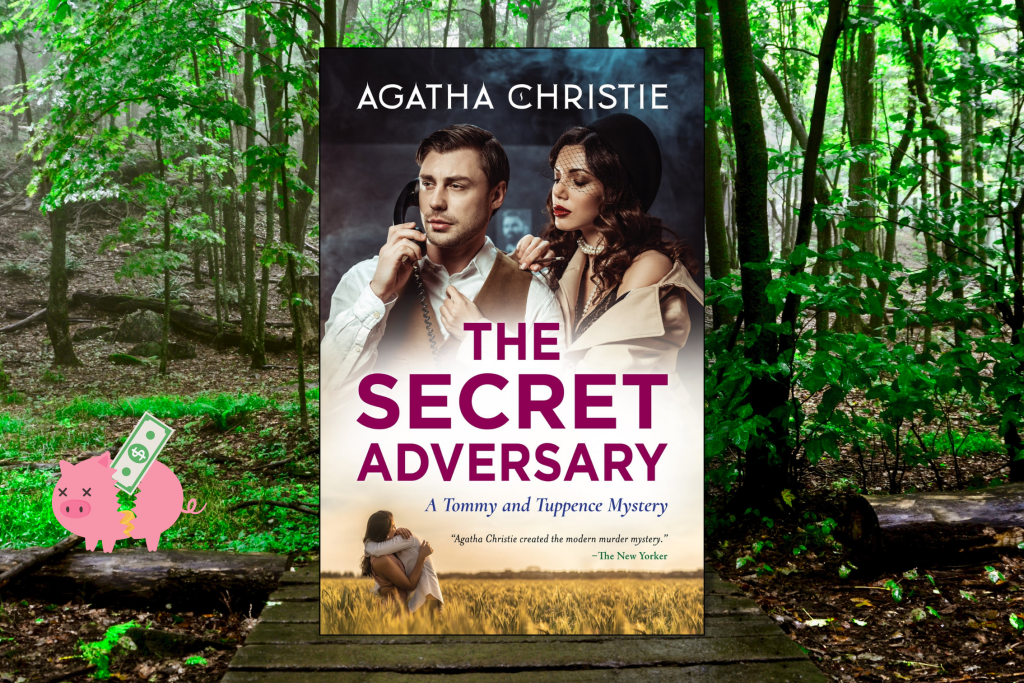
From the brilliant pen of Agatha Christie comes the first novel in her Tommy and Tuppence mystery series featuring the beloved sleuthing duo–now a movie on both Acorn TV and PBS.
Tommy and Tuppence are young, in love… and flat broke. Restless for excitement, they decide to embark on a daring business scheme: Young Adventurers Ltd.–willing to do anything, go anywhere. But they get more than they bargained for when their first assignment for the sinister Mr. Whittington draws them into a diabolical conspiracy.
It doesn’t take long for them to find themselves in more danger than they could have imagined, danger that may end both their lives and their business.
Check Out – The Secret Adversary (Tommy & Tuppence Mysteries #1)
75. The Murder on the Links (Hercule Poirot #2)
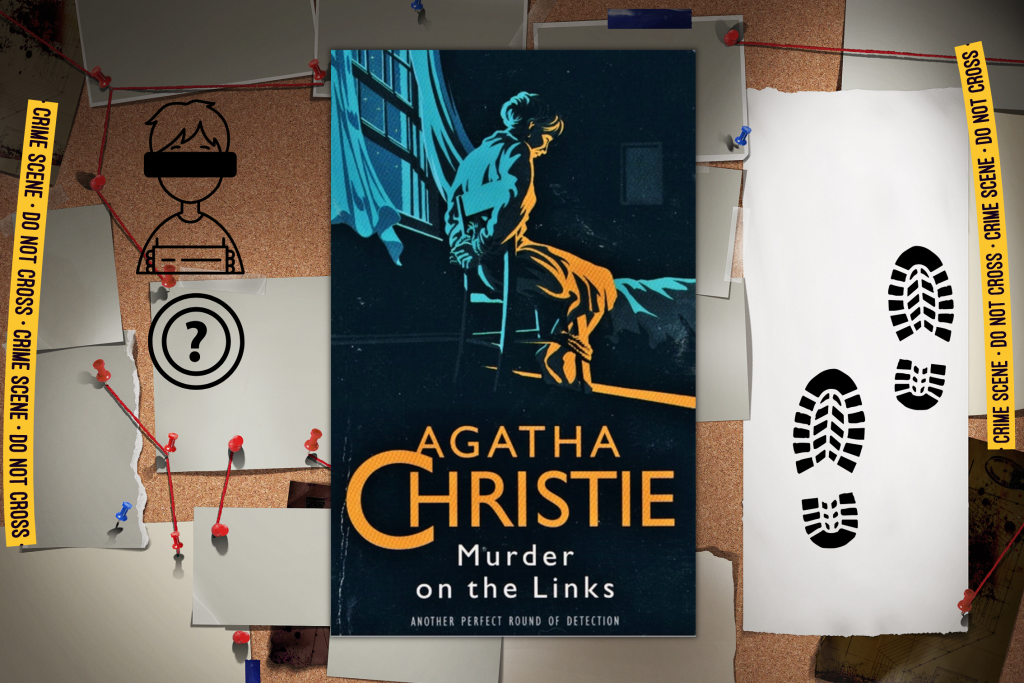
In one of her early Poirot books, Agatha Christie is at her best in The Murder on the Links. She has built a sophisticated plot that takes us on a journey full of twists and turns before uncovering the real perpetrator.
We won’t divulge every plot, twist and turn, but we will give you the bits to entice you to read one of Christie’s best novels. When affluent Paul Renaud writes a letter appealing for Poirot’s help and outlining how his life is in danger, Hercule Poirot and Arthur Hastings happen to be in England.
Poirot and Hastings leave quickly, only to be met by the police, who are investigating the murder of Monsieur Renaud. Madame Renaud had been discovered securely tied by two strangers who interrogated and then took Monsieur Renaud away. When his body was discovered in a freshly excavated grave, he had been stabbed in the back. With him, a letter opener given to Madame Renaud by her son Jack, who had been left for South America.
The rivalry between Poirot and Giraud, the Sureté detective who skulks around everywhere but ignores the piece of lead pipe close to the body, the expulsion of Jack and the chauffeur to South America, leaving only three female servants and an elderly gardener, a door left ajar, and a piece of paper bearing the name “Duveen” from a check are all amusing aspects of this story.
Who was the mysterious figure who entered Renaud’s study the night before he died? Why did he deposit 200,000 francs into the account of Madame Daubreuil, his neighbor and frequent visitor? Why did one bed’s footprints match the gardener’s boots but not the other?
As usual, there are several suspects. There are more shocks in store for the reader in this story before the conclusion, including a moment when Hastings goes against Poirot out of love. You should read this one very carefully, paying attention to the hints, taking the turns, and keeping an eye out for red herrings. Christie is at her best in this; it’s great fun!
Check Out – The Murder on the Links ( Hercule Poirot #2)
74. Three Men in a Boat (Three Men #1)
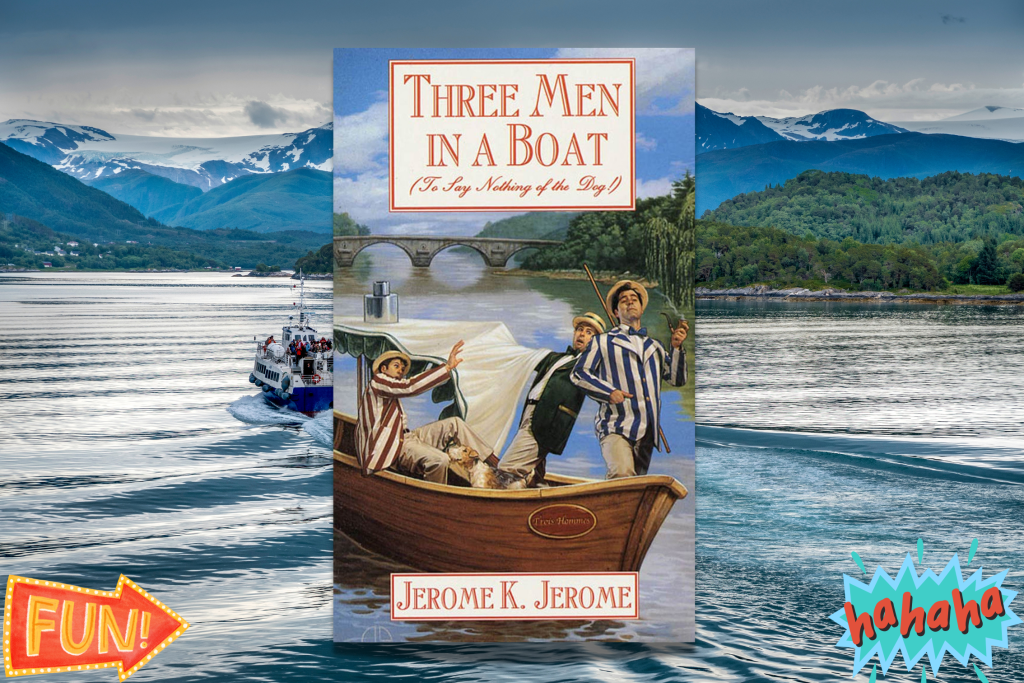
Three Men in a Boat, one of those beautiful masterpieces, has very little actual action, but it’s handled so masterfully that you never notice. The most amazing part of Three Men in a Boat is that it is a piece of Victorian fiction that genuinely makes you laugh out loud. Dickens and company may be witty, but Three Men on a Boat is truly funny.
The book was criticized at the time of release for its seeming “vulgarity” and simplicity, yet it is precisely because of this that it has such a modern feel now. There isn’t the same sensation of it being badly “written” as there is in so much other literature from the time, even though it is undeniably a masterpiece; rather, it feels more like we are reading a book that was written by another person talking about their boat expedition.
Reading something with such freshness more than a century’s worth of time is quite extraordinary; the legacy of a book that was previously considered exclusively suited for a less traditional target audience is truly astonishing. The story begins with Harris, George, and J agreeing that they are all very distressed and in dire need of a vacation, despite the fact that it is barely a story at all based on its writing style.
After much discussion about the benefits of various locations, the three of them decide to take a boat excursion, but only after the usual delays, misunderstandings, and fabrications.
To be honest, Three Men’s appeal comes from the stories that are told along the way rather than the summary. Three Men on a Boat was supposed to be a handbook, but it is so much more; it provides perspective into people who aren’t all that different from ourselves. The three men argue like babies, are absolutely useless, but have a lot of fun regardless.
Seeing how Harris, George, and J are clearly past childhood but obviously not adults makes you laugh out loud. The idea of the man-child male was obviously not a new innovation. You will be surprised to find out that Three Men on a Boat is a genuine comedic classic, and it may easily become one of your new go-to comfort novels.
Check Out – Three Men in a Boat (Three Men #1)
73. A Tale of Two Cities

Despite being one of the most widely read works in history, A Tale of Two Cities has a number of flaws. It’s a swashbuckling adventure that comes off as chaotic; it’s a “story,” but it’s a long one; it’s historical fiction, but it ignores most of the history; and, given its base material, it risks being similar to existing material in several ways. However, when done by a master, it becomes a classic.
It is from A Tale of Two Cities that we see one of literature’s most famous openings:
“It was the best of times, it was the worst of times, it was the age of wisdom, it was the age of foolishness, it was the epoch of belief, it was the epoch of incredulity, it was the season of Light, it was the season of Darkness, it was the spring of hope, it was the winter of despair, we had everything before us, we had nothing before us, we were all going direct to Heaven, we were all going direct the other way—in short, the period was so far like the present period, that some of its noisiest authorities insisted on its being received, for good or for evil, in the superlative degree of comparison only.”
The rhythm, parallel construction, and theme of the lines generate many questions regarding the future plot and sets the stage for the chaos to come.
What is the book all about?
Alexandre Manette, a former doctor, was released after serving an 18-year sentence in the famous Paris stronghold turned jail, the Bastille.
His adult daughter Lucie, who had long thought her father was dead, is taken aback by the news. She notices several changes in him as she is brought to him. Defarge, a former servant who now owns a wine shop in Paris, looks after him. Manette has suffered immensely as a result of his prolonged incarceration, and the drastic change especially terrifies him.
He doesn’t know any of the friendly faces around him, which confuses and scares him, and his only comfort comes from working tirelessly at his jail job of making shoes.
There is little doubt that one of Dickens’ many great talents is his ability to create a gripping scene. He creates an atmosphere for the reader to engage in the setting he is building for them. Dickens’ work is usually filled with drama and suspense. Unsurprisingly, the famous author deliberately focuses his skills in order to give certain chapters and moments in the story a lot of power.
We often imagine the French Revolution as a sudden outbreak of terror and carnage. Despite the fact that the storming of the Bastille and the end of the Reign of Terror were five years apart, A Tale of Two Cities begins 14 years before the Bastille. As a result, the first half of the novel, which is mostly set in London, is rather long. It is, however, a little choppy and jumps ahead several years at a time. The second half, set mostly in France during the Terror, moves quickly and with all the intensity and momentum one would expect.
Does the drama and intensity of the second part of the book compensate for the gradual buildup of the first? Frankly, it’s just enough.
But Dickens had all of this planned out in his mind. He envisioned a picaresque approach for the book. Thus, this should more than explain the time leaps, the effort to make important moments dramatic, the side stories, and even some ambiguity in the language to avoid getting caught up in historical facts.
Check Out – A Tale of Two Cities
72. The Awakening and Selected Short Stories
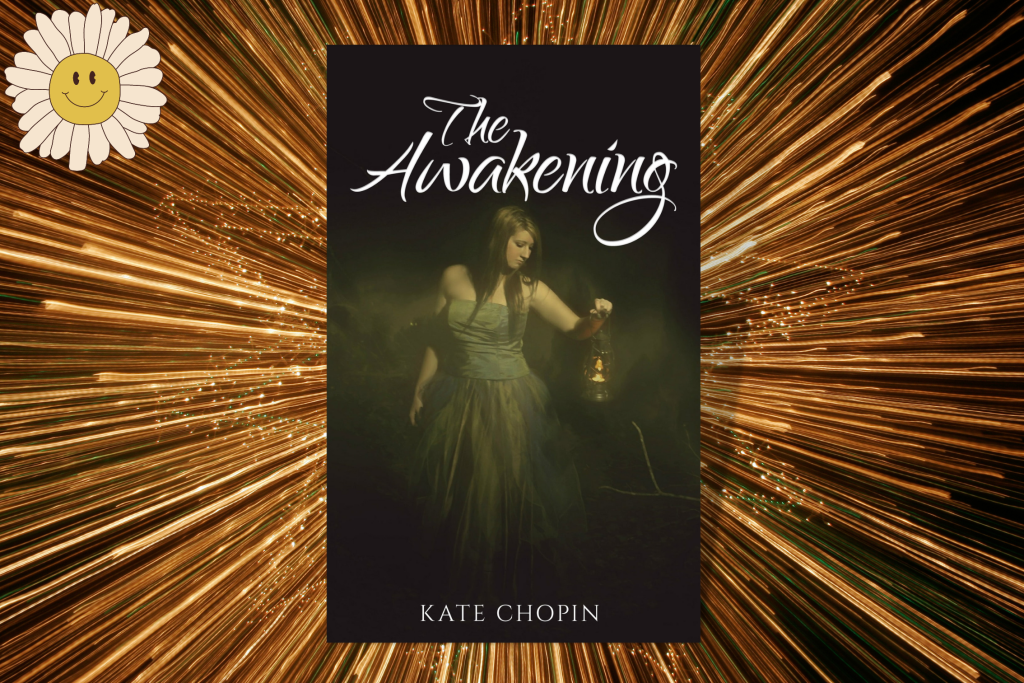
When Kate Chopin’s second book, The Awakening, was released, she had already gained a tremendous reputation as a writer, largely of short stories. This foundational book of early American feminism acted as a wake-up call to women across the country. It is the story of a married Louisiana woman who discovers the power of her own sexuality and battles to free it from the shackles of a patriarchal society towards greater personal independence and fulfillment in her life.
When it was first published in 1899, it was criticized as morbid, vulgar, and unpleasant; yet, it is today regarded as a great American work.
The book’s topics have been discussed by readers and scholars for a century, and there are several points of view. Some readers still have the same views as the book’s early critics, who attacked it for its immoral portrayal of adultery.
However, since the 1960s, the majority of academics and readers in the United States and many other countries have come to regard Kate Chopin as one of America’s key writers, and as “the first woman writer in her country to accept desire as a legitimate subject for serious, outspoken fiction,” in the words of Per Seyersted.
And, much as Edna Pontellier faced social marginalization for seeking to control her own sexual destiny, Chopin’s reputation suffered as a result of writing this book. Along with Chopin’s short pieces, The Awakening is today acknowledged as a classic that has inspired future generations of women to value their independence and uniqueness.
Check Out – The Awakening and Selected Short Stories
71. Oliver Twist
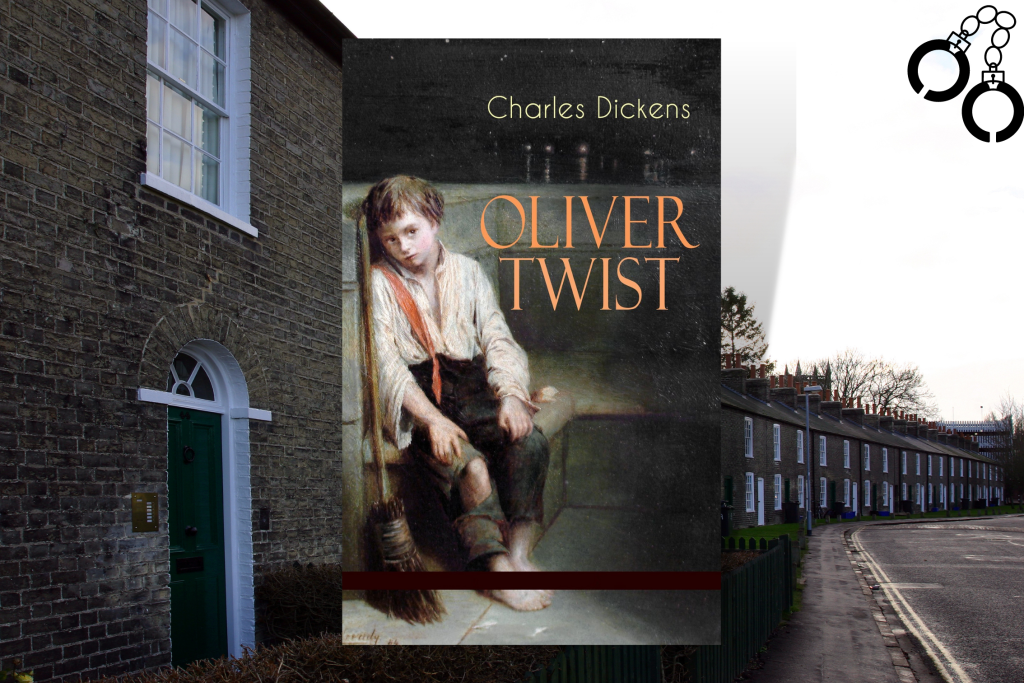
Although not his best or most beloved work, Oliver Twist is certainly the most well-known Dickens novel. It may also be the first book to have a child as the primary character, which is amazing given how many books have since featured children.
Given that The Pickwick Papers is discontinuous and only slightly different from his first collection of short stories, Sketches by Boz, it is also Dickens’s first real book. Oliver Twist can be split into several parts, including his difficult upbringing as an orphan, his early experiences with the gang of small-time thieves in London, his happy period of rescue and rehabilitation, his subsequent recapture by the gang, and his eventual re rescue.
Not to mention the stories of the wicked characters who surround Oliver.
The basic storyline is one we’ve all seen in movies and has become a staple of popular culture: the innocent kid who is abused by the authorities of the day, then organizations, and finally outright criminals. The orphan is holding out a bowl and pleading for more porridge.
The young man is walking to London. The hungry street urchin joins the colorful pickpocket gang led by the evil and pathetic Fagin and the flashy Artful Dodger. On several occasions, the little boy pursued and shot at as if he were a criminal. And finally, his role in the tragic deaths of Nancy, a good-hearted woman and the violent partner Bill Sikes.
Together with his other publications, it contributed to public attitude in England, resulting in the closure of workhouses, reforms to the laws controlling child labor, and improvements to the welfare system. It also highlighted the new Poor Law of the period, which ruthlessly tore apart poor families.
Of course, Oliver Twist is now read with less direct political intensity. Even though they have become cultural cliches for over 200 years, the characters are what we remember. Modern authors may still read Oliver Twist to learn how Dickens achieved this feat of mood and personality. Few others, if any, can match it.
Check Out – Oliver Twist
70. Wuthering Heights

Anyone with an interest in literature should read Wuthering Heights, which is widely considered as one of the best books ever written. Set aside any preconceived notions you may have got from failed film or television adaptation attempts. The original piece is still as powerful, shocking, and terrifying now as it was when it was first presented to an unsuspecting audience in 1847.
Wuthering Heights is a Gothic masterpiece of artistic vision stitched together by Emily Bronte’s literary talent. Readers were astounded back then, and it continues to amaze and captivate us now.
So, what makes it a must-read and why does it make this list? For starters, Bronte’s superb, fluid, contemporary prose, her delicious turn of phrase, the novel’s distinct setting and atmosphere, the novel’s standout romantic protagonists Cathy and Heathcliff, its striking supernatural undertones, and scenes that the reader will never forget. These are just a few of the compelling reasons to enter its dark world.
Although Emily was one of the finest, brilliant prose writers are not as common as you might think. In fact, it seemed impossible that a first-time author so young could write with such remarkable maturity.
She began it at the age of 19, and most Bronte scholars believe she finished it by the age of 24, which is a noteworthy achievement in and of itself. But it is the text’s complete modernity that stands out to everyone reading Wuthering Heights now. It’s written in the style of a book that was released a year ago.
Because her writing is fluid, direct, and confident, it appeals to readers of all ages. It occasionally has a screenplay vibe about it. Regrettably, it would be her only novel.

“I have read it at least 10 times since I was 14. In my opinion, the romance in it is scarcely found in books today.” – Chloë Grace Moretz
Check Out – Wuthering Heights
69. Pygmalion
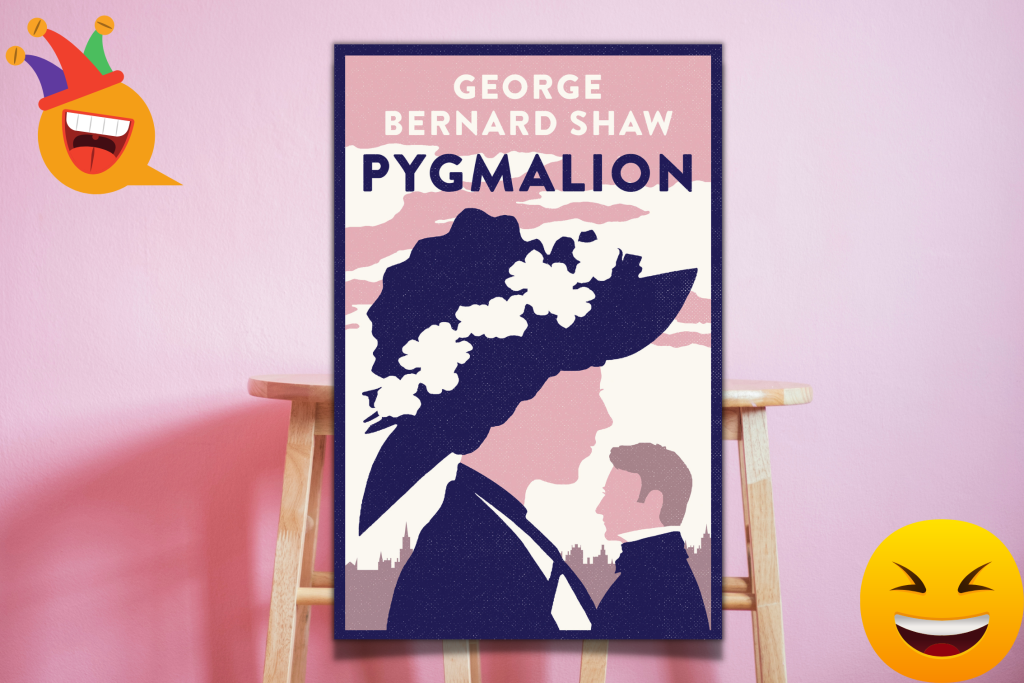
Pygmalion, one of George Bernard Shaw’s most well-known plays, was a great hit in the musical My Fair Lady and a resounding success in the London and New York theaters. It also made for a good movie. In an updated and extensively revised version of the classic Greek myth of Pygmalion and Galatea, the twentieth-century story makes fun of the archaic British class structure.
In Shaw’s brilliant adaptation, linguistics expert Professor Henry Higgins makes a wager that he can convert a clumsy cockney flower salesman into an educated young woman by simply refining her manners and speech. In the process of convincing society that his creation is an intriguing royal figure, the Professor also falls in love with his gorgeous brainchild.
Pygmalion is one of the most well-known comedies in English, combining the compelling notion of the developing butterfly with Shaw’s brilliant wordplay and great playwriting talents. It is still often performed and is an important part of college theatrical curricula.
Check Out – Pygmalion
68. The Iliad
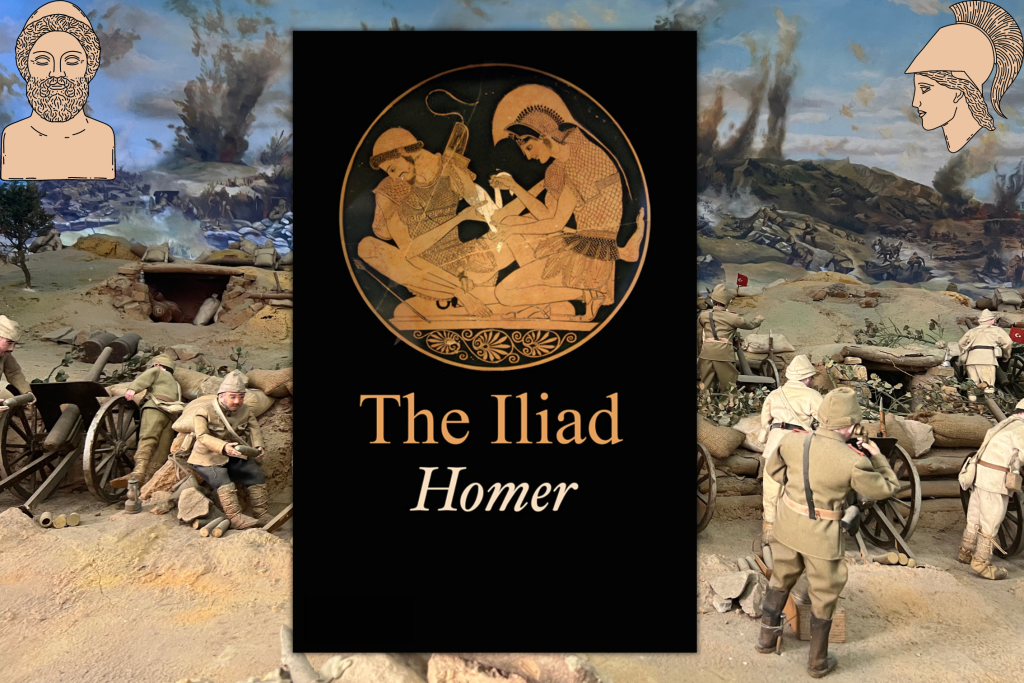
Homer’s epic poem The Iliad recounts the history of a long-ago war, gods and goddesses that no longer exist outside of our collective imagination, and a long-gone society. What everlasting lessons can we take from a masterpiece like this?
Historical perspectives
The Iliad has provided more information on ancient Greek civilization than any other single project. It is a historical work as well as a fantastic narrative. The Iliad has taught historians about the Trojan War, the key conflict of the period.
Although it is impossible to verify whether the Trojan War actually occurred as described in The Iliad, we do know that a conflict did occur during the same approximate time period and that the city of Troy was destroyed.
By uniting the neighboring city states and developing a Greek culture, the Trojan War signaled the start of an united Greek identity. Greeks’ obsession with the Trojan War led to the creation of a number of myths, folklore, and stories. The poetry of Homer captured this period of Greek identity building and sharing of ideas. Homer gave them a history and a voice by telling their tale in The Iliad.
Check Out – The Iliad
67. Roughing It

Mark Twain, Samuel Clemens’ pen name, set off on a tour of the West with his brother, Orion Clemens, in July 1861. He discusses the years 1861-1866 in Roughing It with his trademark wit and intellect, as well as some essential themes that feature in the majority of Mark Twain’s books.
Roughing It is a semi-biography and account of his exploits and escapades, victories and failures in the Wild West of the United States and even the Far West, written in 1870-71 and published in 1872.
The bulk of Mark Twain’s stories have humor, either because the people and situations are naturally hilarious or because he adds humor to them with his own distinct sense of humor. In Roughing It, Twain used metaphors and his imagination to explain what he sees in a way that makes daily life entertaining.
It was published before his most well-known works and is a humorous account of how the author sought to find money in Nevada rocks. It illustrates why he went on to become one of America’s most beloved authors of all time.
Many of Twain’s early escapades are described in the story, including a journey to Salt Lake City, gold and silver searching, real estate dealing, visiting the Kingdom of Hawaii, and his early writing career. As a result of his failed attempts to make it wealthy, he meets a fascinating range of personalities while navigating funny incidents and keeping his typical endearingly good humor.
A Connecticut Yankee in King Arthur’s Court, The Adventures of Huckleberry Finn, and The Adventures of Tom Sawyer are just a few of Twain’s memoirs that showcase his razor-sharp wit and rich imagination.
Roughing It covers everything from stagecoach travel to gold-hunting procedures. It is a classic addition to your Mark Twain collection and a beautiful example of how humorous the world can be when you’re on the road with the right person.
Check Out – Roughing It
66. Uncle Tom’s Cabin
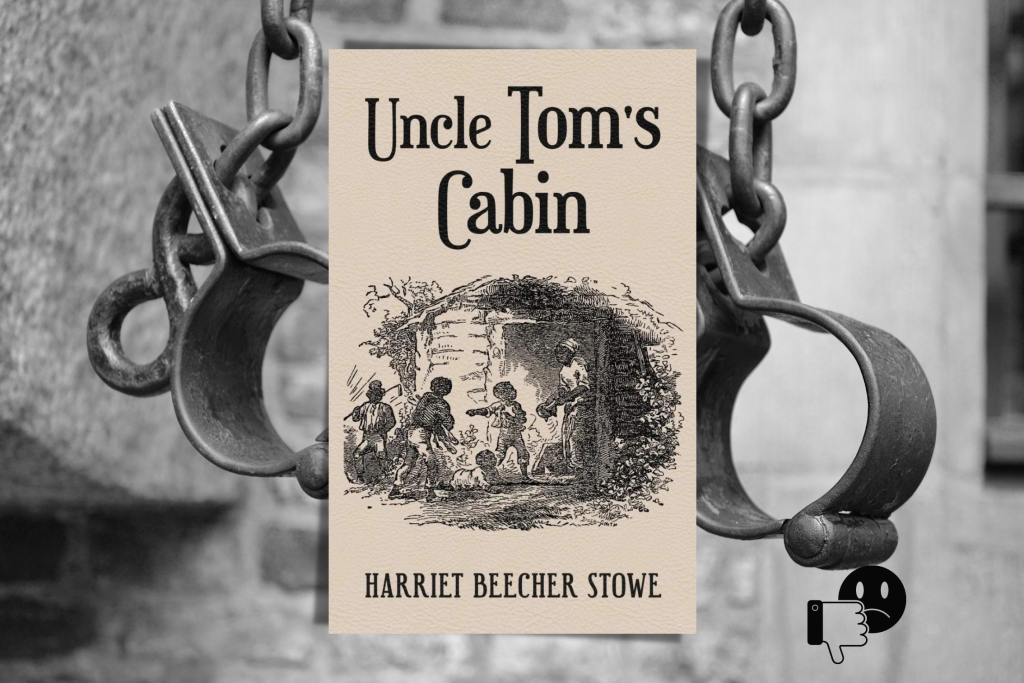
Uncle Tom’s Cabin, or, Life Among the Lowly, is a sensational novel by Harriet Beecher Stowe. It was first published in book form in 1852 after being serialized in the United States from 1851 to 1852. This abolitionist novel earned a lot of popularity, especially among white readers in the North, especially by realistically dramatizing what it was like to be a slave.
The protagonist of Uncle Tom’s Cabin and the titular character Tom, is an enslaved man who is presented as a saintly and dignified person who is honorable and loyal in his principles.
Later, Tom saves Little Eva, an innocent and forgiving little girl, when she is being transported on a boat to an auction in New Orleans. Little Eva’s grateful father later buys Tom. Tom and Eva become fast friends. Eva’s health, which has always been fragile, gradually deteriorates, and as she lies dying, she begs her father to free all of his slaves. His father agrees, makes plans but is killed later.
Tom’s new owner, the vicious Simon Legree, has him beaten to death for refusing to give the whereabouts of three escaped slaves. Because Tom maintains a constantly Christian attitude toward his own suffering, Stowe imbues Tom’s death with echoes of Christ’s dying.
Uncle Tom’s Cabin was an instant hit and was quickly adopted by abolitionists in the North, while it was fiercely hated in the South, making reading or having the book a highly risky activity. However, in the year after its publication, Uncle Tom’s Cabin sold around 300,000 copies in the United States; it also fared well in England. Stowe was warmly received in England in 1853 where she made friends with numerous notable authors.
Beginning in 1852, Uncle Tom’s Cabin was regularly adapted for the stage; this was made possible by the novel’s use of the themes and techniques of the then-popular theatrical melodrama. Both adaptations were watched by full theaters in the United States, adding to the book’s already tremendous popularity in the North and the South’s hostility to it. They remained a fixture of touring groups for the rest of the 19th century and into the 20th.
A Novel With a Specific Goal
When Harriet Beecher Stowe wrote Uncle Tom’s Cabin, she had a specific goal in mind: she wanted to convey the bad elements of slavery in a way that the majority of Americans could comprehend.
Harriet Beecher Stowe, who was involved in the abolitionist movement, believed that a convincing depiction of how slavery ruined society might deliver a moral message without alienating future allies.
Furthermore, by crafting a work of fiction that ordinary readers could relate with and featuring both sympathetic and evil characters in it, Harriet Beecher Stowe was able to send a very powerful message. Even better, Stowe captivated readers with a gripping, dramatic plot.
Check Out – Uncle Tom’s Cabin
65. Twenty Thousand Leagues Under the Sea (Capitaine Nemo #1)

In our opinion, there isn’t much better to read on the sand than Verne’s most famous work, Twenty Thousand Leagues Under the Sea. It has stood the test of time as a classic since it is both an escapism and a literary and scientific work. It would be unfair to dismiss it as just an adventure story. Verne’s voyage around the world is certainly entertaining, but it’s also a chilling tale of loneliness and despair, loaded with geographic and scientific precision to make the unbelievable seem uncomfortably possible.
The narrator, Professor Pierre Aronnax, is an oceanographic scientist on a mission to determine the animal (or other) nature of an unnamed monster attacking ships all around the world.
Aronnax is kidnapped by the Nautilus, a monstrous submarine that is their chosen target, along with his faithful companion Conseil and the jovial harpooner Ned Land. Captain Nemo, an enigmatic, secretive man who despises everyone who lives on land (for reasons that are mainly unclear until you read Jules Verne’s The Mysterious Island), is their captor.
Unquestionably, Nemo defines Twenty Thousand Leagues from the rest of Verne’s work. Nemo, the devil of the deep blue sea, prowls the oceans in his metal cocoon while in limbo, growling at ships and wrecks. His library of art, literature, and music reveals his admiration for human achievements, which contrasts sharply with his fierce hatred of civilized society. He’s definitely an intriguing, Byronic figure whose character depth is unrivaled even today.
Aronnax and Nemo’s relationship is an interesting tango between warmth and discomfort. At first, they are both delighted to meet another academic, but then all hell breaks loose.
Twenty Thousand Leagues Under the Sea may not be everyone’s cup of tea, especially because of its episodic chapters, but it makes for an excellent beach read. You will frequently be treated to memorable events, such as an encounter with a large squid, an underwater grave, and a visit to Atlantis. Verne’s detailed descriptions of geography and sea life offers you a strangely Victorian sense of the prospect of knowing about the unknown.
But behind all the fun is a sobering contrast made between Nemo and his sanctuary: the ocean, like the disturbed Captain, is a risky, unstable, and completely isolating power. After reading Twenty Thousand Leagues, you will never look at the ocean the same way again.
Check Out – Twenty Thousand Leagues Under the Sea (Capitaine Nemo #1)
64. Don Quixote
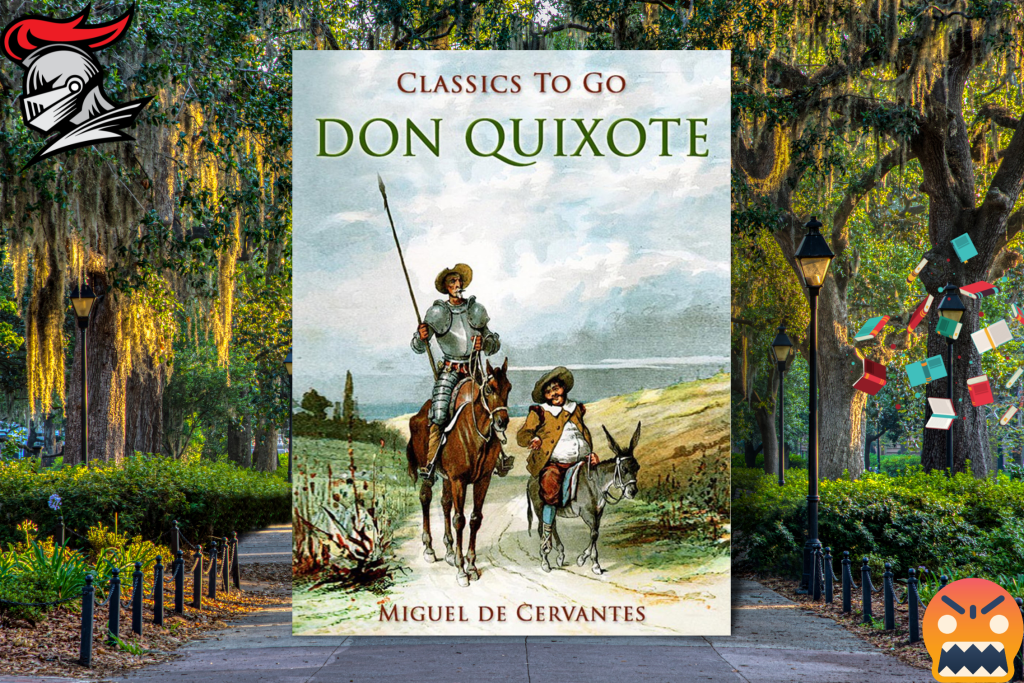
Don Quixote, the story of a Spanish knight who grew mad after reading too many chivalric romances, was voted the best book of all time in a survey of about 100 of the world’s leading writers. Almost 100 well-known authors from 54 different countries voted for the “most significant book of all time” in a survey conducted by editors at the Norwegian Book Clubs in Oslo. Despite being characterized as a “serious” work of literature, Don Quixote is loaded with farce and slapstick comedy.
The parts of the novel in which its titular hero incorrectly believes that sheep flocks are wandering opponents, windmills are giants out to harm him, modest country inns are mighty strongholds, and many other such strongly held beliefs provide regular, hilarious monologues. Most entertaining is Panza’s unwillingness to join in Don Quixote’s exploits, or “confounded whims,” as his servant refers to them. Panza is the patient squire of the knight errant.
It will keep you going all summer. Don Quixote is a big book, with an average edition having just under 800 pages (not counting the notes and introductions that usually accompany the text), which is more than enough to keep you reading all summer.
The chapters are sometimes brief, and Don Quixote’s disastrous “adventures” occasionally read like self-contained short novels, allowing you to pick up where you left off without having to repeat the previous chapter, therefore even if the book is vast, it never seems like a tedious slog (s).
Despite Don Quixote’s regular scrapes, this is not only a funny book. Cervantes addresses a variety of interesting issues while recounting his two characters’ misfortunes, such as the nature of friendship and love, morality and vice, religious belief, and—possibly—in a veiled allusion to the book itself—the influence that reading may have on our lives and imaginations.

“I read this book as a child and then, reread many times as an adult. And he’s my favorite character.” – Dr. Gabor Maté
Check Out – Don Quixote
63. The Call of the Wild
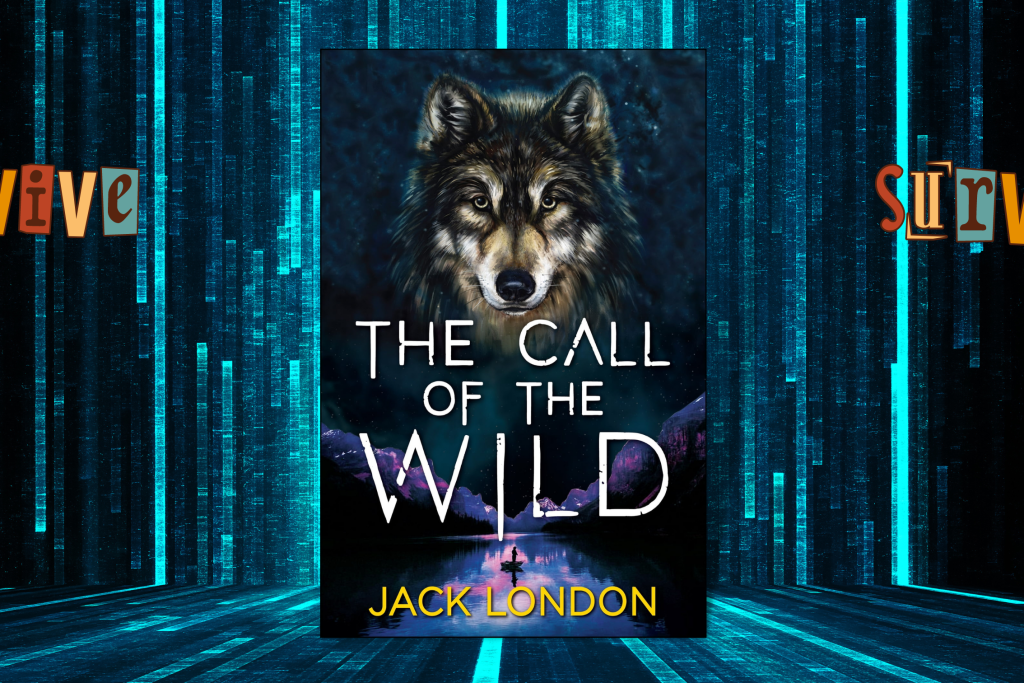
The children’s story “The Call of the Wild” by Jack London is an old one told from the perspective of a sled dog. And it’s fantastic.
London tells the narrative of the Klondike Gold Rush in the Yukon in the 1890s through the eyes of Buck, an outstanding St. Bernard and Shepherd mix, all while letting the reader feel all of the emotions. He writes historical fiction based on his own year spent looking for gold in a tough arctic environment.
London focuses on Buck, who is abducted from his lavish California home and carried to the harsh routes of Alaska and northern Canada before being sold to explorers.
Buck’s journey awakens in him the instincts of his wild ancestors and relies on his resilience. It contains club strikes, encountering new masters, food fights, brawls with other sled dogs, and survival battles. Throughout the adventure, he transforms from a beloved pet to an untamed and oftentimes angry animal.
This adventure story will appeal to people of all ages since it is cleverly written in nice simple language. We could go on and on about the advantages of reading “The Call of the Wild” to young people, including the lessons it offers about adaptation, inner strength, obedience to authority, and appreciation for the natural world. But this isn’t your usual children’s book.
London gives Buck high-order human thinking by anthropomorphizing him. Buck watches and absorbs the experiences of the men. He learns about human nature and what makes people good or bad. He figures out what it will take to dominate his peers and acts accordingly.
He recognizes that he must obey men’s rules in order to fit in and thrive in a society constructed by men. Buck effectively illustrates the existence of animals in an increasingly industrialized and governed world.
Check Out – The Call of the Wild
62. The Moonstone
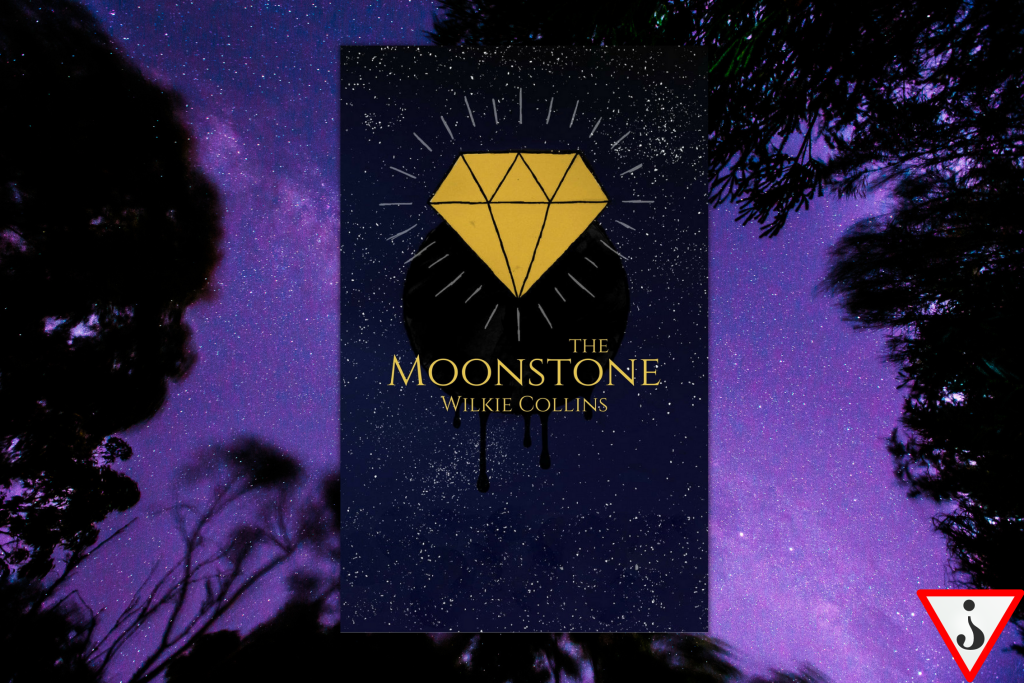
The Moonstone is widely viewed as the first great mystery novel. It was, however, not the first of its kind. Wilkie Collins’ The Woman in White, published eight years earlier, also featured a mystery and a detective who investigated crimes.
Edgar Allan Poe pioneered mystery and the analytical detective in short stories about two decades earlier, and other lesser-known authors built on them in novels. Dickens’ early works can be classified as mysteries or crime novels.
However, since it is so good, The Moonstone stands out as a genre-defining masterpiece. It’s a complete mystery with many of the elements that have become prevalent in the mystery genre, such as a stolen gem with a bloody and exotic past, clumsy law enforcement, an amateur detective, red herrings, crime re-enactment, shocking plot turns, and all the characteristics of the British cozy mystery, which has a small group of suspects and takes place in a remote location (often a country home, as here).
Nonetheless, The Moonstone is a brilliantly well-written work in and of itself, irrespective of its mystery elements. Overall, The Moonstone is more relatable and humorous, and several chapters are on par with Dickens’ novels. Collins’ characters in this work are as vividly depicted as any in Victorian literature. However, rather than detailed explanations, the characters’ own dialogue, thoughts, jokes, and detours serve to draw the audience in.
The characteristics of the Moonstone’s participants are emphasized throughout all of their activities, to the point where they begin to resemble familiar, long-lost colleagues in both soothing and annoying ways.
Check Out – The Moonstone
61. The Time Machine
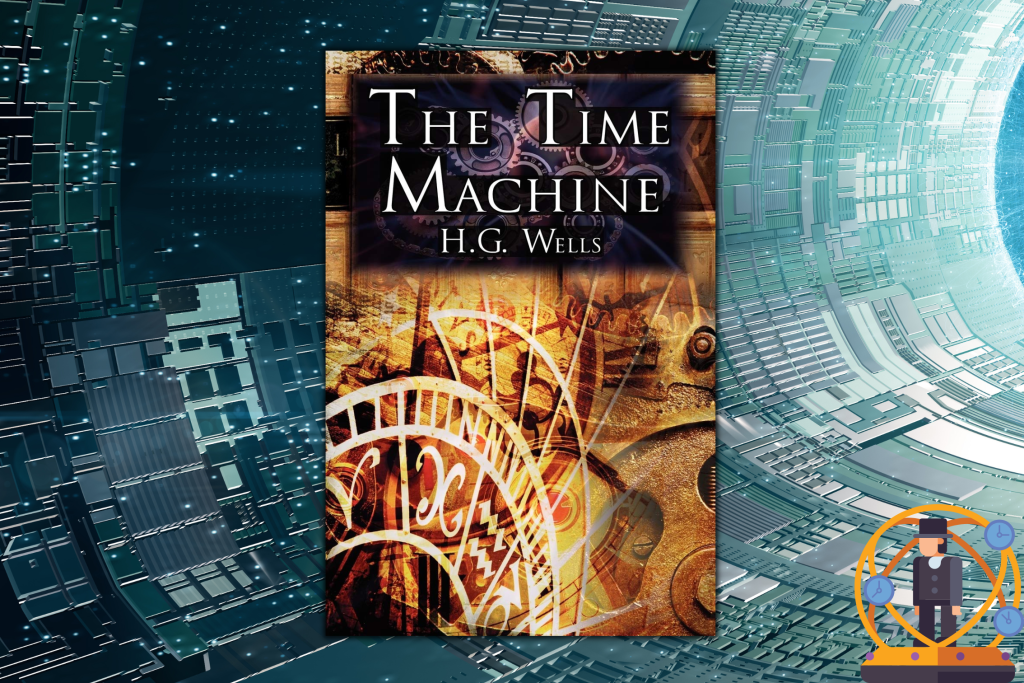
The Time Machine is a novel that is a lot of fun for readers. From the deep love story between the time traveler and Weena to unexpected encounters with a clever tribe of human evolutions known as Morlocks over multiple travels across time in an actual time machine. Even though this book is over a century old, its pages and stories always seem new and exciting when read. Despite a slow start to the framework story, the novel picks up pace in chapter three and becomes a treat from there.
This famous novel is undeniably a true exploitation of real-life scientific principles and theories combined with the complexities of technology and social order, perfected inside the world of authentic, twenty-four-carat science fiction literature – which irritated the mind of a brilliant Victorian English scholar.
Putting aside the billions of dollars produced by Hollywood and other entertainment industries as a result of Dr. Wells’ brilliance, the average reader will definitely find the book to be time well spent.
The science fiction classic “The Time Machine” recounts the story of an intrepid scientist who travels several hundred thousand years into the future after inventing a machine that can shift the dimensions of time. This century-old story never gets dull and presents the reader with a free ride on a roller coaster forward and backward. Every scientific and geopolitical turn and turn, as well as its complicated plot and characters, provides an unexplainable excitement.
“A wonderful book.”
Winston Churchill
Check Out – The Time Machine
60. A Room With a View
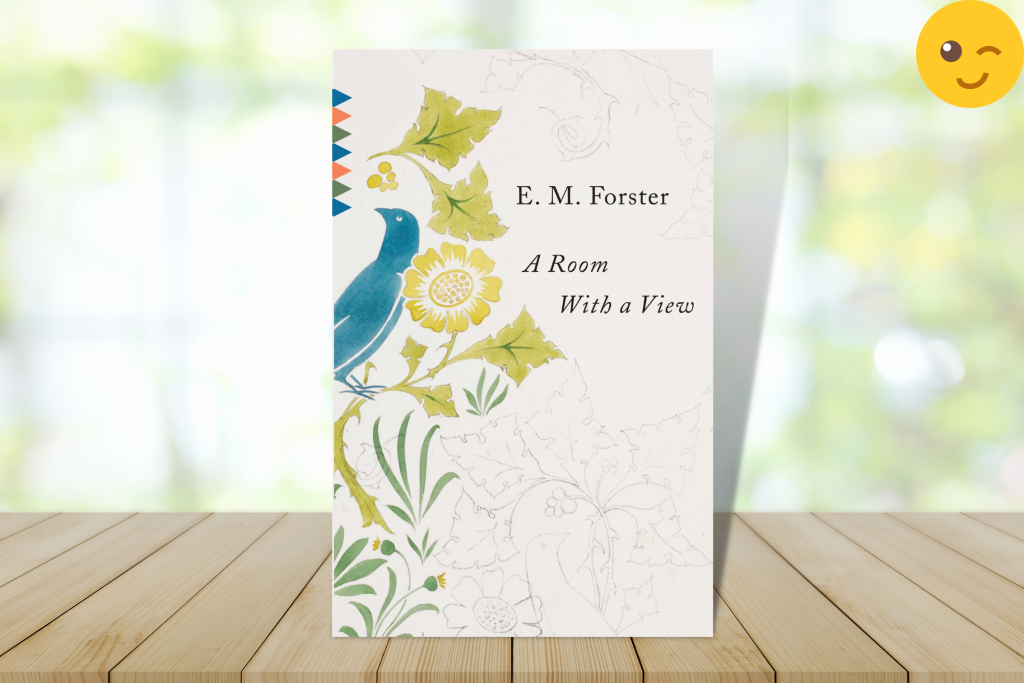
Modern readers will enjoy E M Forster’s satirical comedy of sorts A Room with a View because it has a refreshing tone of sarcasm. A Room with a View is a true masterpiece which has garnered critical acclaim and reader appreciation.
The first edition of A Room With a View was published in 1908. A young woman from the upper middle class, Miss Lucy Honeychurch, is pulled back together with an eccentric young man in England after meeting him while traveling through Rome and Florence.
Lucy is a typical young lady in all respects. Mr. Beebe, a local priest who lives in the same pension as Lucy in Italy, notices a contrast between Lucy’s daily life and her piano playing. Lucy is torn between the thrill of life in Italy and the conservative morals of Victorian England not to mention her terminally dull fiancé Cecil Vyse. Will she ever be able to follow her heart?
This book is a fantastic pick if you enjoy comedy of manners. In certain instances, E. M. Forster likes making fun of his characters so much that they make fun of themselves. We all need the freedom to share our own truths, as well as the openness and tolerance that this book’s points of view represent.
The book’s essential principles are what make it a timeless classic: self-knowledge over self-denial, straightforward communication over convoluted thinking, and the love and light we can only provide if we are honest with ourselves.
If you want to read more classics but don’t want to commit to Dickens or Bronte or anything else as long, start with A Room With A View. The literature, humor, and compassion in the book make you wish there were more Forster books and British classics.
Check Out – A Room With a View
59. The Jungle Book (The Jungle Book #1)

For more than a century, readers have been enthralled by The Jungle Book’s timeless characters and brilliantly drawn animal society. There is a lot of action and adventure, such as when Mowgli plays a game of wits with the tiger Shere Khan or when Rikki Tikki Tavi defends his family from cobras. Also, the book contains motivational messages about respecting nature’s laws and how knowledge and understanding can be more powerful than physical strength.
However, readers who are more familiar with Disney’s rendition of The Jungle Book may need some convincing to appreciate the beauty of the less imaginative original. In contrast to Disney’s renowned animated film, Rudyard Kipling’s collection of short stories The Jungle Book includes tales featuring people other than Mowgli, the “mancub” raised by wolves and befriended by Baloo the bear. However, Mowgli’s stories are undoubtedly the most well-liked and well-known in the collection, thanks in part to the popular movie.
These fascinating stories, interlaced with lovely poetry about the characters, describe a complex and often deadly natural ecosystem in which species must survive in accordance with the “ways of the jungle.” Despite the fact that practically all violent activities occur “offscreen,” creatures chase and slay one another in horrific situations.
In one scenario, Mowgli employs deception to deceive an opponent into being killed by a stampeding herd of cattle. Although the animal’s death is not described further, Mowgli is subsequently seen skinning the carcass. In the original book, creatures frequently discuss devouring other animals for food.
The sequel to The Jungle Book provides even more stories about Mowgli and other jungle creatures. As of today, The Jungle Book has been adapted into multiple TV shows and films.
Check Out – The Jungle Book (The Jungle Book #1)
58. The Confessions of St. Augustine
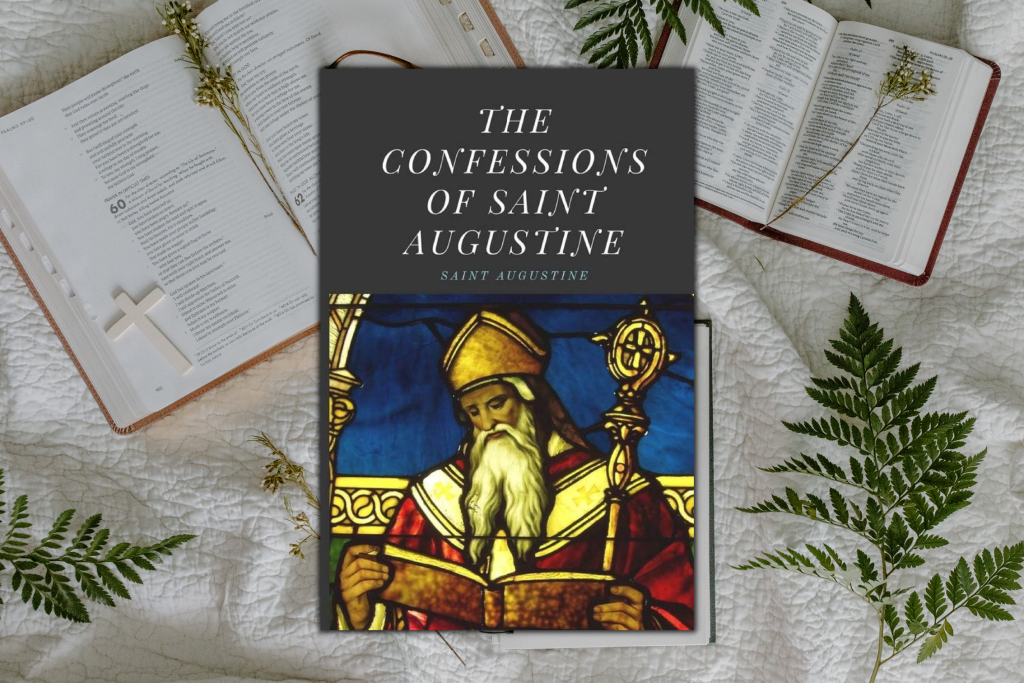
Our cultural heritage includes Augustine’s well-known aphorism, “Our souls will not be at peace until they find God.” You should read Augustine’s Confessions if you haven’t already.
The main story of Augustine’s life does not center on external events. Instead, he recounts three more thought-provoking stories simultaneously. The first is about his estrangement from God. Augustine had a dissolute life of arrogant opportunism and immoral sexual behaviors for 32 years. He was a modern-day Jonah, passionately avoiding God.
Every classic benefits from an expert taking us under their wing and acting as our tour guide, and Augustine’s Confessions benefits the most. People are quickly frustrated and abandon the book before finishing it because they approach Augustine’s masterwork with the wrong expectations, which is why we believe it is predominantly ignored.
Why Should You Read the Confessions?
Even if only a small number of people have read the Confessions in its entirety, Christians, in particular, are familiar with the most famous passages. To encourage our readers to read the Confessions, we conclude with a fantastic point from the book, “A missed opportunity is a terrible waste.”
Check Out – The Confessions of St. Augustine
57. The Sign of the Four (Sherlock Holmes #2)
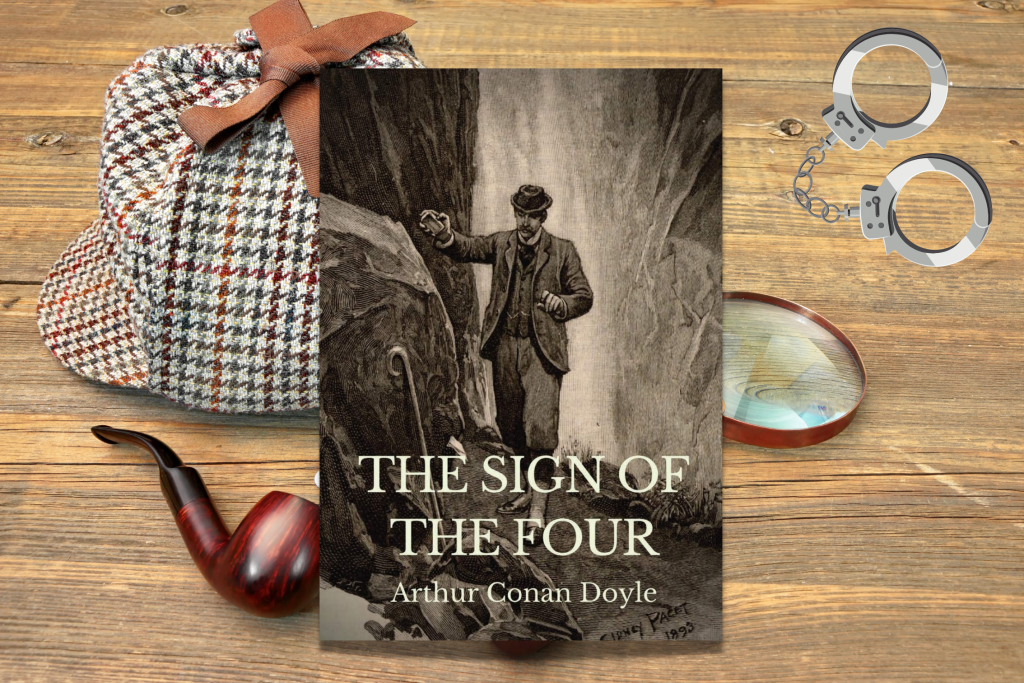
The Sign of the Four, the second novel in the Sherlock Holmes canon, was initially published in 1890 under the five-word title. It has now been reissued several times under the four-word title The Sign of Four. The confusion originates from the text itself, which uses both phases interchangeably.
Although Holmes was not a smash hit until Conan Doyle followed up with a series of short stories (eventually gathered in books such as The Adventures of Sherlock Holmes), this work represents a crucial milestone in the building of a great cultural figure.
This is the book in which Dr. Watson first meets his future wife Mary. It is the first time Holmes says his famous phrase, “When you have excluded the impossible, whatever remains, however unlikely, must be the truth.” The Baker Street Irregulars, his dirty-faced junior detectives, and the sleuth’s demand for a cocaine solution with a concentration of 7% are first referenced in this novel.
Miss Mary Morstan, a governess in The Sign of Four, engages Sherlock Holmes and Dr. Watson after receiving weird messages (and pearls!) from an unknown source.
They accompany her to meet with her unknown source, who turns out to be Thaddeus Sholto. He claims that his brother Bartholomew has a treasure that formerly belonged to her father. If true, the governess would become one of England’s wealthiest heiresses. However, when Bartholomew is discovered dead and the riches have vanished, Sherlock Holmes and Dr. Watson must track out the culprit in order to protect their client.
The Sign of Four, one of Conan Doyle’s four complete Sherlock Holmes adventures, is narrated from Dr. Watson’s point of view once more. Although A Study in Scarlet had a good start, we, like many other readers, felt that the story’s second half did not adequately showcase everyone’s favorite master of disguise.
Conan Doyle, in our opinion, took all that was excellent about the novel, strengthened the story’s framework, and added a few more engaging characters.
Check Out – The Sign of the Four (Sherlock Holmes #2)
56. The Problems of Philosophy
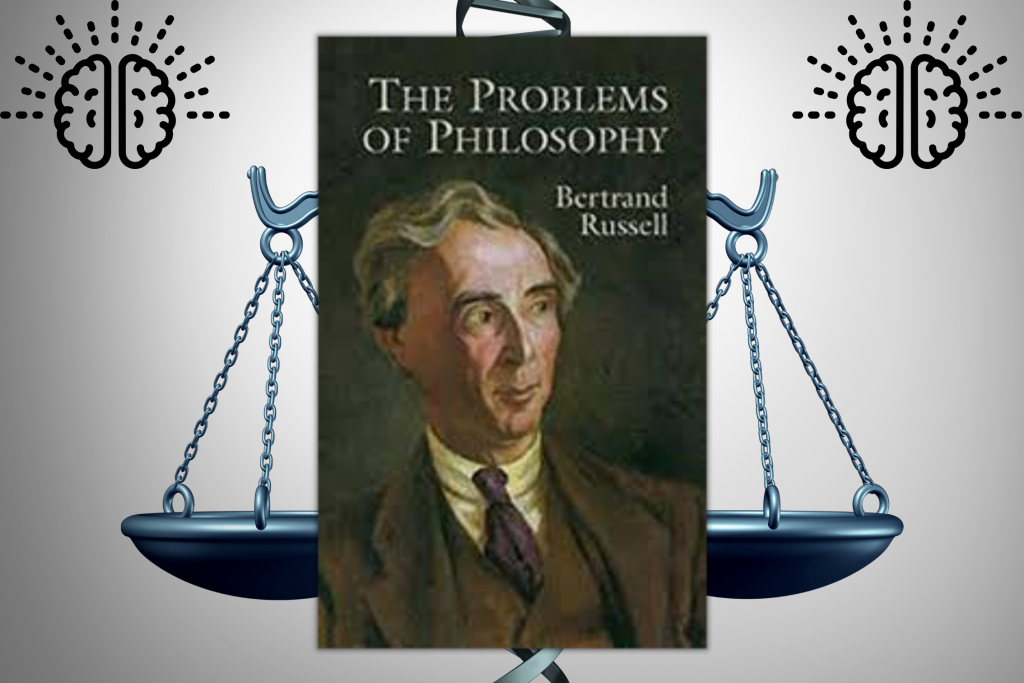
Bertrand Russell’s introduction to his beliefs was The Problems of Philosophy, which was published in 1912 and became a standard text for philosophy students. Is there any knowledge in the universe that cannot be refuted by a logical person? Russell, as an empiricist, asks this question right away. According to Russell, this is the beginning point of philosophy.
He investigates inductive reasoning, truth, matter’s nature, reality, and the boundaries of philosophical knowledge. Russell is widely recognized as one of the finest thinkers of Western philosophy, and his ideas are suitable for anybody looking to broaden their horizons since they are both extremely instructive and thought-provoking.
Russell’s most famous work, The Problems of Philosophy, has become required reading for philosophy students. This little and engaging book provides a colorful introduction to philosophical ideas that are sometimes misunderstood as being too high and complicated for the typical person to understand.
Russell focuses on knowledge rather than metaphysics, concentrating on topics that he believes would spark constructive discussion. He guides the reader through his famous distinction between “knowledge by acquaintance and knowledge by description” from 1910 and introduces fundamental theories of Descartes, Kant, Hegel, Hume, Locke, Plato, and others to laymen and academics to provide the foundation for philosophical research.
The book centers on epistemology (philosophical beliefs about knowledge). It begins with the standard philosophical question of whether anything is real and if we may assume that anything we perceive is genuine. Many people make light of it and ask this question jokingly; Russell’s approach, on the other hand, converts the problem from a hypothetical state to a factual explanation of the world we experience, or assume we see. A mindbender!
Check Out – The Problems of Philosophy
55. The Adventures of Tom Sawyer (Adventures of Tom and Huck #1)

The Adventures of Tom Sawyer, first published in 1876, is a story about a small boy growing up and becoming a young man. It shares certain features with a bildungsroman, a novel in which the moral, psychological, and intellectual growth of a young main character is the primary focus. In this book however, Twain did not raise Tom until he reached adulthood, therefore it is not a real bildungsroman.
Tom Sawyer, one of America’s most well-known stories, has two main appeals. It initially attracts the young teenager as exciting experiences of a normal lad in the mid-nineteenth century, experiences that are still intriguing and enjoyable because they appeal to the natural impulses of practically all young people, regardless of period and or culture.
Secondly, the novel appeals to adult readers who have fond memories of their own youth. In fact, Twain wrote in the first edition’s preface, “Although my book is largely intended for the amusement of boys and girls, part of my objective has been to pleasantly remind adults of what they once were themselves, and what they felt and thought.” As a result, the book combines the past and the present, recalling well-remembered childhood episodes in a way that jogs adults’ memories.
Many of the moments are well-known and have become a part of our cultural history, whether or not one has read the book. Consider the instances in which Tom hires others to paint a fence that he was meant to paint, where Tom and Becky become lost in the cave, and when the lads are in the graveyard. Twain masterfully captures the awe, horror, and mischief of boyhood.
Characters such as Tom, Becky Thatcher, Huck Finn, Injun Joe, and Aunt Polly have all contributed to the development of our national identity. Twain criticizes adult attitudes and behavior throughout the book.
The transition of a young person (Tom) into maturity and the disapproval of existing adult habits are two factors that lead to the conflict. This double perspective further raises the book above the status of a boy’s ordinary adventure novel.
Check Out – The Adventures of Tom Sawyer (Adventures of Tom and Huck #1)
54. The Great Gatsby
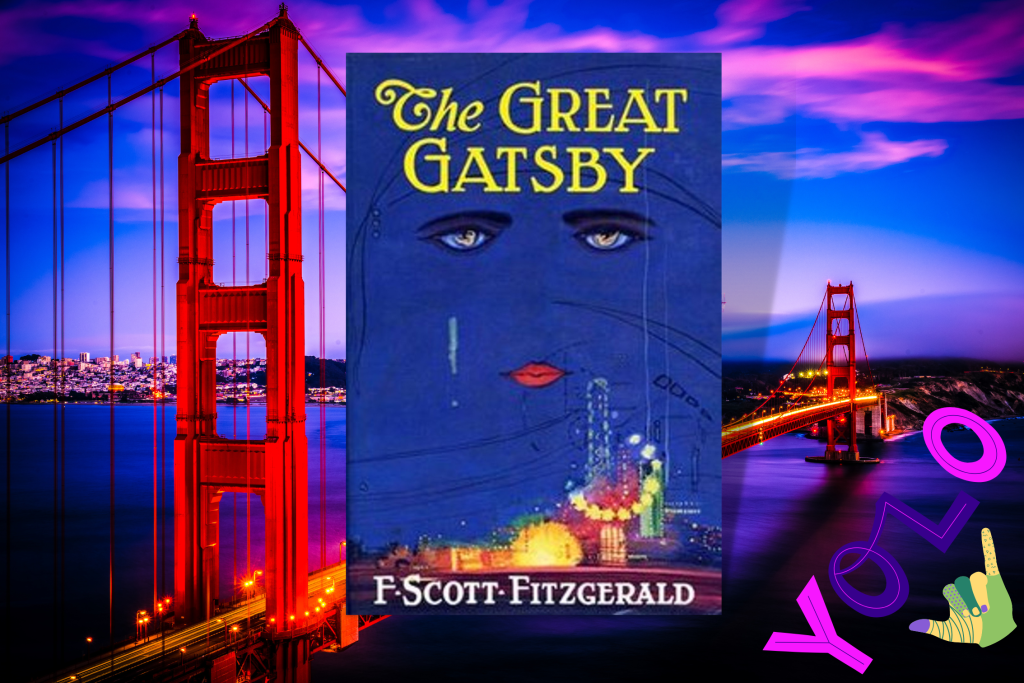
F. Scott Fitzgerald’s “The Great Gatsby” is one of the most well-known works of literature in the United States. F. Scott Fitzgerald is widely regarded as one of the best authors in American literature. He wrote substantially about the American Dream. He undermines the pillars of American civilization while showing its vulnerable underbelly.
Francis Scott Key Fitzgerald (1896-1940) craved fame in order to climb above his impoverished family and their social standing. Fitzgerald was always a fan of extravagance and grandeur. He talked about these concepts a lot, and The Great Gatsby makes them quite apparent. The famous novel was originally published in 1925.
This was the pinnacle of America’s cultural Roaring Twenties. Gatsby makes use of Roaring Twenties themes and culture. Displays of excessive wealth, the role of alcohol and Prohibition, more advertising and consumerism, and the status of women in society are among them.
F. Scott Fitzgerald’s The Great Gatsby is widely regarded as a masterpiece and, by some, the Great American Novel. The plot of The Classic Gatsby remains relevant over 100 years after its publication, making it a great American novel in and of itself.
Readers and fans from all around the world, including Americans, may identify with the characters and get significance and meaning from the novel’s global themes.
Gatsby works hard to elevate his social standing so that he is worthy of Daisy and realizes later that it was never about the money.
Tom and Daisy Buchanan’s actions, for instance, which “hammered up things and creatures and then retreated back into their money or tremendous carelessness, or whatever it was that held them together and allowed other people to clean up the damage they had made,” highlight the hypocrisy of the privileged. According to Daisy, the “nicest thing a girl can be in this world is a fool”, thus Daisy wants her child to be one.
These characters convey universal ideals about love, class, and the American Dream.
Several books have been recognized as potential candidates for the title of The Great American Novel. These novels are classics because they portray American values. This invites the reader to reflect on the topic of the nation’s national identity.
The Great Gatsby is a mainstay on that list because of its capacity to reflect the vision of the American Dream and its enduring significance. Fitzgerald’s excellent command of American prose adds to the book’s historical relevance.
Fitzgerald’s portrayal of American culture in the 1920s has stood the test of time. This is mostly due to the fact that his writings remain significant in American society. Gatsby is distinguished by his perception of the American Dream, which reveals a flaw in American culture’s values.
Both modern-day America and the America represented in The Great Gatsby face similar problems.
These themes are still relevant to readers today. They serve as a leaping place for discussions about the American national identity and cultural values.
Check Out – The Great Gatsby
53. A Treatise of Human Nature

A Treatise of Human Nature (1738) is the most substantial work by the Scottish philosopher David Hume, who is often regarded as the most influential English-language philosopher and one of the most prominent figures in intellectual history.
The Treatise aims to lay the same factual groundwork for the study of human nature as Hume’s predecessor Isaac Newton did for the physical sciences. In contrast to the philosophical rationalists of his day, Hume argues that most human beliefs are dependent on emotion and mental habit rather than reason.
By probing his own inner environment and using skeptical reasoning to what he discovers, Hume arrives at the conclusion that there is no reasonable foundation for any belief in morality, cause-and-effect, or personal identity.
A Treatise of Human Nature not only contributed significantly to the philosophical views of realism, skepticism, and naturalism, but it also had a significant impact on the fields of psychology and cognitive science. In the opening to the Treatise, Hume sets out a goal to study the human mind objectively.
He believes that without a scientific understanding of human thinking, all other intellectual disciplines, including philosophy, are dependent on uncertain and murky foundations. Because it is difficult to perform controlled tests on mental processes, Hume says that he should instead base his “science” on his own ideas and the behaviors of others around him.
Fast forward: because the Treatise was poorly received by readers at the time, Hume extensively reworked it into two volumes, An Enquiry Concerning Human Understanding (1748) and An Enquiry Concerning the Principles of Morals (1751). Many consider the Treatise to be the most important philosophical book ever published in English, yet its prestige has grown alongside Hume’s.
Check Out – A Treatise of Human Nature
52. Around the World in Eighty Days

Jules Verne’s action-packed novel Across the World in Eighty Days, which follows protagonist Phileas Fogg around the world, is primarily set in Victorian England. Around the World in Eighty Days is a fascinating narrative written with a global and open worldview.
The description of Fogg, a cold, fragile guy who eventually proves that he does have the heart of an Englishman, is fascinating. It’s difficult to put down because the story expertly captures the spirit of adventure that was prominent at the turn of the century.
The story begins in London, when the reader meets Fogg, a man who is extremely precise and in control. Fogg lives a pleasant life, although one that is a little mysterious because no one knows the true source of his riches. He frequently visits the gentleman’s club, where he wagers on completing an eighty-day tour around the world. He takes his possessions and sets out on his journey with his manservant, Passepartout.
Around the World in Eighty Days by Jules Verne is more concerned with the promise of technology in his own era than many of his more science-based fiction works.
It’s amazing what people can do with nothing more than a sense of adventure and discovery. Additionally, it is a superb assessment of what it means to be English during the age of empire.
Fogg is a stiff-upper-lipped man who is precise in all of his routines, and his persona is skillfully portrayed. The frigid guy does, however, warm up as the book progresses. He begins to value love and friendship over his usual concerns about restraint and punctuality. He eventually decides to forgo his bet in order to help a friend. He is not concerned about losing because he has gained the hand of the lady he loves.
Despite some reviewers’ statements to the contrary, the vivid descriptions in Around the World in Eighty Days more than compensates for whatever literary shortcomings the book may have. A timeless story, without a doubt, has a cast of unforgettable characters. It is both a moving look back at a bygone period and an exhilarating journey throughout the world. Around the World in Eighty Days is an exciting story full of adventure that was written with skill and panache.
Check Out – Around the World in Eighty Days
51. The Republic
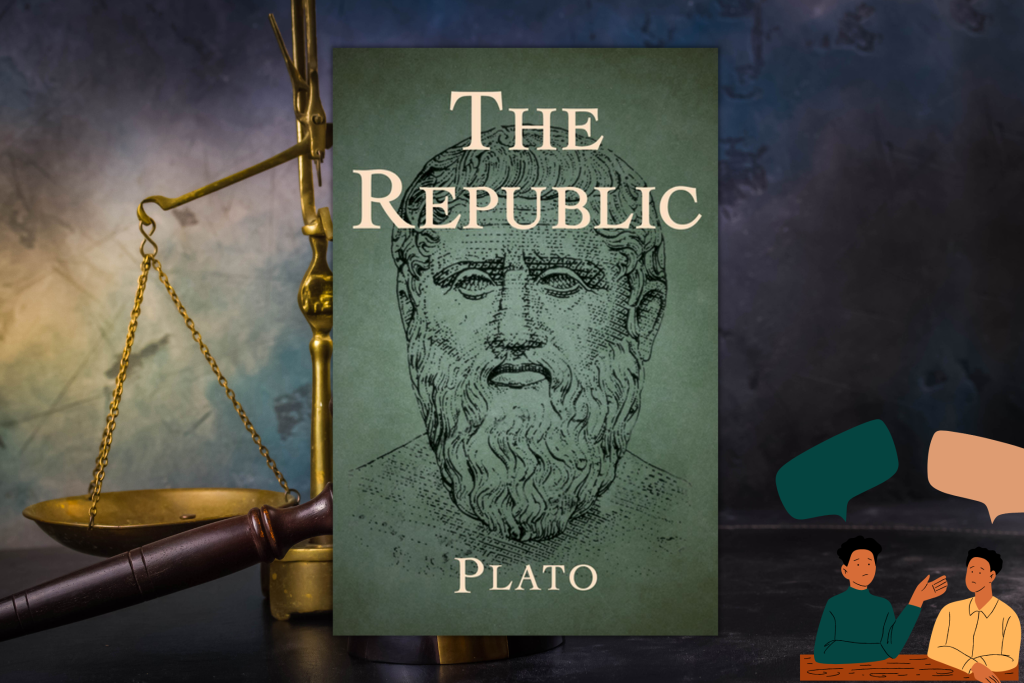
Plato’s best-known work, The Republic, is also one of the most intellectually and historically important works of political theory and philosophy. Plato and Socrates engage in a Socratic dialogue about the nature of justice, the form and personality of the just man, and the just city-state.
The book was published around 380 BC. Although it must have happened at some point during the Peloponnesian War, the actual date of the debate has been extensively debated. According to one historian, if any of the possible exact dates between 432 and 404 were picked, “there would be startling inconsistencies.”
Socrates and a group of Athenians and foreign nationals discuss the meaning of justice, trying to debate whether the just man is happier than the unjust man by visualizing a succession of cities arising “in speech,” the last of which is Kallipolis, governed by philosopher-kings, and analyzing the nature of current regimes.
Other subjects of conversation among the attendees include the theory of forms, the human soul, and the roles of philosophy and poetry in society.
This well-known essay delves into the concept of a perfect community and the ideal person within it. It is presented as a dialogue between Socrates and three distinct participants. During the conversation, other questions are raised, such as what is kindness, truth, and knowledge.
The Republic also emphasizes the value of education and the duties that men and women have as citizens. Plato envisions a peaceful world ruled by philosopher kings using amazing clarity and exquisite language.

“I’m actually gobsmacked that this isn’t required in order to be sworn into office, like the Constitution is required for us American immigrants when it comes time to gain American citizenship.” – Maria Popova
Check Out – The Republic
50. The Strange Case of Dr. Jekyll and Mr. Hyde
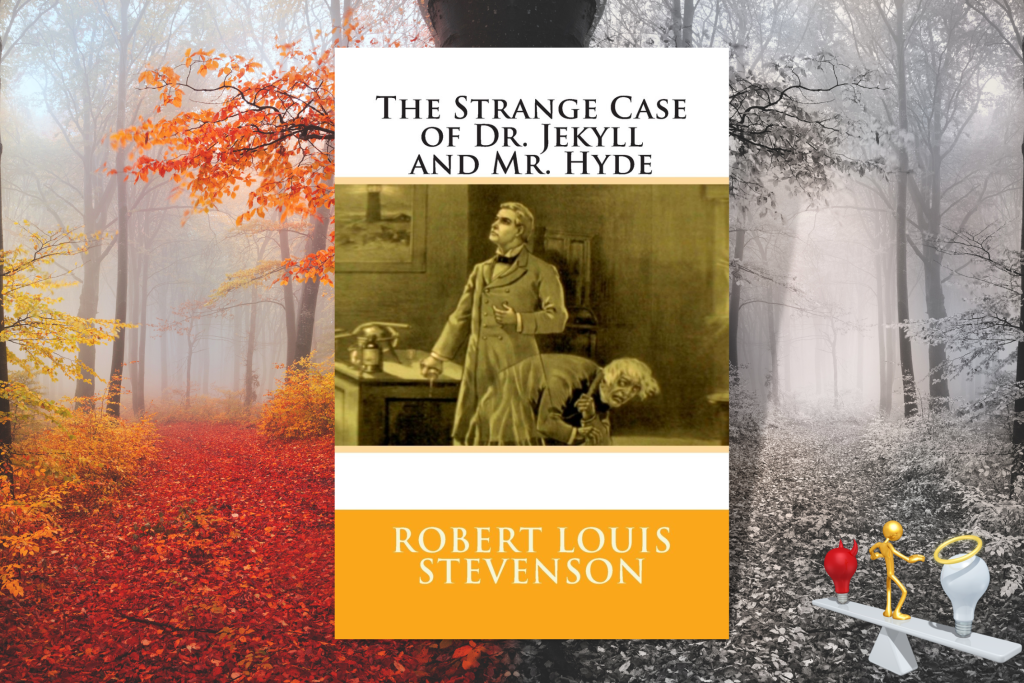
Robert Louis Stevenson has always believed that humans are capable of both good and evil. To put it another way, every human being has both good and evil. He claims that both sides of ourselves exist, with the exception that society tends to conceal the negative side.
These concepts influenced his classic novel The Strange Case of Dr. Jekyll and Mr. Hyde (1886). This was one of the first works to include a character with a complex personality disorder. It highlighted issues about science and religion at the time by telling a tragic story. Because of the book’s success, it has been adapted into cinema, television, and theater.
It has a truly captivating plot. Through attorney Utterson, the readers gradually but systematically learn some weird facts. Stevenson gives hints so that readers can guess on what is going on. Finally, readers understand everything because of a document. Is there a dark side to us? The notion of good and evil duality has been addressed from various perspectives in the context of multiple disciplines, including philosophy, psychology, and literature.
The Strange Case of Dr. Jekyll and Mr. Hyde examines our own character as well as a psychological disorder. According to Stevenson, Dr. Jekyll and Mr. Hyde were real people; they were one person, only in different ways.
As a study of human nature, this book aims to show readers that good and evil are linked. They are both present with us. It captivates us and, at its heart, mixes psychology, literature, and philosophy. Without a doubt, this is a book that everyone should read at least once, and one that earns its spot in our list of the best novels of all time.
Check Out – The Strange Case of Dr. Jekyll and Mr. Hyde
49. The Art of War

Sunzi’s The Art of War, a famous book by the ancient Chinese military strategist also known as Sun-Tzu, is one of the first recorded treatises on battle strategy in history. This resource, known as Bingfa in Chinese, contains information on various combat techniques and tactics, as well as tactical instruction on scouting out the enemy’s position and the battlefield’s terrain before invading.
Although it is impossible to determine when The Art of War was composed, most researchers assume it originated between 475 and 221 B.C.E., during the Warring States period. Sunzi, the book’s author, was a general who served the Wu empire, but that’s according to researchers.
Whatever Sunzi’s personal experiences were, it is obvious that he was well-versed in dispute resolution and tactical education. The main theme of The Art of War is that diplomacy should be employed to avoid confrontation. If it cannot be avoided, it should be fought mentally and strategically such that the least amount of harm and loss of resources is caused. Going to battle involves admitting defeat, thus it should only be done as a last resort.
Sunzi defeated his opponents by a combination of diplomatic gestures and intense warfare. There are several detailed battle methods and guidelines in The Art of War. It prioritizes war preparation, which includes gauging the weather and the battlefield, studying the enemy’s maneuvers and weak areas, equipping soldiers with the necessary training and so forth.
However, particularly given the unpredictability of the battlefield, it also promotes adaptation. Generals avoid siege warfare because it often prolongs the battle and consumes resources. Furthermore, generals should honor both captured and defeated soldiers. The Art of War has stood the test of time because it concentrates on strategy and tactics rather than specific military technologies.
It has had an impact on leaders all around the world, not only in battle but also in many other aspects of life, including business. Modern leaders, such as Mao Zedong, the founder of the People’s Republic of China and former head of the Chinese Communist Party, have attributed The Art of War for helping them in winning conflicts.
“I’ve read this book many times.”
Elon Musk
Check Out – The Art of War
48. Middlemarch

Middlemarch by George Eliot is often recognized as one of the best Victorian, British, English-language, or simply greatest books of all time. Middlemarch appears to do better on critic lists than reader lists, despite being on every list of 100 best novels of all time. Middlemarch was initially published in 1871 by George Eliot (whose actual name is Mary Ann Evans).
The novel takes place between 1829 and 1832 in the imaginary English town of Middlemarch, and covers a number of unique, overlapping events involving a wide cast of individuals. It is often regarded as Eliot’s masterpiece.
Middlemarch’s realistic book analyzes every socioeconomic strata, from the wealthy nobles and clergy to the manufacturers and professional men, farmers, and laborers. The emphasis, on the other hand, is on the shattering optimism of its two major protagonists, Dorothea Brooke and Tertius Lydgate, who both marry disastrously. Dorothea Brooke is a very clever and attractive young girl, and the book focuses on the role she comes to play in the lives of many of the town’s other residents.
Eliot created a novel that is inherently modern, with insightful psychological insights and moral complexity, as well as a detailed and vivid depiction of life in a small early-nineteenth-century town. Eliot defied precedent by not ending the book with the inevitable happy ending, as was expected of female romance novelists at the time. Instead, she discussed the realities of marriage.
Despite male critics condemning it as being too sad for a “woman writer,” novelist Virginia Woolf commended the bold and adventurous narrative as “one of the few English works written for grown-up people.”
Check Out – Middlemarch
47. The Mysterious Affair at Styles (Hercule Poirot #1)
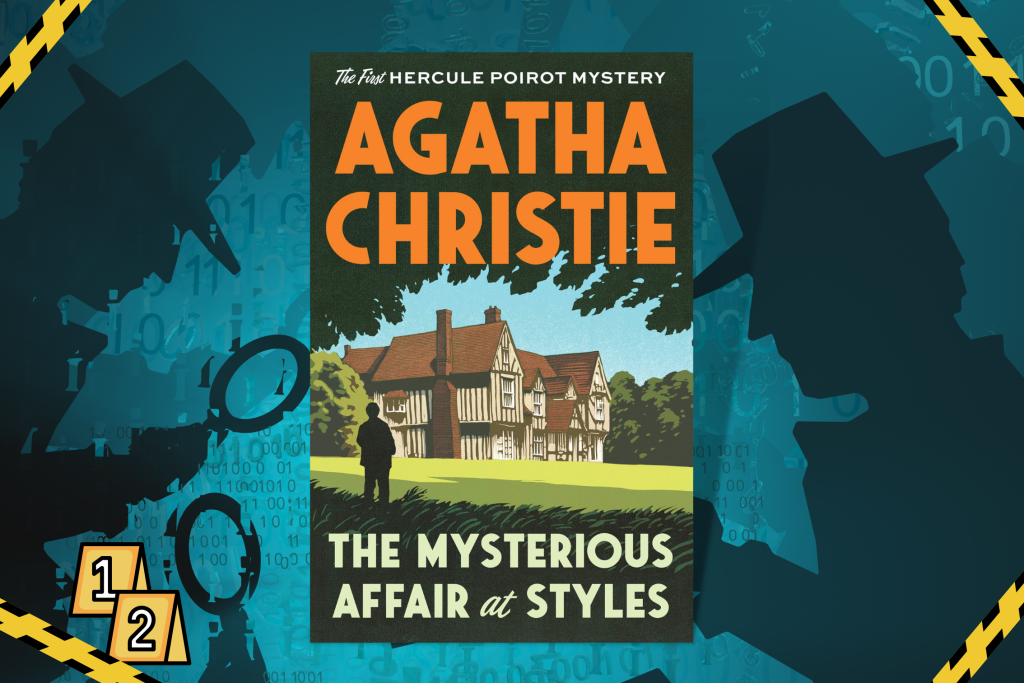
The Mysterious Affair at Styles is a detective novel written by British novelist Agatha Christie. It was first published in 1920, however it was written in 1916, during World War I. The first book in the “Hercule Poirot” series, The Mysterious Affair at Styles, is a masterpiece of mystery and a must-have for anybody who appreciates a good story!
Styles was Christie’s first novel to be published. It introduced characters such as Arthur Hastings, Inspector (later Chief Inspector) Japp, and Hercule Poirot. Poirot, a World War I refugee from Belgium, now lives near Emily Inglethorp’s house in England after she helped him establish a new life. Hastings, one of his pals, pays her a visit.
When the woman is murdered, Poirot employs his detective skills to solve the case. Notably, the book features maps of the house, the crime scene, and a sketch of a will’s fragment. The Times serialized the book’s maps of the home and other visuals as a weekly serial, which is regarded as the book’s true first publication. When Penguin Books first began producing books in 1935, this was one of the original ten titles. As a nod to her great writing talent, Agatha Christie’s debut mystery novel received favorable reviews.
A 1990 study complimented the book and storyline, saying that it is one of Christie’s few that is well-anchored in time and place, a story that is conscious that it depicts the end of an era, and which offers a clever plot. Christie had not yet perfected wit in her initial book since “too many clues tend to cancel one another out,” and this was recognized as a challenge “which Conan Doyle never truly overcome, but which Christie later would.”
Check Out – The Mysterious Affair at Styles (Hercule Poirot #1)
46. Alice’s Adventures in Wonderland (Alice’s Adventures in Wonderland #1)
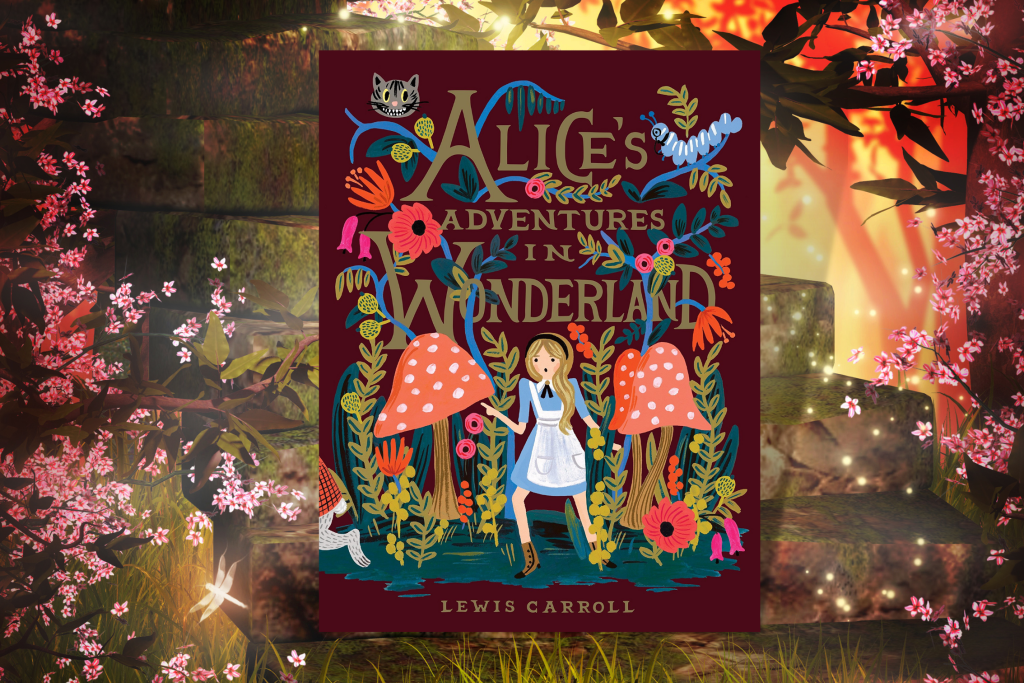
For decades, children and adults alike have been captivated by Lewis Carroll’s tale of a curious girl who falls down the rabbit hole. While talking about Alice, you must now navigate 150 years of retellings, revisions, and variations.
There have been around 60 book adaptations of Alice (of Wonderland and Through the Looking Glass fame), as well as 40 films, 30 stage performances, and 30 television adaptations. So, why is this story still resonating and infiltrating popular culture in general?
The book is packed with conundrums, riddles, and puzzles that leave the text open to multiple interpretations. While adults appreciate its cleverness and sinister undertones, children adore the outrageous humor and nonsensical vocabulary.
The perpetually late rabbit, the insane Mad Hatter, the rash Queen of Hearts, and the inquisitive kid at the center of it all are all instantly recognizable characters who have gone on to become stars in their own right. Rather than the stereotypical man of action, the protagonist is an ordinary girl who is curious, kind, and willing to speak her thoughts.
Carroll has such a unique ability to reconstruct the world of children, sparking the imagination and allowing adults to relive their childhood feelings. Everyone appreciates escaping reality and immersing themselves in a magical world of foolishness and fun. Wonderland is a strange world where normal laws do not apply. Alice turns reality upside down because, despite her age, she is more reasonable and well-mannered than many of the adults.
Alice helps to organize the chaos. Consider it a survival guide for a weird, scary world. Perhaps we need stories about the last sane individual in a wild, crazy world where truth might be stranger than fiction.

“Has so much to teach us. It’s an archetypal tale about recognizing that there are different layers of reality.” – Russell Brand
Check Out – Alice’s Adventures in Wonderland (Alice’s Adventures in Wonderland #1)
45. Notre-Dame De Paris (The Hunchback of Notre Dame)

The Hunchback of Notre Dame is a classic work of literature.
The gypsy Esmeralda is at the center of the book’s purported main plot, and she is also the object of lusts and political intrigues involving Frollo, the soldier Captain Phoebus, his jealous fiancée Fleur-de-Lys, the poet Pierre Gringoire, and the French king, as well as the royal courts, the king’s army, Parliament, and the entire population of Paris. Despite the terrible consequences, Quasimodo almost deserves credit for saving Esmeralda many times and bringing her to safety inside the cathedral.
The book is the closest you can come to a grandiose tearjerker. In fact, Dickens’ A Tale of Two Cities is the closest example of a novel by another writer with this degree of depth, historical scope, and emotional influence. Hugo explores what it means to be a monster in The Hunchback of Notre Dame. The physical deformity of Quasimodo is meant to be the character’s distinctive feature in the book, and his whole identity is based on this perception.
However, one of the Parisian ladies goes further to describe him as a “wicked” and ugly man. According to many, he might be some type of supernatural monster who prowls throughout Paris and performs spells on its citizens.
Captain Phoebus, whose name is borrowed from the Greco-Roman Sun deity, stands in stark contrast to Quasimodo. Phoebus, a muscular young man, is described as “one of those handsome men that all females agree to admire.” However, it is Quasimodo, not Captain Phoebus, who makes an attempt to save Esmeralda and ends up killing the archbishop to stop his sadistic reign of terror.
On the other hand, Esmeralda is also seen as a monster. She is seen and perceived as a Rom, despite the fact that she is not one in the real sense. In The Hunchback of Notre Dame, the Roma are associated with witchcraft and the paranormal. They are seen as odd aliens who do magic, own demonic goats, and kidnap children in Paris.
Frollo uses their connection to the paranormal to advocate a Roma cleansing in the same manner that Charmolue used it to validate Esmeralda’s death.
The book criticizes society for treating individuals like Quasimodo and Esmeralda with utter misery. Hugo concludes that Frollo and Phoebus, not Quasimodo and Esmeralda, are the actual monsters.Hugo recreates the vibrant, dramatic atmosphere of 15th-century life in The Hunchback of Notre Dame to remind his readers of the beauty and importance of Paris’ Gothic history.
The book also promotes the city’s historic Gothic architecture (and thus its heritage). If the book’s success is anything to go by, then his plea was very well received.
As you may know, The Hunchback of Notre Dame has been adapted for the theater and movie multiple times.
Check Out – Notre-Dame De Paris (The Hunchback of Notre Dame)
44. The Woman in White
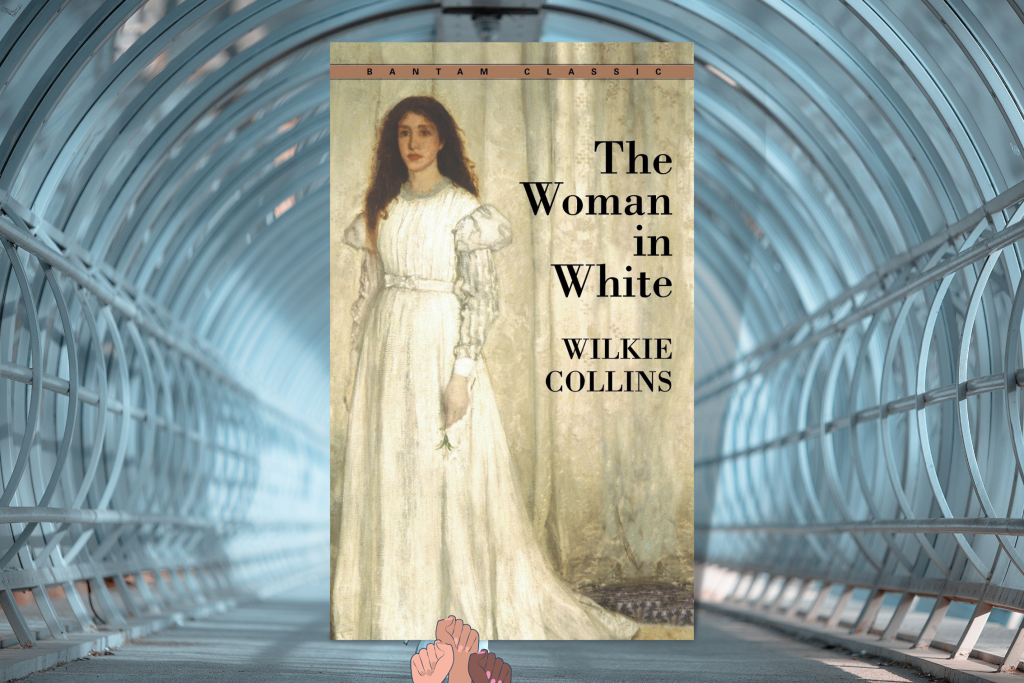
The Woman in White, one of those great Victorian novels, has a fast-paced plot and powerful characters who will either bore you to tears or, as in this case, satisfy you. In fact, The Woman in White is one of those works you may come to regret not reading much sooner.
The Woman in White is considered to be one of the first examples of crime fiction and the first “sensationalist” book in Victorian England. It initially appeared as a serial in Charles Dickens’ book All The Year Round.
The Woman in White is a big novel, but it is well worth reading. It contains a complex story and a cast of interesting characters. Marian’s wit and cleverness in particular will win any reader over.
The literary style of The Woman in White is decidedly Victorian. If you are not a fan of Henry James or Charles Dickens, you may find it difficult to finish this book. Although the twists and turns are masterfully shown, you might find the ending to be a little underwhelming. However, throughout the novel, it is clearly evident that Wilkie Collins has a background in law. That said, Collins adequately addresses the topic of women’s rights in this book.
We absolutely enjoyed this classic and enthusiastically recommend The Woman in White to everyone who enjoys a dark, gloomy tale as well as fans of crime fiction. You will not be disappointed!
Check Out – The Woman in White
43. Bleak House
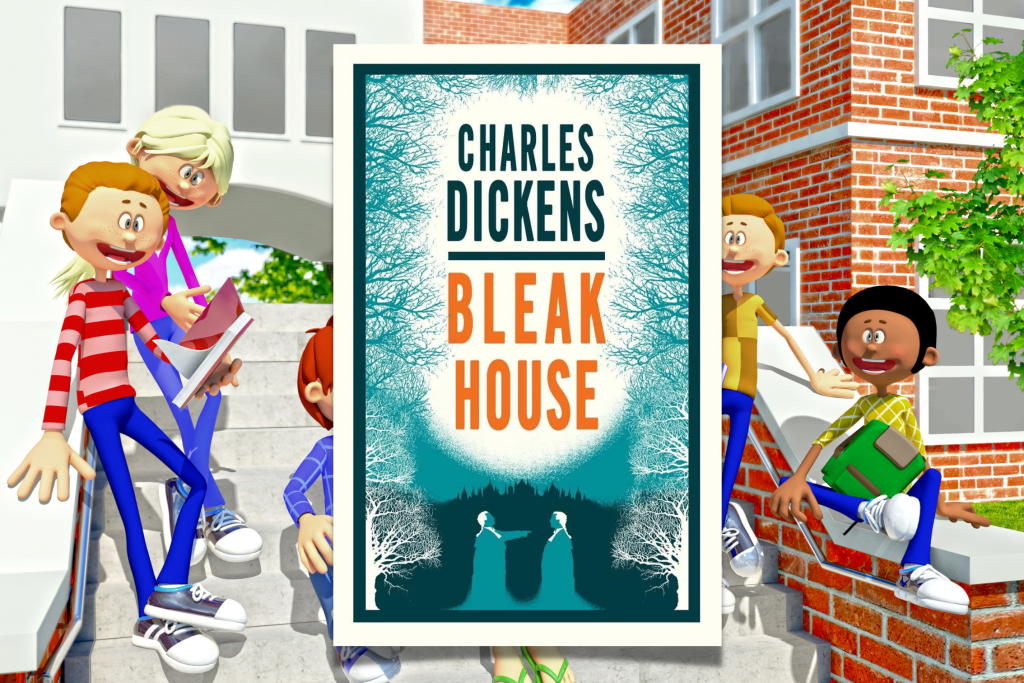
Bleak House has both devoted fans who consider it one of Charles Dickens’ masterpieces and skeptics who deem it one of his most hideous melodramas. The writer’s strong points are on display: fascinating characters, a cleverly twisted storyline, and sharp societal commentary. Plus, some of the most exciting moments of imaginative writing ever seen—and more artistically articulated than the majority of Dickens’ work. On the other hand, there are just too many unforgettable characters! It’s filled with them.
There are so many in one story that it’s difficult to keep track of them all. You’re continually flicking back over pages, trying to remember everyone. It has been said that the characters in Bleak House, like those in any Dickens story, are one-dimensional. It is stated that what makes most of them unforgettable is that they are cartoons, each with one or two absurd qualities that Dickens emphasizes everytime they arrive on stage.
Meanwhile, the protagonists—in this case, the orphan Esther Summerson, her foster John Jarndyce, and her companion Ada Clare—are allegedly too bland, all consistently and excessively good-hearted people.
These allegations are fair, but in our opinion, irrelevant. Even a realism purist, such as the present company, may see that in fictional works —something needs to give in order to compress and accentuate, or else we’d just have unchecked and uninteresting journalism.
Dickens is able to get at vital facts about the reality in which they and we live through his compelling characters and simple narrators, whether the insights involve ethical conundrums or horrors of social injustice, both of which are fundamental to Bleak House.
“From the highest in the land to the lowest, the court of Chancery destroys lives. A wonderful read even if you don’t like spontaneous Human Combustion.”
Neil Gaiman
Check Out – Bleak House
42. Beyond Good and Evil
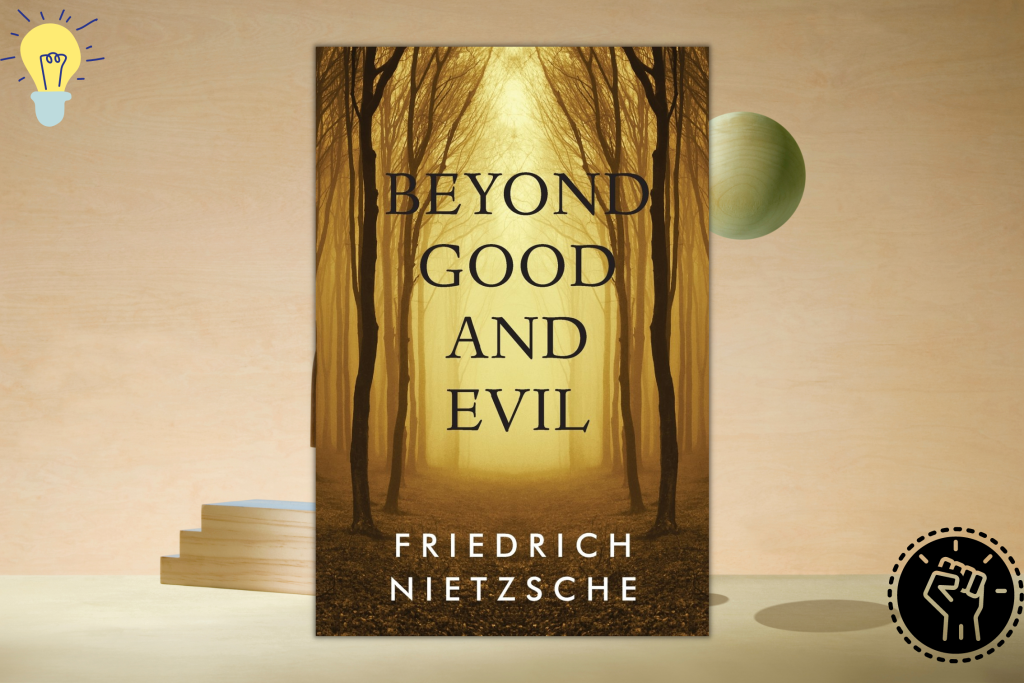
Beyond Good and Evil established Nietzsche as the dominant European philosopher of his generation. The text, which was published for the first time in 1886, drastically contradicts Western thought’s legacy of truth and God, good and evil. Nietzsche explains that the Christian culture is afflicted with a ‘slave morality’ and immersed in false devotion. With humor and vigor, he shifts from this criticism to a philosophy that embraces the present and insists that the people express their own “will to power” on the world.
Perhaps no philosopher is a better example of innovative thinking in practice than Friedrich Nietzsche: a German ideologue who methodically challenged academic thinkers and their historically accepted beliefs, attempting to pull down their shaky foundation and replace it with his own.
Nietzsche advocated for creative people who can flip a topic on its head and portray it in a whole new light. They reinterpret situations and themes in new ways to generate unique connections, explanations, and theories. Nietzsche referred to them as “free spirits,” people who refused to accept previous belief systems and preferred to think for themselves.
The book, which is now considered one of the most significant works of moral philosophy ever written, is not just an example of creative thought at work, but also a strong case for its relevance.
Beyond Good and Evil is also a book that takes a more critical and combative approach as compared to his previous work, Thus Spoke Zarathustra.
Nietzsche criticizes previous philosophers of lacking greater awareness and mindlessly adopting ideological notions in their analysis of morality in Beyond Good and Evil. He accuses them, especially, of creating huge philosophical systems on the belief that the good man is the polar opposite of the wicked man, rather than simply a different manifestation of the same underlying impulses that manifest more directly in the evil man.
The book extends into the realm “beyond good and evil,” leaving behind the traditionalism that Nietzsche destroys in favor of what he sees as a positive approach that fearlessly tackles the conceptual nature of knowledge and the dire state of the modern individual. Mind blowing!
Check Out – Beyond Good and Evil
41. David Copperfield
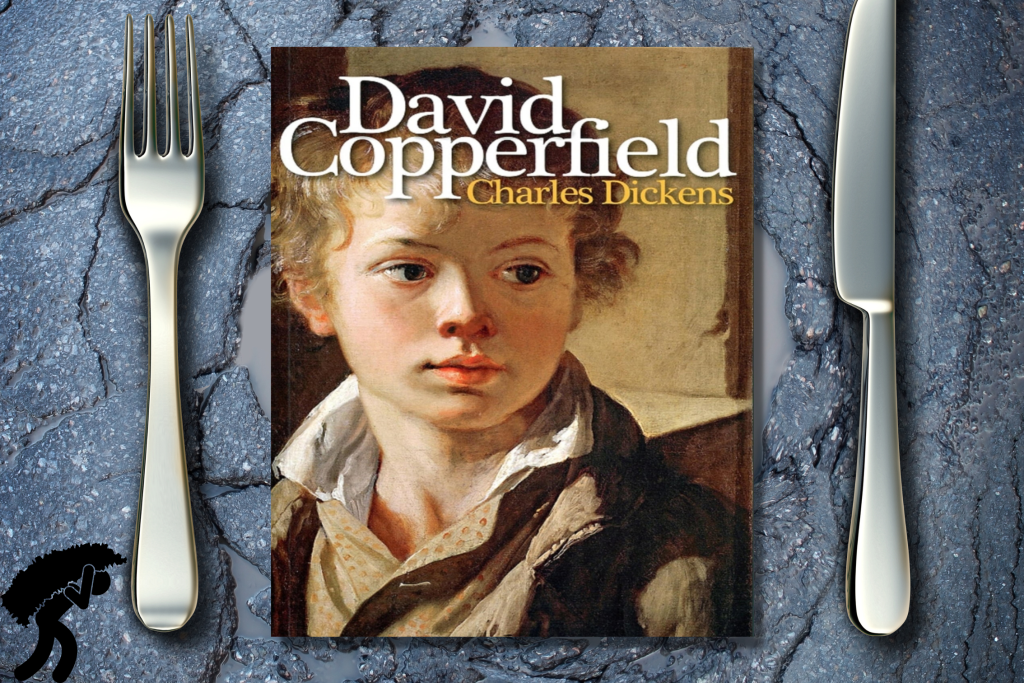
Many fans and critics consider David Copperfield, published in 1850, to be Charles Dickens’ finest work. It is the narrative of a young orphan who must fight and work hard to earn his way and discover his identity in the world, based on incidents in Dickens’ early life. It is a lovely and fascinating story filled with unusual and intriguing characters as well as an outstanding plot that will keep you interested throughout the book.
David Copperfield is also a social reflection on Victorian society in England during the nineteenth century. After witnessing the hardship of the impoverished and child labor, Dickens began writing on social injustice and the necessity for social reform after he was forced to leave school at the age of 15.
Charles Dickens’ first works were published while he was just 21 years old, in 1833. In addition to David Copperfield, his other well-known and lucrative writings include Oliver Twist, Great Expectations, A Tale of Two Cities, and A Christmas Carol.
David Copperfield is set in England in the early nineteenth century. The story of the characters begins in Suffolk County and concludes three kilometers later in Yarmouth on the North Sea. The plight of the weak is a recurring theme throughout the novel, as the orphan David Copperfield finds himself in awful circumstances prior to great aunt Betsy Trotwood taking on the position of his guardian.
It is also evident in David and the schoolboys’ challenging circumstances while attending Salem House in London.
Throughout the story, there are clear contrasts between the affluent upper class and the destitute lower class. Rosa Dartle’s reaction to a potential marriage between her wealthy cousin, James Steerforth, and the orphan Emily is one example. Throughout the novel, Dickens compares virtue with evil. Readers, for instance, immediately come to appreciate the nice and kind Peggotty and detest the harsh and greedy Mr. Murdstone. Alternatively, David Copperfield and Uriah Heep are also pitted against one other.
Many of Charles Dickens’ characters have strange or eccentric traits. They include Mr. Dick, who is a little mentally ill, and Betsy Trotwood, who is preoccupied with donkeys always appearing on her farm. Orphans like David and Emily occur in David Copperfield, as do people from one-parent homes like Agnes Wickfield and Dora Spenlow.
Dickens is honest about the dreadful poverty of the lower classes and the misery of the weak. While at it, Dickens emphasizes the value of standards and values such as honesty, hard labor, love, and kindness in defeating bad actions.
We would definitely suggest this work to any reader of any age who is looking for an excellent novel to read. Simply put, the story of David Copperfield will capture you from the first page and you will find it impossible to put the book down.
Check Out – David Copperfield
40. Dracula
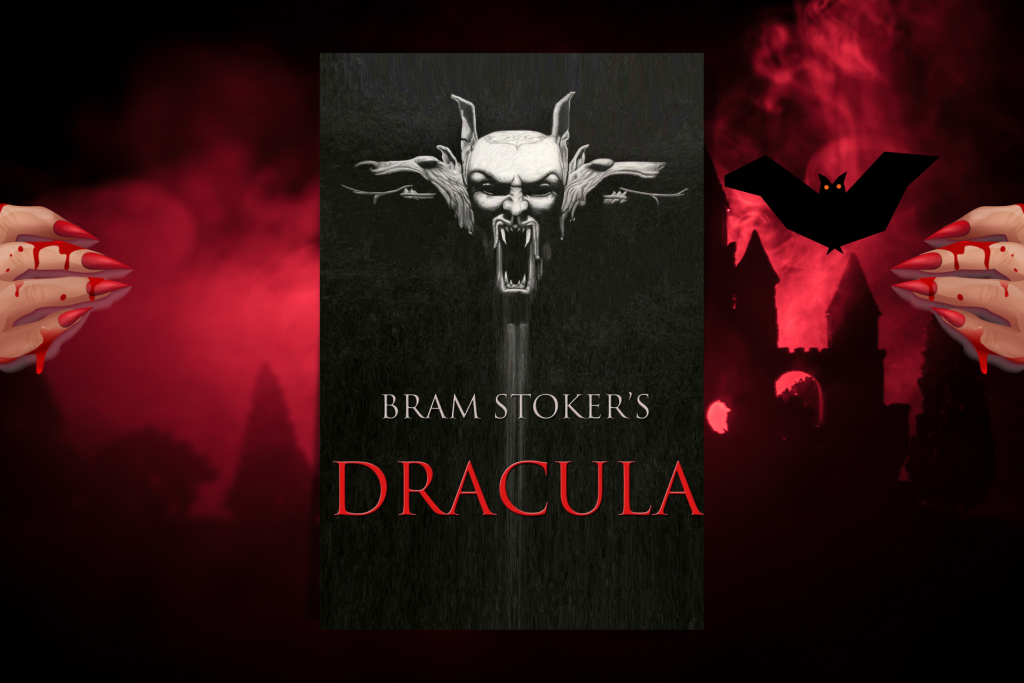
Bram Stoker’s Dracula is still a classic Gothic horror story dating back to 1897. Dracula, the most well-known vampire novel, features thematic elements of ethnicity, religion, superstition, science, and sexuality.
Yes, this is a fantastic read. One of Dracula’s charms is his use of letters to tell a story. The book was a prominent genre in Victorian times, and it provides for a broad range of characters, opinions, and plot developments.
It’s well-written, builds tension and terror that still holds up today, and establishes the traditional theme of hunter-prey and the laws for vampiric “life.”
The fact that it has been annotated indicates that people are still intrigued by the specifics of this gripping story. Stoker wrote other stories, but none had the classic edge, Gothic perception, or literary staying power of Dracula, his one-hit wonder. One of the great horror genre classics, and far superior than many recent vampire adaptations.
Check Out – Dracula
39. An Occurrence at Owl Creek Bridge
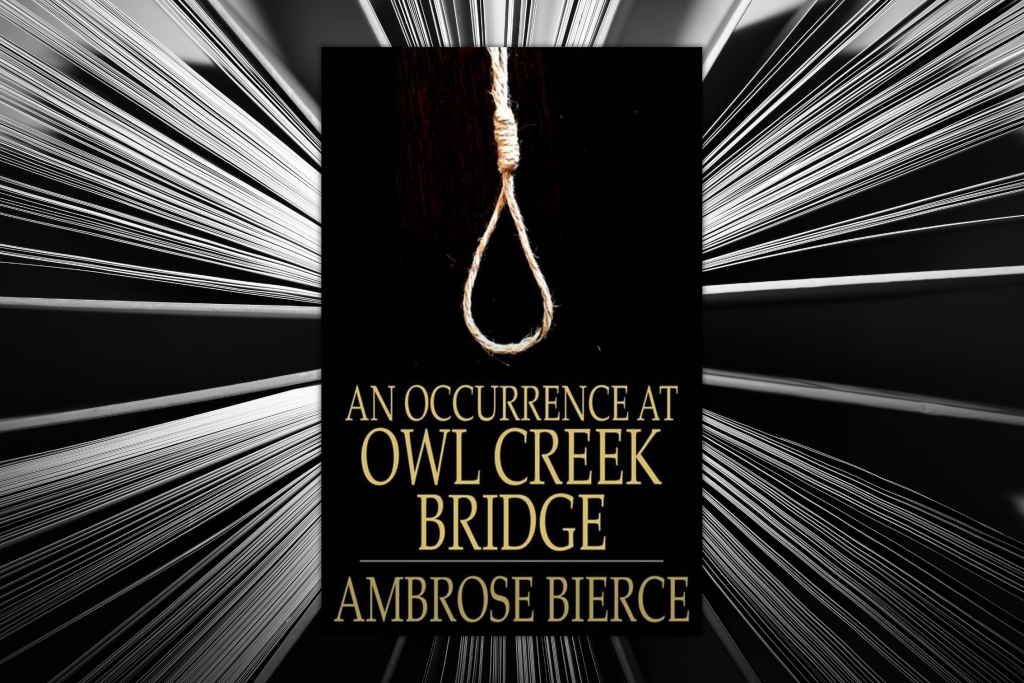
The short tale “An Occurrence at Owl Creek Bridge” is a famous example of an American short story. Its creator, Ambrose Bierce, was a remarkable character who is famous for his hilarious The Devil’s Dictionary as well as his strange disappearance in the early 1900s. An Occurrence at Owl Creek Bridge, first published in The San Francisco Examiner in 1890, was republished in Bierce’s Tales of Soldiers and Civilians at the turn of the new year.
An Occurrence at Owl Creek Bridge’ could be viewed as a creative twist on the widely held belief that our life flashes before our eyes just before we die. However, the style of Bierce’s short story, as well as his storytelling skill, foreshadow the contemporary innovative ideas of twentieth-century writers such as James Joyce, Virginia Woolf, and Katherine Mansfield, whose fiction, like Bierce’s, pursues new ways to depict time and the individual’s perceptual view of the world.
As a result, we may consider ‘An Occurrence at Owl Creek Bridge’ to be both an original piece of short fiction and an anti-war narrative. And these two aspects of Bierce’s story work in tandem: by tearing the figurative rug out from under us as readers in the closing paragraph, we are forced to face the harsh reality of war, where life is cheap and thousands of soldiers, even civilians, are massacred.
Check Out – An Occurrence at Owl Creek Bridge
38. The Devil’s Dictionary

Ambrose Bierce, an American Civil War soldier, journalist, and author, wrote The Devil’s Dictionary, a satirical dictionary that lists popular terms along with their hilarious and sarcastic explanations. Over the course of three decades, the lexicon was written in a series of pieces for publications and newspapers.
Before he collected them into volumes, first as The Cynic’s Word Book in 1906 and later in a more comprehensive edition as The Devil’s Dictionary in 1911, Bierce’s clever meanings had been copied and stolen for years. Unsurprisingly, the book editions had a mixed response at first.
But The Devil’s Dictionary gained fame in the years that followed. It has gained a reputation around the world by being extensively cited, often translated, and frequently imitated. The American Revolution Bicentennial Administration chose The Devil’s Dictionary as one of “The 100 Greatest Masterpieces of American Literature” in the 1970s.
The Devil’s Dictionary has been hailed “probably the most brilliant piece of satire made in America,” with Wall Street Journal columnist Jason Zweig calling it “howlingly funny” and “perhaps one of the greatest pieces of writing ever created.”
Check Out – The Devil’s Dictionary
37. Emma
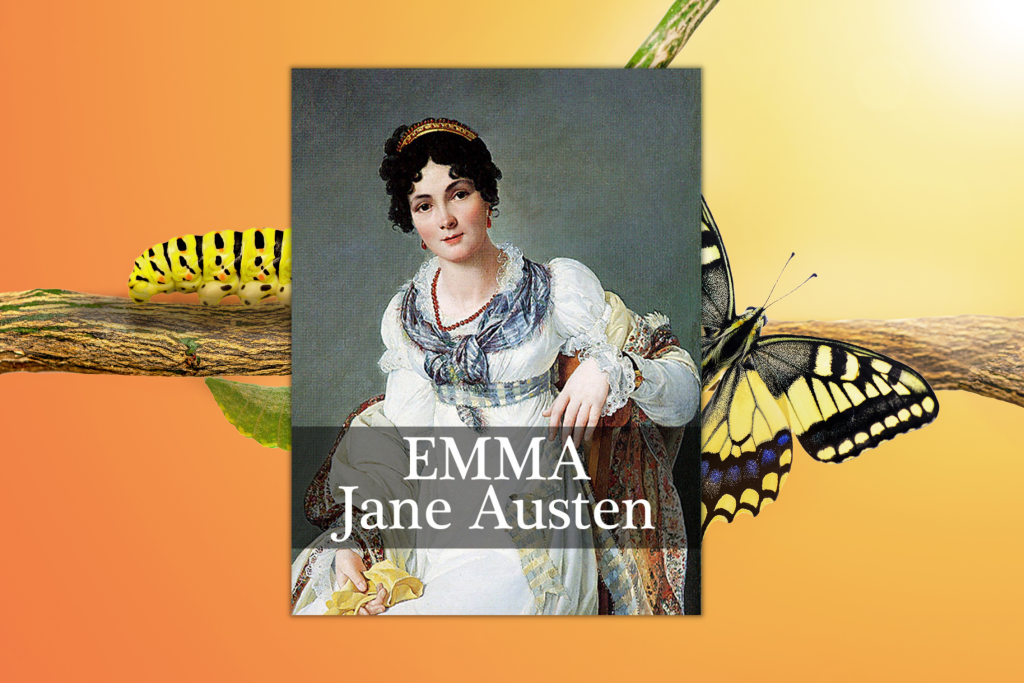
Emma, which was published 200 years ago today, is mostly regarded as the perfect novel by all who read it. Many Austen enthusiasts favor the popular Pride and Prejudice or the more realistic Persuasion to her other writings. Emma’s perfection may be a tad frigid to these loyal admirers, or it may be because Emma is Austen’s least romantic work.
Persuasion is about the possibility of wrestling last-minute happiness from a life shattered by a huge mistake, while Pride and Prejudice is about the ability of genuine love to transcend class and personal shortcomings. Emma, on the other hand, wants us to know that we are not as smart as we think we are and that we are going to create a mess until we recognize this.
Before Emma was released, Austen fretted that she might be the only person who liked her protagonist. Emma Woodhouse, 20, is “handsome, bright, and affluent,” as the opening phrase famously says, and if that isn’t bad enough, she is also spoiled and a snob.
But Emma is also clever and essentially kind, and more readers than Austen imagined have been prepared to give her the benefit of the doubt as she fumbles and makes amends her way into a better person.
The story recounts Emma’s transformation from a misled girl to a lady of reason and sensibility over the course of a year.
Check Out – Emma
36. Peter Pan (Peter Pan)

Peter Pan, the novel based on J.M. Barrie’s well-known play is full of fascinating characters, including Wendy, John, and Michael, the three children who fly off to Neverland with Peter Pan and encounter Indians, pirates, and a ticking crocodile. Peter Pan is the child who refuses to grow up.
Although there are many wonderful events in J.M. Barrie’s masterpiece that captures children’s fantasies, some of the sentiments and speech are out-of-date and offensive. Peter Pan evokes a wide range of emotions, including laughter, pity, sorrow, excitement, and dread.
A further unique aspect of this novel is that the author frequently breaks the “fourth wall” by interjecting himself into the story. He mentions trying to decide whether or not to notify Mrs. Darling that her children are coming back home after discovering it in a dream.
This part of the book, together with the obsolete concepts and language surrounding gender roles and indigenous people, make it an ideal topic for debate at home or in the classroom. Peter Pan by J.M. Barrie is a celebration of childhood and creativity, and parents should always be aware of this.
Three English children are magically transported to Peter Pan’s Neverland, where they encounter pirates, fairies, mermaids, wild creatures, the Lost Boys, and a Native American tribe.
If you’ve just watched the film versions of this novel, you might think it’s a celebration of never-ending youth about a boy named Peter Pan who never grows up. This is not correct in J.M. Barrie’s novel “Peter Pan.” Wendy, the Darling children, and the lost boys all chose to develop on their own, without the direction of an adult.
Despite the fact that “Peter Pan” is commonly sold to little children, I strongly recommend this book to teenagers who are striving to fit in with a culture that will not allow them to develop. Our modern civilization aggressively strives to prevent us from maturing and to persuade us that childhood is the most important time of life. All of the Peter Pan films end this way, while the novel does not. Every stage of life is shown in the book as it should be.
We are aware of the children’s adult life and are not supposed to bemoan their loss of youth. We are also not meant to rejoice. We simply have to accept the reality as it is.
Peter Pan has been adapted on stage, television, and cinema, notably the great but controversial 1953 Disney adaptation.
“Featured a title character who was at once charming and also a complete narcissistic, pathological demon. It was that ambiguous space between good and evil that I sparked to as a kid.”
Soman Chainani
Check Out – Peter Pan (Peter Pan)
35. Thus Spake Zarathustra: A Book for All and None
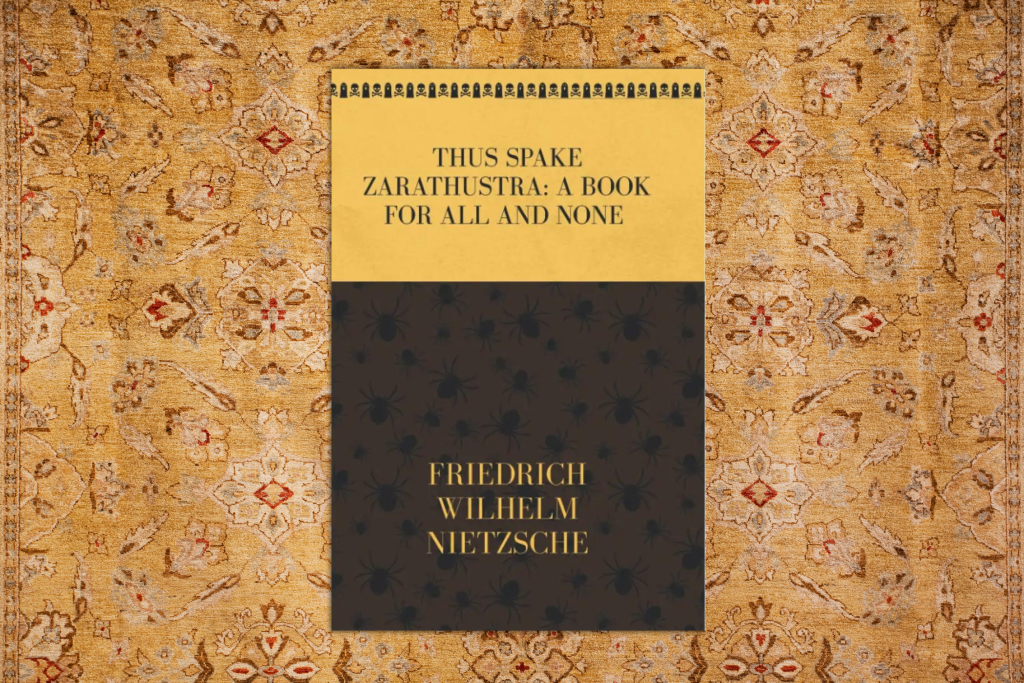
Thus Spake Zarathustra is a work of genius by one of the twentieth century’s most prominent thinkers, as well as a highly influential philosophical book from the end of the nineteenth century. It expresses Friedrich Nietzsche’s views through the ancient Persian religious hero Zarathustra (also known as Zoroaster), who also offers the disputed thesis of the Übermensch, or “superman.”
Despite being perverted by Nazi propaganda machines, Nietzsche established the Übermensch to depict the realization of greatness of will and being as the ultimate goal of human existence.
He felt that rather than accepting human frailties and worshiping perfection that is only conceivable in the hereafter, (at least according to the Christian view), an individual should try to improve himself throughout his earthly lifetime and go beyond the confines of traditional morality.
In this manner, the Übermensch would prevail over “the last man,” a conformist and free spirit who epitomizes Nietzsche’s critique of current culture, morals, and Christianity.
Thus Spake Zarathustra is a daring literary masterpiece written in a passionate, almost biblical language and packed with interesting, thought-provoking themes. For more than a century, the book has challenged and inspired students of philosophy and literature, and it is today considered as a forerunner of contemporary existential thought.
Check Out – Thus Spake Zarathustra: A Book for All and None
34. Anna Karenina
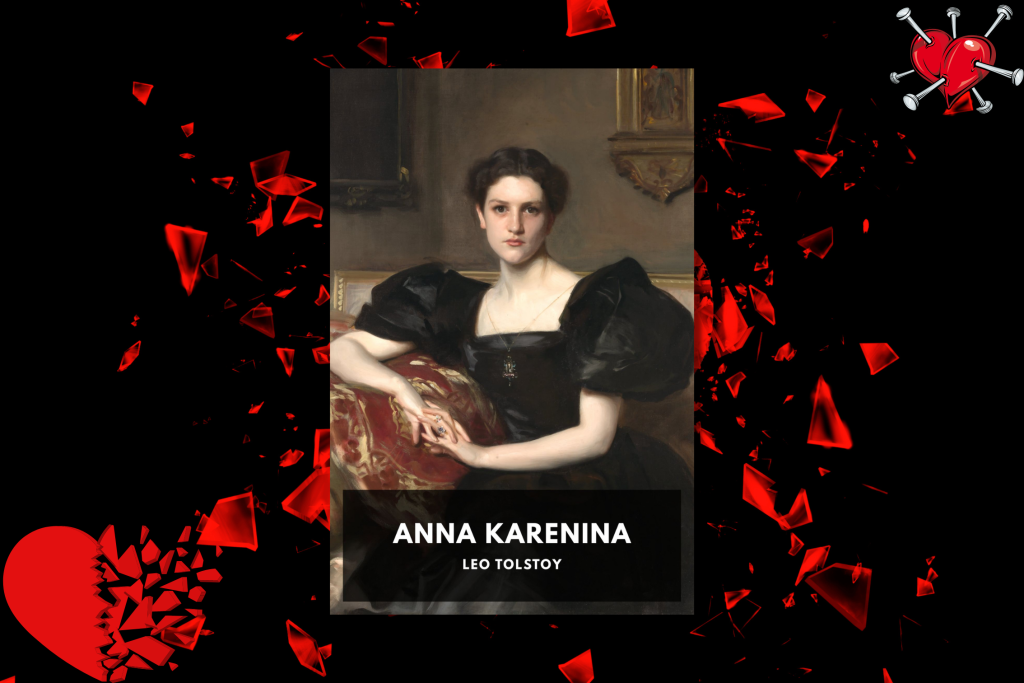
The novel “Anna Karenina” is considered one of the greatest works of Western literature. It is regularly at the top of well-known authors’ lists of favorite novels. Bob Blaisdell, an English professor at the City University of New York, was so taken with the novel that he read it 20 times before learning Russian to read it in its original language. It’s understandable to ask why we’re reading Anna Karenina in the first place.
After all, it’s a story about people falling in and out of love written originally in Russian by an aristocrat in the nineteenth century, when moral standards and social limitations were different than they are today, divorce was unusual, and infidelity might result in social disgrace.
What could it possibly be saying to us right now? In reality, there is quite a lot. Anna Karenina is a compelling and engaging novel. Its represented and dissected universe is nonetheless fascinating in its own right. It may have some of the most memorable characters ever created. And, while the goals and outright manifestations of public disapproval have evolved over time, they still persist. Those who disobey the norms or are unable to adapt to acceptable ways of feeling and thinking discover the world to be a cruel place.
Anna Karenina’s characters are so genuinely human that they may feel more alive than we’ll ever be, which is one of the reasons why it is such a fantastic book that we can read again and again and notice new things each time.
They are as sensitive to their emotions and circumstances as we are, but Tolstoy provides us with the invaluable luxury of accessing their deepest thoughts through their inner dialogue, acts, and what he reveals about them (Yes, Tolstoy, like all great authors, enjoys both telling and showing.).
Tolstoy takes some bold steps in Anna Karenina, many of which would be frowned upon by literary standard supporters today.
He provides us tiny glances into the minds of many people, often within the same small chapter. We enter a dog’s consciousness not once, but twice. Tolstoy, the narrator, departs the story to convey facts that the characters are not able to know. He takes what appear to be overly long subplots, such as lengthy chapters on peasant life, societal transformation, and farming practices. Hunting activities might last many days in fictional time.
Tolstoy does not act in this manner because he does not know any better; rather, he acts in this manner because he is a great author with immense confidence, equipped with a strong mind, and not afraid to explore new things or use diverse literary strategies to their maximum potential.
One could go on forever about Anna Karenina. Rather than listening to what we have to say, we recommend that you read it for yourself in this great new translation. You’ll love it as much as we do.

“I thought I wouldn’t want to finish an 800-page book, but then I started slowing down and reading the same chapters over and over.” – Jennifer Lawrence
Check Out – Anna Karenina
33. Narrative of the Life of Frederick Douglass, an American Slave

Frederick Douglass is one of the most well-known authors in the African American literary canon, and his first autobiography is one of the most renowned slave stories in North America. In 1845, less than seven years after his emancipation from slavery, Douglass’ autobiography, Narrative of the Life of Frederick Douglass, An American Slave, was published. The book sold 4,500 copies in its first four months, making it an instant success.
Frederick Douglass’ Narrative is about the heinous act of owning human beings, which was legal in the United States from the earliest days of colonialism to the end of the Civil War. Knowing in theory that slavery occurred is one thing; hearing a first-person account of it is quite another. You can read about the horrors of this heinous practice in Frederick Douglass Narrative for a firsthand perspective of a survivor who lived to tell the tale.
The Narrative of Frederick Douglass’ Life paints a vivid picture of life as a slave, what it was like to travel the world while enslaved, and what kind of country America was when it was primarily “the land of the free” for white people. A few novels by former slaves were written in the 1840s and 1850s, but Frederick Douglass’ story is one of the most noteworthy since Douglass addressed various difficult philosophical topics. One of his most essential questions being, “What does it take for the human spirit to be free?”
Check Out – Narrative of the Life of Frederick Douglass, an American Slave
32. A Christmas Carol

Everyone is familiar with the narrative of A Christmas Carol, if not from reading Charles Dickens, then by seeing the countless film adaptations, especially during the holiday season. And everyone knows the moral of its story. This is the one excellent piece of fiction with a clear ethical goal.
Dickens and all of the adaptations make it abundantly clear that the goal is to preserve Christmas as a season of joy and goodwill for all. Those who dig a bit deeper discover that it’s all about preserving society’s festive mood throughout the year.
A Christmas Carol rejects materialism, selfishness, and profit for the sake of profit. It is about cultivating family, remaining kind, and assisting the needy.
It’s obvious, it is simple and clear to identify and relate with. After reading the book or watching the movie, we cry a little, laugh a little, and are left with at least a short-term desire to be better people. Scrooge has a similar effect on us. Or does he? One mystery in the book has always been how Scrooge starts to care about others. In all of the literary and film adaptations of A Christmas Carol, he appears to give in too fast.
How can such emotional arguments persuade him if he is the old money-grubbing capitalist misanthrope that he was first characterized as? Dickens’ A Christmas Carol is also considered one of his best works of literature, according to a fairly modern definition of “good writing” , brief paragraphs and phrases, and expressive terminology. Also, we enjoy a little free imagination as we listen to Scrooge’s own reasoning. It moves quickly and without the elaborate digressions that Dickens is famous for in his larger works. On Christmas Carol, he is comedic, theatrical, sardonic, and casual.
Even with film adaptations, it makes sense that most of the dialogue and stage directions in movies are based on Dickens’ original work from a century and a half ago. Frankly, it’s easy to see why the message of A Christmas Carol continues to bring us comfort to this day.
Check Out – A Christmas Carol
31. Sense and Sensibility

Jane Austen’s first novel, Sense and Sensibility, is a delightful story of manners with a romantic plot, lighthearted humor, and brilliantly realized characters. Modern readers may find the language archaic at first, but once they get into the plot, it’s well worth the small amount of patience required. The characters’ out-of-date societal attitudes, particularly regarding gender roles, might serve as an excellent starting point for discussion.
In Sense and Sensibility, we encounter a sad story about two women who fell pregnant unexpectedly. The characters also enjoy a bit of wine parties and shooting sports. The novel has inspired several films, including the Academy Award-winning From Prada to Nada and the modern urban adaptation starring Emma Thompson and Kate Winslet.
The book aims to be a simple love story. Men and women with different and complementing personalities are paired off, but any chance of romance is hindered by social moral codes of the day, which prevent honesty and transparency while favoring deceit and secrecy. On second thought, Sense and Sensibility is a beautifully composed critique of social ethics that gives food for thought to the reader.
Interestingly, some people admire the book in ways that can look extravagant or irresponsible. Rarely do fans of Sense and Sensibility in its original form discuss how they first discovered the novel. Instead, they describe what it’s like to read it and then reread it, or to see it performed on stage, screen, or television.
How can one predict if they’ll like Sense & Sensibility? What if it’s not the book for you? Because of Jane Austen’s reputation for literary magnificence, first-time readers may approach this novel with Marianne-like expectations. You want to be absolutely swept away, to find joy in every phrase, or to discover that all of the novel’s beauty can be enjoyed in just one reading. Well, all that could happen to you.

“About an observant woman who cuts through all of – I know Jane would never call it this – but the BS.” – Elizabeth Warren
Check Out – Sense and Sensibility
30. The Three Musketeers (The d’Artagnan Romances #1)

To completely understand and understand this book, a reader needs to be familiar with the “swashbuckling novel,” a tale packed with intrigue, adventure, and romance. This book genre was very widespread in the nineteenth century, but it is extremely rare in modern literature. Dumas however, was an expert at writing in this manner.
The swashbuckling novel essentially mixes the best elements of the intrigue novel, adventure novel, and romance novel. The intrigue novel has plots and subplots in which one or more characters are involved in numerous complex schemes. Although it is not required, this sort of fiction usually involves political intrigue, business takeovers, and spies’ plans. It is usually about love as well.
An adventure novel, as the name indicates, has a variety of experiences, the majority of which take place on roads. For example, d’Artagnan’s expedition to London to obtain the queen’s diamond jewels, as well as his various escapades and encounters with the enemy, constitute an adventure story. Typically, the main character’s life is in danger, but this does not always have to be the case.
The Three Musketeers is a love story. The Three Musketeers has several simple love tales, such as the duke of Buckingham’s affection for Anne of Austria, the queen of France, and his determination to go to any length to be in her presence.
All factors combined, this novel is sometimes referred to as the “swashbuckling” classic since it also happens to be one of the most well-known adventure books ever written. The exploits of “the three musketeers” are well known to the majority of Western readers.
Check Out – The Three Musketeers (The d’Artagnan Romances #1)
29. Songs of Innocence and Songs of Experience

In 1789, William Blake published Songs of Innocence and Experience as a poetry collection. Blake’s Songs of Innocence and Experience juxtapose an adult world of corruption and repression with the pure, pastoral world of youth; while poems like “The Lamb” demonstrate mild virtue, poems like “The Tyger” demonstrate darker, opposing impulses.
As a result, the collection as a whole evaluates the advantages and disadvantages of two opposing worldviews.
Many of the poems are paired, allowing the reader to see the same scene or subject from two perspectives: innocence and experience.Blake does not entirely identify with either viewpoint; the majority of his poems are theatrical, written in voices other than his own. Blake is at a position outside of both experience and innocence, from which he expects to be able to recognize and correct both of their defects.
He addresses repressive authority, moral righteousness, sexual repression, and organized religion in particular; his profound insight is into how these many types of control interact to strangle what is most sacred in humans.
The Songs of Innocence dramatizes the naive ambitions and worries that lead children’s lives, and they are followed as they mature.
Some of the poems are composed from the viewpoint of children, while others are written from the standpoint of an adult and are about children. Many of the poems reflect the positive aspects of natural human thought before it was perverted and twisted by experience. Others are more skeptical about innocence. While Blake depicts sensitive portraits of the emotional effect of core Christian ideals, he also exposes Christianity’s tendency for inciting violence and injustice—often over the heads of the innocent.
To get his message across, Blake’s chosen rhetorical methods include personification and the repurposing of Biblical symbols and language.
Blake frequently employs the well-known meter of hymns, nursery rhymes, and ballads to express his own, often unconventional ideas. This fusion of the known and unknown is compatible with Blake’s ongoing desire to examine and redefine the assumptions that underpin human intelligence and social behavior.
Check Out – Songs of Innocence and Songs of Experience
28. The Picture of Dorian Gray

You’ve probably heard of Oscar Wilde at some time in your life. People frequently identify him for either his humorous comments or his…sexual shenanigans. But do you know who Oscar Wilde was? Do you realize how brilliant he was? If not, you should definitely read this book!
The genius of Oscar Wilde penetrates every line of this work. It’s impossible to comprehend why someone wouldn’t want to read this book. At best, it is an easy novel to read and has no explicit sexual material. More importantly, it’s easily one of the best books ever written.
Dorian wishes he could trade his advancing years for the perpetual youth of the image generated by his friend Basil after seeing it. Dorian’s request is granted soon after, but he rapidly understands the cost of his endless youth: the image ages as he commits sins and has now become a reflection of his deepest thoughts and feelings.
The book is thorough; it is neither too long nor underly short. The book is divided into ten chapters of two, three, or four pages each. In other words, even if you detest enormous books, “The Picture of Dorian Gray” will be an easy treat to read.
The Picture of Dorian Gray is all about the pretty visuals. Wilde, who has two honors in two distinct classical majors, knows when to close a story, when to use comedy relief, and when to prolong tension. The sentences utilized in the text are particularly exquisite, as if they were the finest cherries ever plucked from a cherry tree.
Don’t be surprised if you finish the book in a few days; its sheer awesomeness makes it difficult to put down for too long once you start reading it.
It’s natural to be terrified of what to expect from The Picture of Dorian Gray, one of the greatest books of all time, and its author, who has an equally stellar reputation among his peers. Perhaps the text is too intense? Or maybe you won’t be able to deal with its complexities? That being said, there is absolutely no cause for concern, so breathe with ease. This is one of the simplest books you will ever read, but its simplicity does not reduce its beauty.
The Picture of Dorian Gray is much more beautiful than one would expect from a great novel. It is a magnificent work of art that everyone should experience at least once in their lives. It would be a shame to miss out on reading such a book.
Check Out – The Picture of Dorian Gray
27. Leaves of Grass
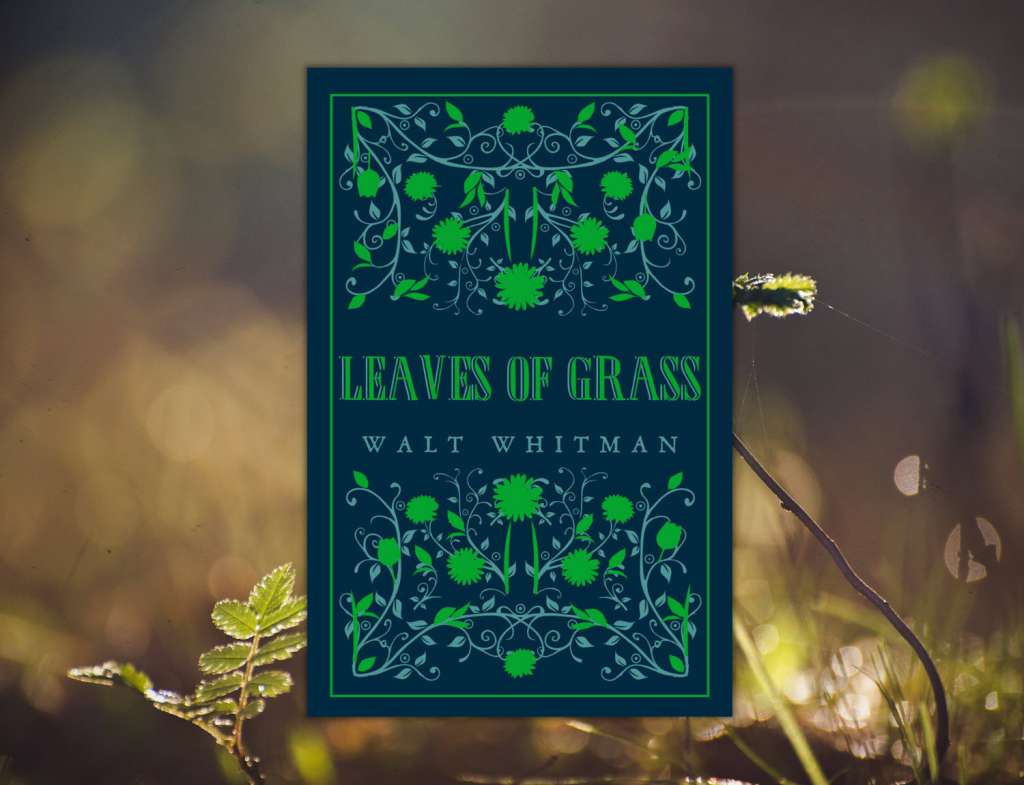
The towering significance of Leaves of Grass, often regarded as the greatest contribution to American poetry, cannot be emphasized. It has been called “America’s second Declaration of Independence.”
In addition to the text, the book is a beautiful artifact that was printed by hand and bound in a huge, legal-sized style in Brooklyn, New York, in 1855. A skilled newspaper printer, Whitman designed the binding, set the type, and helped with the hand-printing of the book, all of which contributed to the completion of his masterpiece.
Whitman intended Leaves of Grass to be a collection of 12 anonymous poems with no names to establish a connection between them. He also left his name off the title page to imply that the poetry belonged to everyone. Whitman did, however, add a frontispiece photograph of himself at the age of 37, looking confident and full of swagger.
Whitman’s Leaves of Grass was the only book of poetry he ever released. Rather than writing many collections of fresh poetry, he extended and updated this one volume, turning the original edition of 12 poems into a massive book with almost 400 pieces.
The novel has gone through six revisions (nine, if you count different type-settings). Whitman would alter, reorganize, and add to poems as soon as they were published. He saw the entire book as a manuscript that needed to be corrected and reprinted.
This method creates the illusion that Whitman’s poetry is continually emanating from a single source; it is as unified and unique as the author.

“This great reminder that joy and openness to experience and inclusivity is something that is going to be the catalyst that makes every experience more exciting.” – Rolf Potts
Check Out – Leaves of Grass
26. The Yellow Wallpaper

The Yellow Wallpaper by Charlotte Perkins Gilman was first published in January 1892 by New England Magazine. The themes and symbolism of The Yellow Wallpaper, as well as Charlotte’s views and philosophy, were significantly influenced by her work as a social reform speaker.
Later feminist writers were also influenced by the book. Charlotte Gilman’s classic short story explores the gradual onset of madness in a young girl. The story follows a woman’s mental health deterioration as she and her family are on a “rest cure” in a summer rental country house.
Throughout the story, her obsession with the yellow wallpaper in her bedroom represents her descent into madness as a result of her sorrow. Despite the fact that the story only features a few characters, each one is important to the plot. And even though the story is about her mental degeneration, the connections in the narrator’s life are critical to understanding why and how she ended up in this condition.
The Yellow Wallpaper is often regarded as an early feminist work created before American women were allowed the right to vote. The author was a member of the first wave of feminism, and her earlier works questioned the origins of women’s subjugation, particularly in marriage.
The Yellow Wallpaper, an important literary work, raises difficult questions about women’s roles, particularly in terms of their mental health, independence, and sense of self. The book is an important component of feminist literature. Discussing a woman’s physical or mental health was considered a bold move when Perkins Gilman penned this short story.
Writing about women’s lives in any capacity was viewed as foolish at best and dangerous at worst. According to The Yellow Wallpaper research, the story is an important exploration of how women are seen in marriage and society, and it is certain to become a cornerstone of the feminist literary canon for years to come.
Check Out – The Yellow Wallpaper
25. The Happy Prince and Other Tales

The Happy Prince (1888), one of Oscar Wilde’s many children’s short tales, holds a special position in his classics and may be the author’s most extensive examination of the relationship between inner and outer beauty. The Happy Prince is a tragic narrative that clearly takes inspiration from classic fairy tales, notably those by Hans Christian Andersen. However, it is a tale that is typical of Wilde.
The Happy Prince has at least three themes. According to the fundamental theme of the story, external beauty is useless, it’s just a show. Rather, true beauty is found in love and sacrifice. The second theme is that two redemptive characteristics exist: love and sacrifice, while the third theme is the growing gap between the governing class and the common people, as well as between the rich and the poor.
The novel is, without a doubt, a fairy tale in its own right. Normally, fairy tales involve supernatural creatures such as fairies, giants, witches, and talking animals. And while the most important aspect of a fairy tale is that it always has a happy ending, The Happy Prince’s ending appears to be dreadful. Both the Swallow and the Happy Prince die and are thrown into a pile of dirt. However, this is not the final conclusion of their story.
The Swallow and the Happy Prince sacrificed their lives to help the poor and destitute. As a result, God is delighted with their contributions and rewards them. He grants the Happy Prince and Swallow permission to sing and worship God in the Paradise Garden.
The most powerful lesson or moral lesson imparted by this story is the need of aiding society’s impoverished and downtrodden citizens. The second lesson is that we should be empathetic to people in need, particularly the poor, and help them whenever possible. As a result, they will experience less agony and will be able to stand on their own.
For ages, the story of The Happy Prince continues to promote the values of compassion and kindness toward others through this well written piece of literature.
Check Out – The Happy Prince and Other Tales
24. Little Women (Little Women #1)
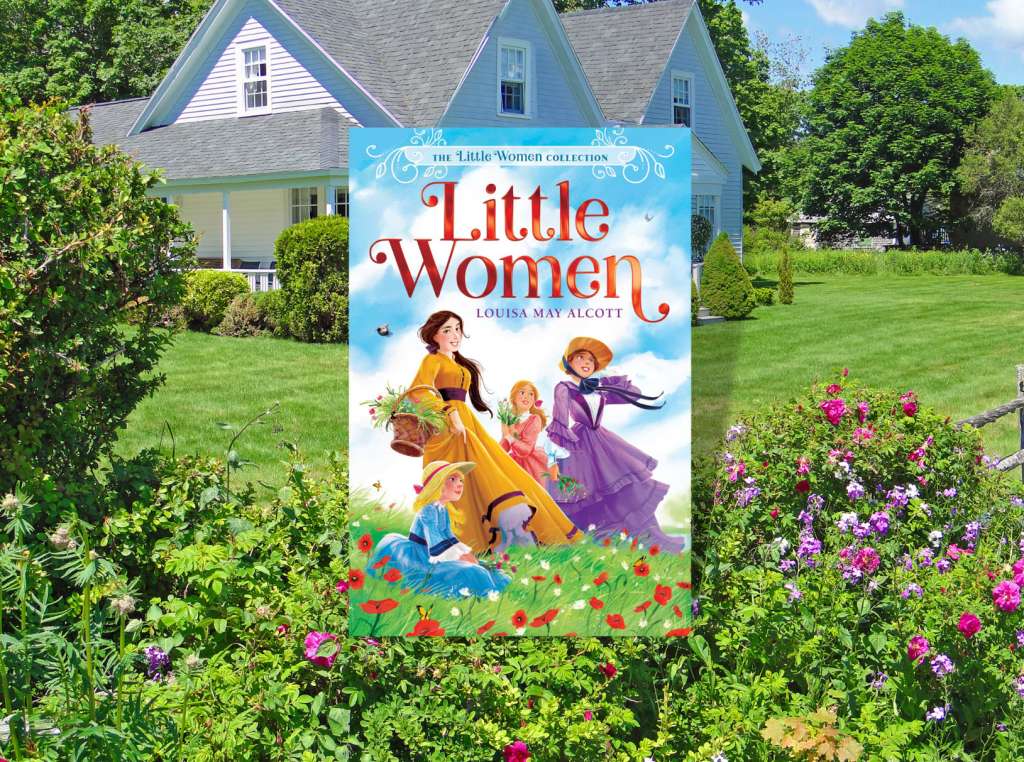
Little Women is a brilliant, simple story that has captivated readers for decades. Little Women is a well-known novel written by Louisa May Alcott and originally published in 1868 that depicts the growth of four sisters in nineteenth-century New England.
The plot revolves on four incredibly distinct yet highly creative sisters who are waiting on the home front for their father to return from the Civil War with their adoring mother. Little Women is a timeless classic that resonates to readers of all ages and genders.
It’s straightforward, charming, and emotional. One reason for the book’s continued appeal is its realism. Because it was based on Alcott’s own family, it was the most real-life story for children that many readers had yet to read. Because of its continuing popularity, Little Women is one of the most adapted works.
The story is relevant whether someone is living in 1869 or 2023. Little Women is a story about a family, sibling rivalry, love and forgiveness, pain, victory, and living a nice, peaceful existence.
Five major films have been released: two early silent pictures that are no longer available, and three “talkies” starring Katharine Hepburn in 1933, June Allyson in 1949, and Winona Ryder in 1994. Multiple tv movies and shows have also been created in the United Kingdom, the United States, and other nations.
When the story is reduced into two hours or less, the March sisters develop rapidly and rush to the altar at the end. Even if earlier versions read the book nostalgically and underlined its image of home and family, Little Women has always been a profoundly divided story with more modern overtones than it is given credit for.
It is mostly a story about maturing and learning to love and be loved without losing sight of who we are meant to be. It’s easy to see why its timeless and lasting themes have always struck a chord with people all over the world.

“Was written more than a century ago, but its message resonates today.” – Hillary Clinton
Check Out – Little Women (Little Women #1)
23. The Hound of the Baskervilles (Sherlock Holmes #5)
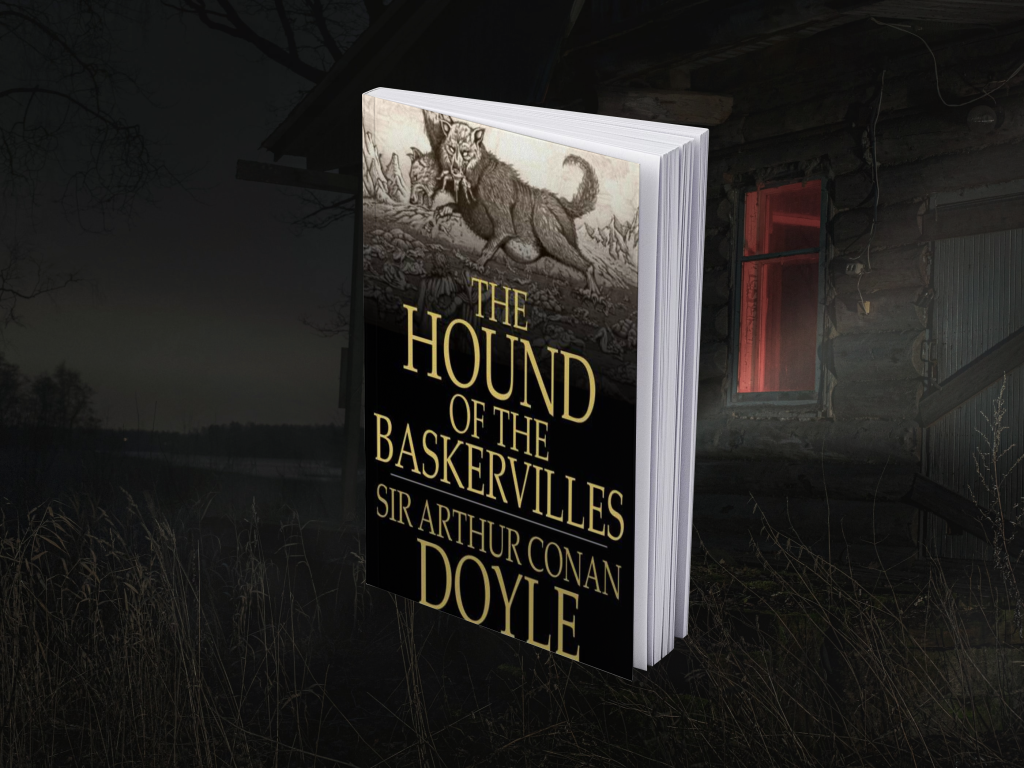
The classic mystery that is Arthur Conan Doyle’s The Hound of the Baskervilles stars Sherlock Holmes and his trusty sidekick Dr. John Watson.
Arthur Conan Doyle’s The Hound of the Baskervilles is one of those works that makes an indelible imprint on your memory and hasn’t lost its allure even over a century after its publication!
The Hound of the Baskervilles, first published in 1902 in “The Strand Magazine,” portrays Sherlock Holmes, the world’s most famous detective, in yet another murder case that appears to be beyond the limits of plausibility.
The Hound of the Baskervilles is a creepy, atmospheric novel with outstanding storytelling. It was inspired by the actual story of a perverted Squire who lived in the West Country in the 17th century, and it was set on Dartmoor, a dark and terrifying region. The guy was reputedly a criminal, and it was said that after his death, his malevolent ghost roamed the moors, commanding a gang of demonic dogs that were frequently seen around his tomb!
The Hound of the Baskervilles is one of the finest pieces of spine-chilling detective fiction. It has been adapted for radio, film, and television on a global scale. The story inspired the Baskerville Effect, a heart condition caused by psychological stress. Overall, a terrific read for a chilly, rainy night!
Check Out – The Hound of the Baskervilles (Sherlock Holmes #5)
22. The Genealogy of Morals
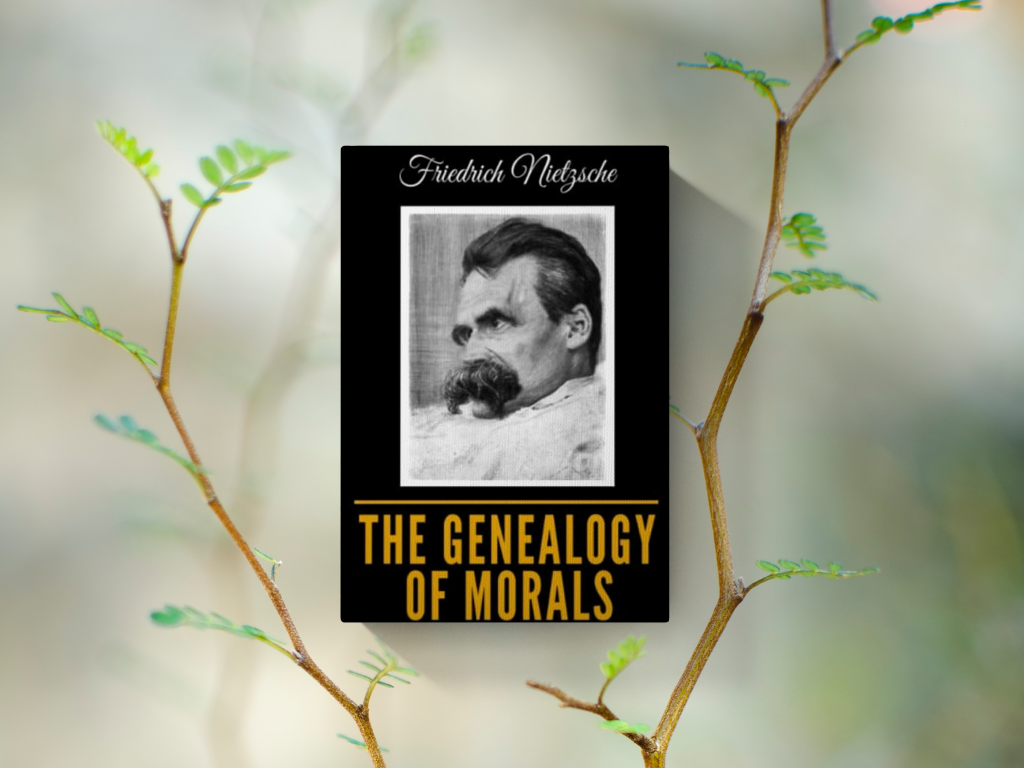
Friedrich Nietzsche released On the Genealogy of Morals in 1887. Many academics consider that this was Nietzsche’s most important and prolific period. Beyond Good and Evil was published before The Genealogy of Morals in 1886, and both volumes deal with ideas on morality’s historically established character. Nietzsche publicly attacked many of his time’s core moral assumptions and contested the bulk of the main philosophical currents.
On the Genealogy of Morals, which is still frequently read in the twenty-first century, has perhaps the most succinct summary of his fully formed philosophy.
On The Genealogy of Morals is divided into three parts. Nietzsche examines and critiques the quality of our moral judgments in each article, employing a genealogical method to investigate the origins and implications of our numerous moral concepts.
According to Nietzsche, the first article, “Good and Evil, Good and Bad,” compares “master morality” with “slave morality.” The strong, robust, and free established master morality, recognizing and labeling their own pleasure as good. Because they believed that weakness was undesirable, they considered fragile, diseased, and oppressed people as “evil.” Slaves who felt oppressed by these rich and satisfied lords referred to the masters as “evil” and themselves as “good.”
The theme of guilt, bad conscience, and the like is explored in the second article, “Guilt, Poor Conscience, and the Like.” Nietzsche explains that the origins of concepts such as guilt and punishment were not driven by a sense of moral violation. Instead, being guilty merely meant that a debt was owed, and punishment was used to collect that amount.
“What is the relevance of ascetic ideals?” asks the third article. Asceticism is regarded as a powerful and paradoxical force that governs modern existence. It reflects a faint, sick will, according to Nietzsche. Because it is unable to deal with its internal conflict, the sick will regard its primal tendencies and earthy nature as disgusting, terrible, and horrible.
Nietzsche has had a greater influence on twentieth-century philosophy than nearly any other thinker. Almost every important trend in Continental philosophy in the twentieth century was inspired by him, and his critiques and methodology were well ahead of their time.
Check Out – The Genealogy of Morals
21. Swann’s Way
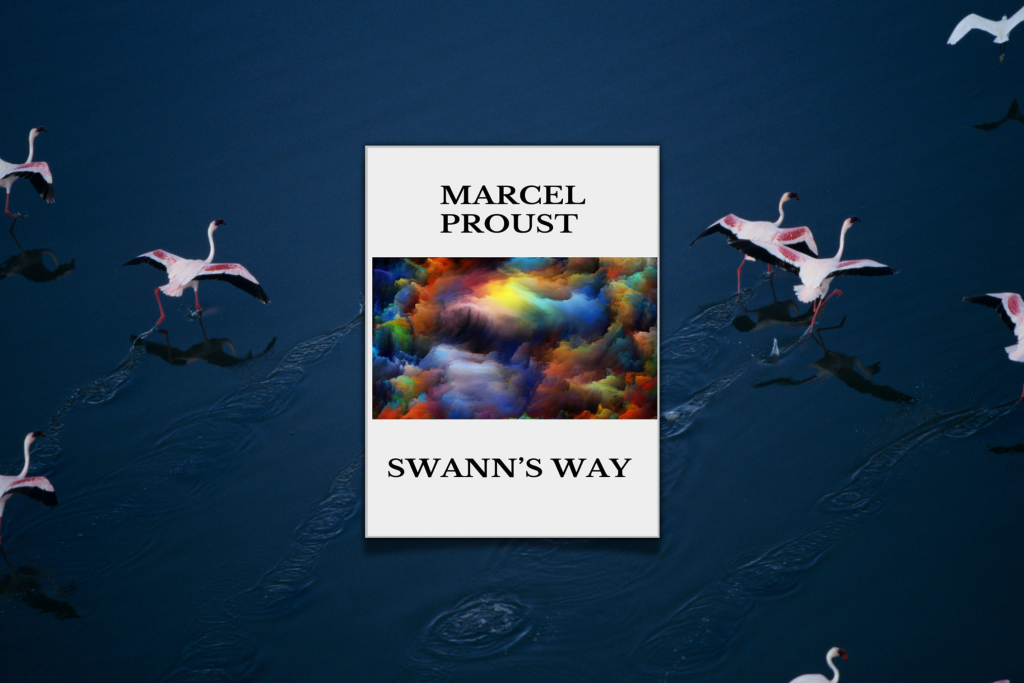
In terms of accomplishments, Marcel Proust stands out among authors.
Swann’s Way, one of the seven books that comprise In Search of Lost Time, is notable in literature for its persistent complexity of thought and richness of personality.
Proust’s concerns—the essence of love and time viewed through a person’s memories—are always relevant, so even though In Search of Lost Time is immersed in the details of French capitalist and aristocratic life at the turn of the century, it still seems fresh to readers today.
Proust struggled with whether to write Swann’s Way as a fictitious narrative or as an open articulation of his philosophical principles. He responded by incorporating both in the novel. As a result, the book delves into a number of literary and philosophical topics, such as the meaning of time and the power of memory.
The fundamental themes of the encyclopedic book are the development of sensual relationship and jealousy, the growth of knowledge, and the formation of creative awareness. It is not Proust’s subject matter that differentiates his writing, but rather his attitude to it. The storytelling of the unnamed first-person narrator regularly deviates from the plot to examine the emotions and ideas that drive even the most insignificant actions.
Although Proust’s narrator is always looking for the sources of emotion and action, the book still leaves us with unresolved questions that keep us thinking long after we have finished the book.
Check Out – Swann’s Way
20. Persuasion
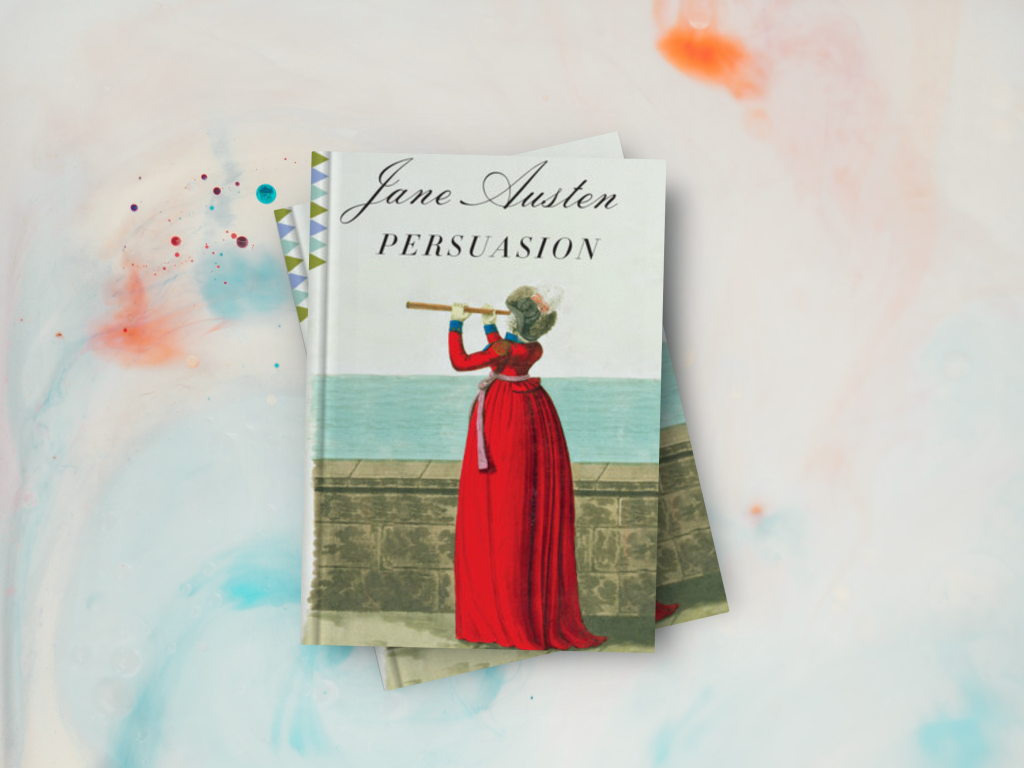
Persuasion is one of our favorite books and one of the top twenty. First and foremost, it is brilliantly written; gloomy and haunting, it is a cutting novel that captures the entire range of emotions in a short amount of time.
Another attractive component of this book is its short length. Because the book is only slightly more than 200 pages long, it is much easier to finish than some of the other titles in our list, say Les Miserables. It can be finished in one day or in between other novels.
Of course, one of the many questions that arises while reading Jane Austen’s writings is how well her work has stood the test of time?
Why do we appreciate and read Jane Austen’s works despite the fact that they were written more than 200 years ago and yet represent a culture from a different time?
Her writings, such as Persuasion, must be popular for a reason. There are many different answers to these questions, but I feel the most important one is that the stories and ideals that Austen highlights are ageless and show what makes us human.
Because the issues are universal, we are able to relate to the book more intimately because we recognize elements of ourselves in it.
This shows that universal themes are crucial in explaining why these books have endured the test of time since they are still relevant to today’s culture. Text or film versions of novels like this may change certain plot elements, but they tend to keep most, if not all, of the universal themes that characterize the story.
This is one of Austen’s most polished novels. Aside from the fact that the characters are older (for example, Anne Elliot, who is now 27 and has lost most of her youthful bloom), the novel focuses on second chances rather than childish passion. Furthermore, this is one of Austen’s most incisive works. Compared to the rest of her books, this is also the most mature.
Most interestingly, Austen portrays the wealthy class as arrogant and dimwitted. She, like Anne, has a soft spot in her heart for the navy.
However, this is not your typical love story. We never witness Anne and Captain Wentworth dating; instead, we watch their romance gently trying to rekindle. This is more engaging than Austen’s courting stories, which focus on young women who charm their suitors with a mix of beautiful youth, a strong personality, and extraordinary circumstances.
While persuasion retains the odd coincidences, it focuses on how relationships persist over time and what it takes to be happy with a partner.
It’s possible that this book will influence you differently each time you read it. It is one of our favorite books because of that. It delivers key insights on a wide range of topics, including family, love, money, power, control, and friendship.
Although it doesn’t quite have the same sugar laden richness as Pride and Prejudice, it reaffirms the same basic concept: while the road to love is paved with difficulties and twists and turns, the journey is very well worth it because love helps us grow and, in the best cases, opens our eyes and helps make us into better people.
Check Out – Persuasion
19. A Study in Scarlet (Sherlock Holmes #1)
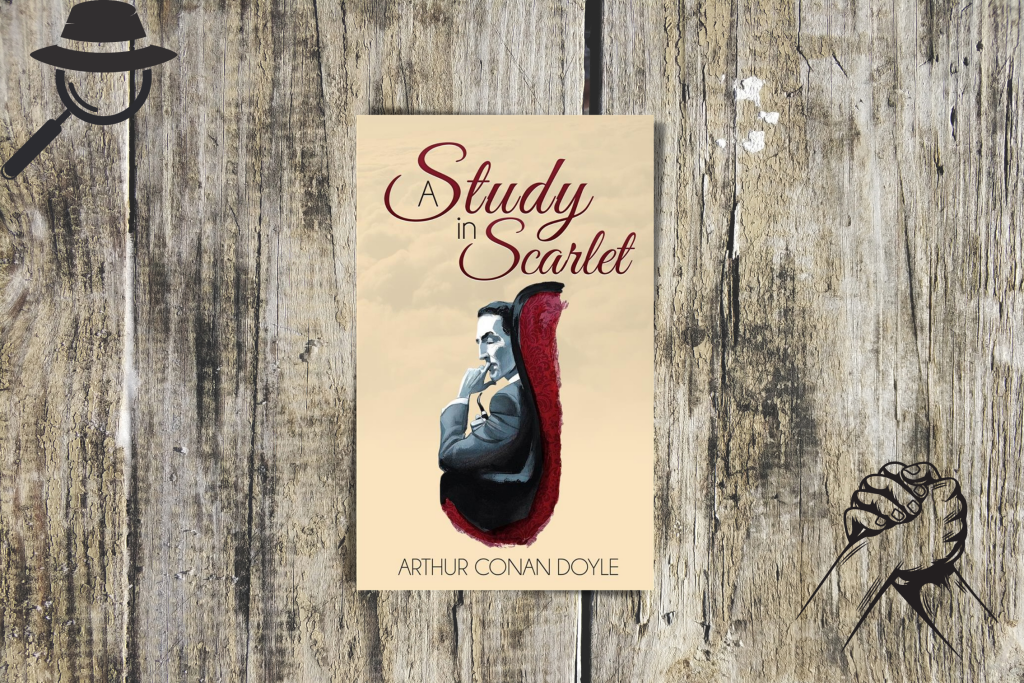
A Study in Scarlet, Arthur Conan Doyle’s debut novel, introduces Dr. Watson and the English detective Sherlock Holmes. Despite how strange it may look now, this Sherlock Holmes mystery was not well received when it was originally published in 1887.
The novel marks the beginning of the famed “Sherlock Holmes era,” and it is one of just four Sir Arthur Conan Doyle works featuring the iconic English detective.
This book is divided into two halves, with the first focused on the mythical meeting of Sherlock and Dr. Watson, as well as the characterisation of the other characters and the murder investigation.
The story begins in 1881, when Dr. Watson runs into an old acquaintance, Stamford. He was forced to retire as a result of a shoulder injury sustained during the Anglo-Afghan War, and he is now looking for a home in London. Stamford mentions Sherlock Holmes, a friend of his, who is looking for someone to split the rent in “some nice accommodations,” but he warns of Holmes’ eccentricities.
When Watson agrees to meet with Holmes, the historic meeting between Watson and Sherlock Holmes kicks off, establishing one of history’s most celebrated partnerships.
Sherlock Holmes, like Watson in the book, arouses your interest immediately. Conan Doyle, in our opinion, was effective in piqueing the reader’s interest in uncovering the riddle surrounding Sherlock Holmes, who is depicted as a mysterious person by Watson in his narrations.
What makes Sherlock Holmes so unique?
Holmes is both tough and intelligent, yet he is also likeable. For these reasons, Sherlock Holmes remains the most well-known fictional detective. Unsurprisingly, his stories have inspired other versions of the story to this day, including new investigative literature, tv series, films, and much more.
Conan Doyle’s A Study in Scarlet is a lot of fun, a must-read, and well worth rereading multiple times.
Check Out – A Study in Scarlet (Sherlock Holmes #1)
18. The Secret Garden
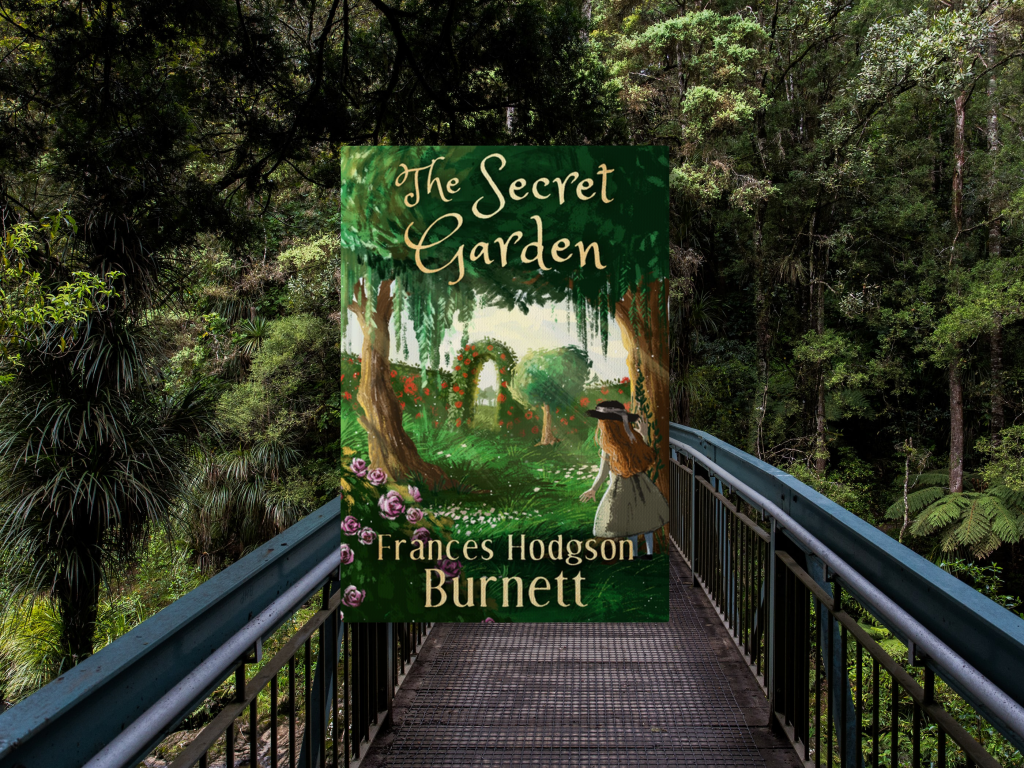
Frances Hodgson Burnett’s The Secret Garden has been dubbed “the most influential children’s book of the twentieth century.”
When it was initially published in 1911 after being serialized in The American Magazine, it was surprisingly criticized for being basic and lacking “plenty of excitement.” In a thoughtful and nuanced approach however, the book discusses how having a connection to nature may benefit our mental and physical health. It illustrates anxieties about national identity throughout the British Empire, drawing on Christian Science beliefs.
The Secret Garden has had several film adaptations, and it is still a regular on children’s reading lists today. Amir Wilson, Dixie Egerickx, and Colin Firth star in a new film that alters the story in a few creative ways for modern audiences.
The Secret Garden tells the story of Mary Lennox, a rude and arrogant young lady. She lives in India at the start of the book, later forced to move to her uncle’s farm in England due to a devastating cholera epidemic that claims her parents. The novel’s storyline revolves around how Mary and a fellow character are transformed as a result of discovering the secret garden.
At its core, it’s fascinating to watch Mary grow from a hateful, entitled kid to a kind-hearted young woman. The description stirs up such vivid images in your mind that the moment in which Mary discovers the garden after a decade of hiding is undeniably the most satisfying.
Burnett uses the cultural relationship between children and the environment to highlight Edwardian views on the usefulness of the garden. The Secret Garden, like other Edwardian works such as J. M. Barrie’s Peter Pan in Kensington Gardens (1906) and Kenneth Grahame’s The Wind in the Willows (1908), explores an English turn-of-the-century interest in paganism and the occult, highlighted by the book’s infatuation with the Greek god Pan.
Do not be put off by the fact that this is a classic that our parents have almost certainly read. Despite a few dull chapters, the book is still worth the read. Despite this, the novel easily reaches our top 20! The book certainly appeals to just about every reader, regardless of gender. Given the extensive descriptions of flowers, trees, and other natural phenomena, you may be cautious to recommend this book to persons who have little interest in the outdoors. On the other hand, it has the potential to forever alter their perspective towards nature altogether!
Check Out – The Secret Garden
17. War and Peace

Nearly 150 years after its original publication, War and Peace is still considered one of the finest books ever written and a consistent bestseller, with new editions being issued on a regular basis.
Tolstoy’s War and Peace is recognized for its realism, which he achieved via painstaking research. He investigated the Napoleonic Wars by reading history books, touring battlefields, and utilizing genuine historical incidents in order to compose a novel of living history. War and Peace is basically a novel about people trying to make sense of a society upended by battle, social and political transformation, and spiritual turmoil. For those of us living in the early twenty-first century, Tolstoy’s and his characters’ existential suffering is perfectly understandable, and his work has vital things to say to us even in our times.
The book shows multiple times how difficulty may either lock us down or free us up, allowing us to tap into our deepest reserves of creativity and strength. In it, we replay our former misfortunes while reading and prepare for much worse things to come. More importantly, it helps us recognize that even when things feel bleak, good times will return.
Tolstoy’s epic continues to captivate, educate, and inspire readers of all ages and socioeconomic backgrounds, so consider making it the first book on your reading list as well, even more so for these reasons:
It’s a relic of its time.
War and Peace is basically a novel about people trying to make sense of a society upended by battle, social and political transformation, and spiritual upheaval. For those of us living in the early twenty-first century, Tolstoy’s and his characters’ psychological suffering is perfectly understandable, and his work has vital things to say to us even to this day.
The book shows multiple times how difficulty may either lock us down or free us up, allowing us to tap into our deepest reserves of creativity and strength.
A great history lesson, to be sure.
If you like history, you’ll love War and Peace because it portrays a key period in such a manner that readers are still touched and informed by it today. Tolstoy brings the past to life by allowing you to experience the forgotten, minute elements of daily life that historians typically overlook. Tolstoy is so successful that many Soviet servicemen who were given parts from War and Peace to read in their barracks during World War II stated that his depictions of the fighting were more compelling than the actual war.
“One book that I returned to many times.”
Nelson Mandela
Check Out – War and Peace
16. Jane Eyre

Jane Eyre is still a favorite among readers, and why not? The book has all the elements necessary for complete story exploration: a compassionate heroine in the form of straightforward, victimized, fantastic, independent Jane; a stylish enigmatic sexy love interest in the form of Mr. Rochester; a spooky Gothic setting and a chilling mystery; a host of villains in the form of Aunt and John Reed, Mr. Brocklehurst, Blanche Ingram, and more; aids to the heroine in the form of Helen, Mrs. Fairfax, and Jane But why would people keep coming back to it time and time again, besides than being happily immersed in a beautiful, well-told story?
Is it just a sweet romance? Why is Jane Eyre still relevant in a more serious ideological way, despite the fact that Jane’s moral conundrums and particular set of concerns seem obsolete today?
Here’s why
Jane Eyre is more than just a breezy read; it’s also a clever, incisive analysis of the difficulty of choosing between competing moral codes. What moral norms and values must influence our life decisions? What factors impact our decision to choose and adhere to one set of beliefs over the other? These are the key questions that Jane Eyre encourages us to consider. As we see Jane fight with these challenges, we get insight into our own issues and personal standards. All this makes Jane Eyre a significant book even in our times.
Along with the novel’s extensive societal critiques, it is also clear from the story’s progression that Jane finds it difficult to choose between a number of competing moral codes: the demands of her class and society clash with the teachings of her various religious groups. Both sets of obligations frequently collide with Jane’s natural wants for physical intimacy and free self expression; in other words, they are not different to conflicts people face today, even though the exact meanings of “good” in each of these scenarios have changed.
In the course of the story, Jane meets a variety of people who take multiple stands on this fundamental conflict between societal expectations, moral obligations, and personal desires. Jane struggles with conflicting claims at every turn. Jane is inclined to let the expectations of one set of principles bury the others in every confrontation. She must choose which ideals are most important.
Love, sex, and strong self-expression are portrayed in the book as positive and vital. But when fire—and desire—get out of hand, they can become absolutely catastrophic.
At this point, it is clear that we share Jane’s struggles. Although Jane’s particular issues may appear outdated to a person living in the 21st century, humans continue to fight with opposing mindsets and desires.
Do we live up to social or family expectations for individuals in our class, color, or ethnicity, or do we prioritize pursuing our own goals and aspirations, or do we uphold some sort of higher moral standard above all else? Or do we attempt to choose amongst these?
There are many more themes in this book than the ones we’ve mentioned because it is a complicated work. However, by observing intelligent, sympathetic, and inquisitive Jane as she tries to deduce what it means to be good in both her society and ours, we may definitely gain a great deal of knowledge.
Check Out – Jane Eyre
15. The Elements of Style

The book called The Elements of Style has gained a tremendous reputation. By performing a quick Google search, you will discover so many who regard it as a sacred text of the trade, as well as countless others who denounce it as an abomination.
The truth is right in the middle, as it is with many things. But regardless of whether you’ve read the book or have strong feelings about it, there are lessons that every writer must take away from this small gray book.
This style manual provides useful tips for improving writing abilities. The practice of simple English is emphasized regularly. By teaching how to make your sentences more interesting, this small book can improve the way you communicate.
The book is now regarded as a legend in its own way, and the story it tells is now a part of our contemporary creative mythology. However, like a good fairy tale, it is filled with more interesting, improbable, and even wacky aspects than a plot description alone would suggest.
The Elements of Style by Strunk & White is one of the most significant and enduring works on writing. Its cult popularity and enduring legacy have led to many imitations and references.

“This is my guide. I accept that I’ll never write anything as good as the introductory essay by William Strunk Jr. It’s brilliant.” – Bill Nye
Check Out – The Elements of Style
14. The Importance of Being Earnest
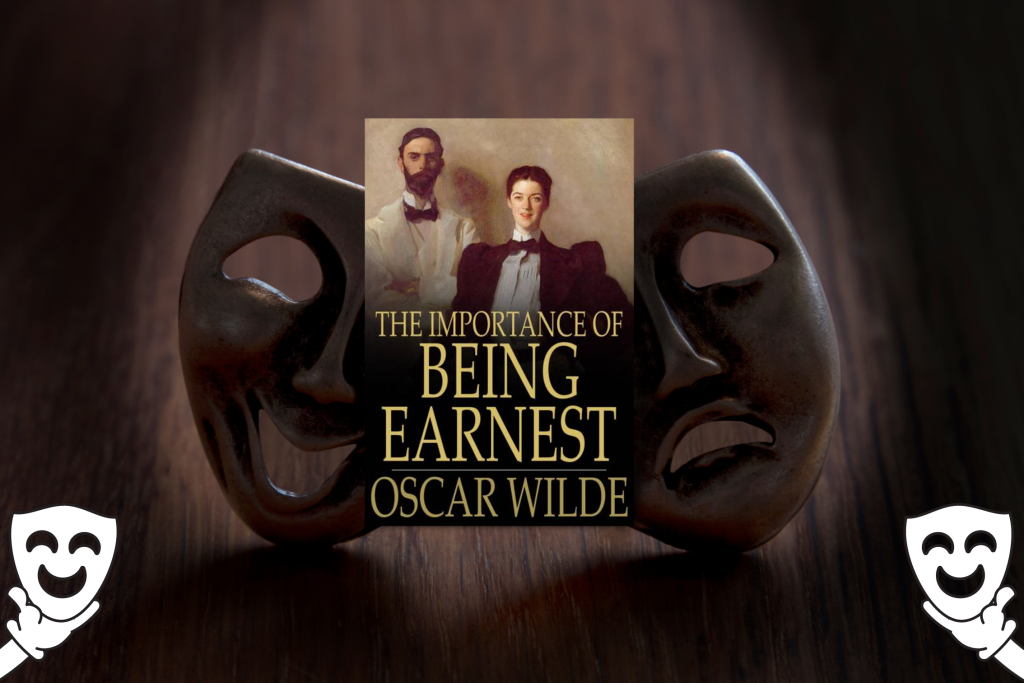
It is easy to see why Oscar Wilde’s The Importance of Being Earnest is considered as a classic; it is pure genius. Despite the years that have passed since its introduction, its stinging critique of class-based society’s hollowness remains powerful. We are convinced that you will be surprised by how carefully and neatly the plot and characters were connected.
Oscar Wilde transforms the ludicrous and outrageous into absolute genius in The Importance of Being Earnest. This Oscar Wilde comedy is a polished satire of Victorian courtship and etiquette, complete with fictional names, incompatible lovers, and a missing pocketbook.
It is one of the most beloved plays ever written in the English language due to its keen social criticism, great comedy, and effervescent wit. We strongly recommend watching Oscar Wilde’s masterwork The Importance of Being Earnest in its original form as a play.
Oscar Wilde’s short drama The Importance of Being Earnest portrays people that are ironically not honest. Algernon, a bachelor in London, takes on the character of Bunbury, a friend he uses to get himself out of awkward social situations. Jack, like Cecily, has an imaginary brother named Ernest, whose constant “illness” allows him to access the city anytime he wants. Ernest lives in the countryside with Jack’s ward, Cecily, an orphan.
When Algernon visits Jack’s remote home disguised as Ernest, the made-up unwell brother Jack had planned to kill off that same day to put an end to his pretending for good, a significant misunderstanding occurs as a result of these fictitious identities. The two friends must explain the situation to their respective fiancées while also discovering something amusing in the process.
This play is extremely hilarious, thanks to its harsh critique and opinionated characters. It has a satisfying ending, and the story is engaging from start to finish. In my view, everybody who enjoys a clever and amusing comedy or just a good laugh should enjoy The Importance of Being Earnest.
Check Out – The Importance of Being Earnest
13. Les Misérables
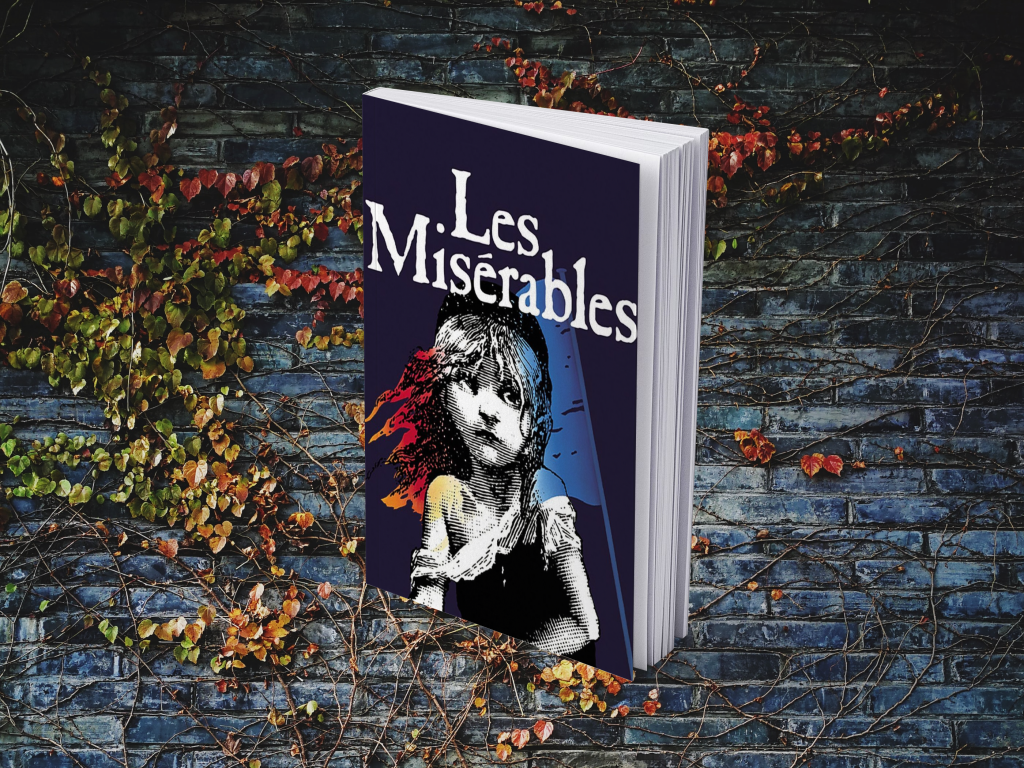
You’ve probably always wanted to read Les Miserables. Maybe for the first time or for some, a revisit. You’ve almost certainly seen the musical, and of course, seen the film. Les Mes, first released in 1862, is widely regarded as one of the best novels of the nineteenth century, with good reason.
The book is frequently known to by its original French title in the English-speaking world. Several other names have been given, such as the Miserables, The Wretched, The Miserable Ones, The Poor Ones, The Wretched Poor, The Victims, and The Dispossessed. Opening in 1815 and ending in the 1832 June Rebellion in Paris, the story covers the lives and relationships of various individuals, mainly ex-convict Jean Valjean’s hardships and his journey of redemption.
Among its many topics, the novel majorly expounds on French history, Parisian architecture and its modern design, politics, morality, anti-monarchism, justice, and religion. It also goes on to study the structure of romance and family love while also exploring the nature of law and grace.
By now, numerous film, TV, stage, and even musical versions of Les Misérables have helped to make the book and play more famous around the world. The major and most defining storyline of the book is the tale of ex-convict Jean Valjean, who transforms into a force for good in the world yet is unable to escape his criminal past.
Les Mis will indeed improve your appreciation of the musical. Reading this book is gruesome, and it stays with you. After reading Les Mis, you get the feeling that you know Fantine, and her song from the play, I Dreamed A Dream, carries a huge amount of power. Every beloved TV character is given a thorough, in-depth study in the book.
Many of the issues that plague us in the twenty-first century can be remedied by reading Les Miserables. We’re just now starting to understand how bad social media and smartphones in particular are for our mental wellbeing. Just having our phone in the room causes us to have shorter attention spans, less capacity to think critically or creatively, and even a statistically lower IQ!
Today’s content creators must structure information into easily consumable bits. We blend text with graphics and video, and our books feature shorter chapters with shorter paragraphs.
The concept of what literature can and should achieve in the twenty-first century is not the same as it was before Hugo wrote Les Miserables. In today’s society, a novel must be a wonderful read in order to keep a reader’s attention when there are so many electronic gadgets clamoring.
These days, it’s difficult to find challenging literature that makes you, the reader, work, which is bad for all of us since your brain is a muscle that demands continuous work to keep sharp. Reading difficult, thought-provoking literature, such as Les Miserables, is a really efficient method to gather skill.
Les Miserables is a timeless story packed with tough historical lessons and deep and meaningful reflections. Some readers find the latter portions of the book to be tedious and decide to skip it.
They should be the polar opposite for you. You should read Les Miserables since it is considerably more difficult and challenging than the current thriller on the bestseller list. You need to read it since it will make you a brighter, more competent thinker as well as a better reader.
Check Out – Les Misérables
12. The Inimitable Jeeves (Jeeves #2)

Paul Graham’s answer to “which P.G. Wodehouse book do you recommend?”
The Inimitable Jeeves is a great place for new Wodehouse fans to start since it features Bertie Wooster and his valet Jeeves, two of Wodehouse’s most famous characters. Despite excluding the initial Jeeves and Wooster short story, (Extricating Young Gussie), The Inimitable Jeeves remains one of the oldest and best compilations in the series. Rosie M. Banks, Honoria Glossop, Bingo Little, and her father Sir Roderick Glossop are among the important characters we first encounter in this story.
The Inimitable Jeeves follows a series of mini-adventures focused on the stylishly illiterate Bertie and his witty valet, Jeeves, as they traverse the pretentious aristocratic world of British nobility and encounter some outright shady personalities. This is typical of Wodehouse’s writing style.
In order to convince his stingy uncle to agree to the thought of a less-than-traditional wedding with a store lady, Bingo Little, an old school friend of Bertie’s, pries Bertie off as a writer of radical female romance. This brings additional laughter into the story.
Bingo keeps upping the stakes as he gets involved in everything from the emergence of socialism to a little side betting on how long a vicar’s sermon will be, and a combination of amateur dramatics to woo the new flavors of the day. Things spin out of control, as they always do, and only Jeeves can save Bingo and Bertie from the temptations of love, excess living, and a poor family.
Wodehouse fans regularly revisit The Inimitable Jeeves, which is more of a collection of interconnected stories than a typical novel, and dig into their favorite stories when their injured spirits need healing. Many readers will swear they absolutely loved the thirteenth chapter, The Great Sermon Handicap, and any collection of the “Best of Wodehouse” past and present must include it.
Check Out – The Inimitable Jeeves (Jeeves #2)
11. The Idiot

More than 150 years have passed since Dostoyevsky published his well-known book about a Christ-like man who experiences hardships. The book includes references to the author’s near-death encounter.
This is one of the greatest works by the author of Crime and Punishment and The Brothers Karamazov, and it was published in a number of magazine issues between 1868 and 1869. Although it may make you laugh, it is certainly not a comedy.
It is hardly a thriller, but its finale is puzzling and terrifying. Also, it is not precisely a swashbuckling adventure, but it is ‘Dickensian’ in its vast cast of highly colored personalities and commentary on the society of the day.
Although it has frequently been attempted to be adapted for theater and screen, the tragedy is too delicate and deep to birth a great opera and it frequently leads to some extremely extended talky sequences with too many characters.
It’s a fantastic book, and any sympathetic reader could feel completely engrossed in it, only to be startled out in disbelief when the author starts revealing that his characters are fictional.
Prince Lev Myshkin, the protagonist of the book, is the ideal man. According to the Polka website, “Dostoyevsky’s objective was to show a flawless guy, full of compassion for all, and capable of understanding everyone in a world of terrible, nasty individuals.” Myshkin is referred to as “Prince Christ ” in Dostoyevsky’s writing, and he is truly like Christ in that he is full of compassion and forgiving and without any hint of wrath.
There are several outstanding characters.
Every character in the book—and there are many. Apart from Prince Myshkin, is somewhat fixated on something. Whether it is Myshkin’s childhood abuse survivor Nastasya Filippovna, who is seen as ugly and “fallen,” or the 18-year-old Ippolit who attempts suicide although dying of phthisis.
A daring and uncommon experiment
Dostoyevsky had to let the story fly when writing The Idiot. Originally, the writer had intended to create a book about a rebel who finally found God, but he then shifted his plans and decided to ask if the Christian concept, as personified by Myshkin, is still viable in today’s society.
The writer had to be as accurate as possible, so he wrote without having a fixed ending in mind, just thinking up scenarios and describing how the heroes would respond in line with their character traits. This was far from easy.
Dostoyevsky’s literary force is incomprehensible; simply consider the number of writers and intellectuals who admit that Fyodor Mikhailovich had a significant impact on them.
Check Out – The Idiot
10. Essays of Michel De Montaigne – Complete

As one of the most significant characters of the Renaissance, Michel de Montaigne was solely responsible for the success of the essays as a literary style. The three volumes and 107 chapters that make up The Essays of Michel de Montaigne have various lengths.
They were first published in the Kingdom of France and were initially written in Middle French. The Essays, which first appeared in 1580, address a variety of subjects.
Michel de Montaigne reminds us that he wished to compose his renowned Essays as a pastime for his bored mind when he retired to his family home in 1572 at the age of 38. He didn’t want or anticipate others outside of his close group of pals to be particularly impressed.
The free-form writings that followed, albeit rooted in ancient poetry, history, and philosophy, undoubtedly represent something new in the development of Western thinking. In their day however, they were practically scandalous.
Prior to Montaigne, no author in the Western canon had the idea to include pages on topics as varied and presumably unimportant as “Of Smells,” “Of the Custom of Wearing Clothes,” “Of Posting” (letters, that is), “Of Thumbs,” or “Of Sleep,” much less even observations on the recklessness of the male element, a topic that frequently engrossed him.
One may argue that Montaigne’s 107 Essays, which ranged in length from a few hundred words to several hundred pages in one instance, came very near to establishing modernity in the late sixteenth century.
Fans in almost every age have praised Montaigne for his tenacity in compiling his remarkable collection of stories, debates, digressions, and reflections on virtually everything under the sun, from how to deal with an opponent to whether women should be treated differently when it comes to sex.
Inside a decade after his passing, Shakespeare and Bacon had been influenced by his Essays. To the thinkers Montesquieu and Diderot, he was a hero. Voltaire even praised Montaigne as “the least systematic of all philosophers, but the brightest and most charming” despite the fact that he was solely educated through his own readings, his father, and his childhood instructors.
According to Nietzsche, the simple fact that Montaigne’s Essays exist makes life in this world more enjoyable.
Check Out – Essays of Michel De Montaigne – Complete
9. Meditations

Meditations by Marcus Aurelius is possibly the only book of its kind. Better still, he wrote it as the Roman emperor. As such, it includes the personal reflections of probably the most powerful man in the world at the time on how to live a better life. The lessons learned may be dated, but their significance has only gotten stronger with time.
The book is founded on the Stoic philosophy of morality, which is influenced by its logical framework and concepts of the physical world.
As social beings, the way to eudaimonia (happiness, or blessedness), according to Stoicism, is attained by taking each moment as it comes, resisting the temptation of pleasure or sorrow, using logic to make sense of the universe and carry out one’s role in nature’s plan, working with each other, and treating everyone with justice and fairness.
The book Meditations requires patience and time. Take your time reading it. The book begins with Marcus Aurelius thanking everyone who had helped him in whatever way.
To familiarize yourself with the context, you may also want to read a little bit about his life (sometimes it is mentioned in the Introduction chapter). Marcus Aurelius uses remarkable elegance and simplicity when writing, as one should when trying to write as a sort of meditation.
The 12 books that make up Meditations detail various eras in Marcus Aurelius’ life. Furthermore, the stories are not difficult to follow even though they are not necessarily in a chronological order. Because Stoicism does not deviate from common reasoning and logic while discussing philosophical concepts like the self, it is still an excellent book for today’s reader.
With this book,dogma doesn’t quite exist. What you get with this book is solid arguments that support each sentence, before a very kind bit of advice at the end.
It’s a great exercise for bringing clarity of thought because the writer leaps from one topic to another quickly but continues coming back to the first. The famous emperor focuses on three key subjects:
- The power of mind
- Being present in the moment
- Interacting with people
The book itself is a form of meditation. It makes sense that some of the wisest minds in human history have read it and continue to do so.

“It’s really wild when you think about how long that guy lived and how applicable some of his thoughts are today.” – Joe Rogan
Check Out – Meditations
8. Crime and Punishment

As one of the finest pieces of literature in history, Crime and Punishment is still the most well-known Russian book. It is first and foremost a compelling detective story, but one in which the horrific crime is revealed from the start.
It centers on Raskolnikov, a poor law student in St. Petersburg who is unable to pay for his education, and the mental suffering and moral conundrums he faces. He might be seen as a materialistic rational who believed that God had passed away, making him an anomaly in his day.
He was of the opinion that tradition and cowardice were the sole causes of moral behavior in people. Dostoevsky’s reputation as the greatest psychologist in literature is confirmed in Crime and Punishment. Raskolnikov is a master in and of himself due to the great contrast between his innermost thoughts and his outward look.
In addition, Dostoevsky created this work at a period when he was experiencing psychological pressure, and this mentality is reflected in Raskolnikov’s thinking. He is a character who no one in the book appreciates, yet all of his acts are designed with tremendous precision.
The latter is impulsive, violent, and troubled in his thinking, but he must maintain composure to alleviate any skepticism and to come up with strategies for evading the multiple traps the police have created to corner him. The literary form of Raskolnikov’s stream of thoughts is exceptional!
Intensity. Dramatic tension is a skill that Dostoevsky excels at. Paedophilia, teenage prostitution, terrible poverty, and other topics are all crudely portrayed in this work and never fail to touch and frighten the reader.
Furthermore, the villains are crafty maniacs and extremely damaged people who prey on their victims when they are most vulnerable, evoking situations of immense tragedy in the end.
The Backstory. The novel Crime and Punishment is not merely a work of fiction. It serves as a critique of ideologies that glorify man over God. People may not even appreciate why Dostoevsky placed such a strong emphasis on the various mental states Raskolnikov experiences, yet this is where the novel’s true beauty lies.
It is essential that readers learn more about Doestoevsky’s motivations for writing such a story, ideally after reading it. They won’t be able to completely understand Fyodor Dostoevsky’s genius or the masterpiece that is Crime and Punishment until then.
Larry King actually mentioned this book on “The Tim Ferriss Show” podcast.
Check Out – Crime and Punishment
7. The Count of Monte Cristo
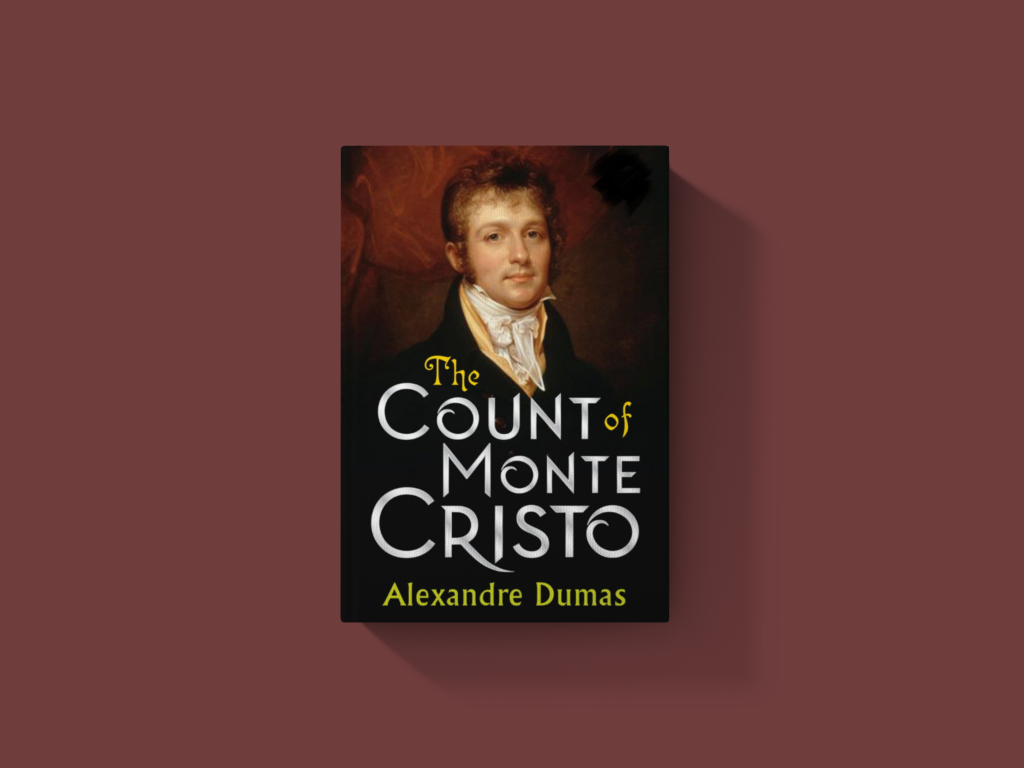
Alexandre Dumas’s The Count of Monte Cristo is a magnificent whirlwind of unique characters and intertwining narratives that can leave you mesmerized and craving for a more in-depth look into this world of intrigue, passion, adventure, and suspense.
The Count of Monte Cristo is a beloved classic novel that was allegedly based on the actual account of Francois Picaud, a shoemaker from Nimes in the 19th century who was jailed in the castle of Fenestrelle after being charged with spying for the English.
This work is extremely unforgettable since it covers not only Edmond Dantès’s life, as well as the lives of his girlfriend, best friend, family, and even his shipping company colleagues. It’s full of cunning schemes, vengeance, heartbreak, mystery, and pirating, but it’s also brimming with young love, unlimited faith, and families inspired with the understanding that blood truly is thicker than water.
It is a slowly buildup tale of forgiveness and vengeance. The reader is given a clear understanding of how weak and hopeless Dantes feels in light of his circumstances. It’s impossible to not feel sympathy for the character and the torment he has endured for being, at least in the reader’s opinion, a kind, non-offensive person. You may also view it as a romantic love story because of this.
The last thing that’s keeping him alive through his captivity is the hope of one day being together with Mercedes, the love of his life. His passion for her shows the strength that genuine love has on the human brain as it pushes him ahead. Throughout those prolonged years of loneliness, his determination to reconnect to the arms of a loved one kept him going; however without hope, he most likely would have given up his fight to survive.
But it also highlights the fact that getting revenge isn’t always satisfying. The Count of Monte Cristo simply proves that. We often believe that when we are insulted, we must get revenge in order to feel better. However, this is often not the case. In the book, Dantes does get his sweet revenge, but is he any happier now?
Last but not least, it’s fair to believe that Dumas’ frustration may have been reflected in the book during the time it was written. Possibly he wasn’t only writing a novel, but also, discreetly, spotlighting what was happening all around him. The Count of Monte Cristo may also be underlining how fragile the state was at the time since the financial, political, and judicial institutions in France were mostly rotten.
However, even without considering the novel’s deeper subtext, this is a wonderful masterpiece that ought to be read. We understand that it might be daunting to start a book with more than 1200 pages, but I can assure you that it will be worthwhile. The language is lively and smart, the story is vivid, there are no awkward silences, and the main players are all so well drawn out and detailed that you can see them all.
We highly encourage anyone wishing to fall in love with not just a cast of endearing characters, but also a reader seeking to dive wholeheartedly into a universe they might find themselves appreciating forever, to read this book.
Although The Count of Monte Cristo was published in the 1800s, and sure, the vocabulary may take some getting used to, once you comprehend the grammatical structures and proper language usage, the plot almost leaps off the pages.
It is a masterpiece that spans a variety of genres, including crime, historical fiction, fanciful melodrama, and gothic romance, making it popular with readers of all ages.
This book has won a special place in so many people’s hearts as one of the greatest novels of all time because it is both brimming with charm and unnervingly funny.
“Speaking of a book about grudges.”
Mike Maples, Jr.
Check Out – The Count of Monte Cristo
6. Grimm’s Fairy Tales
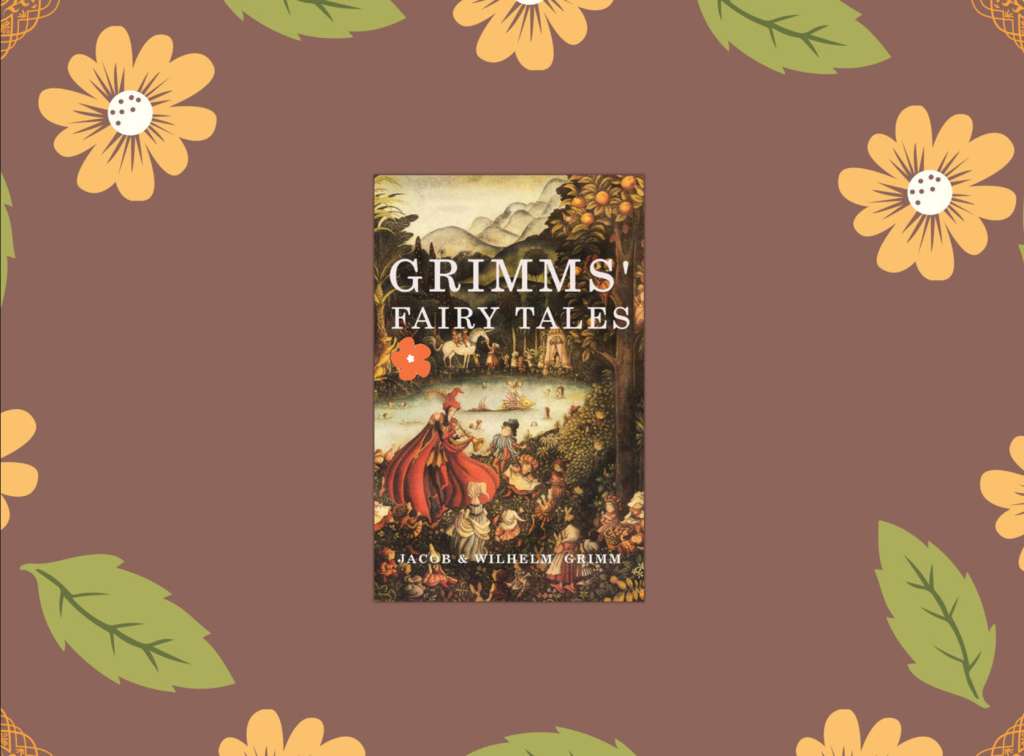
One of the most important works of folklore in Germany, Europe, and finally the entire world was published two hundred years ago by two young German librarians named Jacob and Wilhelm Grimm.
Seven versions of their stories emerged throughout 1812 and 1857, each one varying from the one before it until the last, most well-known edition hardly resembled the original.
Given that the original edition recently received recognition during bicentennial festivities around the world, now could be a perfect moment to reassess what we now believe to be true about the Brothers Grimm‘s original stories.
The tales that the Brothers Grimm initially gathered are not, technically speaking, “fairy tales,” but rather harsh, rude, ludicrous, funny, and sad stories. In truth, the Grimms never meant for children to read them. The stories focus on how children and their families responded to the difficult situations they faced.
The Grimms wanted to safeguard the tales before they were lost forever because they believed that the values and stories came organically from the German people as part of a historical heritage. The Grimms’ collection of tales was a unique addition to folklore, and UNESCO has even included their Kinder- und Hausmärchen (Children’s and Household Tales) in its Memory of the World Registry.
Their first edition, which was released in two volumes in 1812 and 1815, served as a major source of inspiration for folklorists in Europe and the United Kingdom to collect stories from peoples’ historical accounts and preserve them as a part of their cultural legacy.
It’s interesting to note that when you read the stories compiled by Jacob and Wilhelm Grimm, you’ll encounter several “fairy tales” you previously thought you remember from bedtime stories, picture books, and cartoons. From “Cinderella”, “Little Red Cap” (popularly known today as “Little Red Riding Hood”). “Snow-White,” “Hansel and Gretel,”Rapunzel, and Rumpelstiltskin”. They also include a set of stories collectively known as “Tom Thumb.”
You’ll be surprised by how unusual the classic German folktales are on many occasions. These adaptations from the Grimm collections may have served as the basis for the renditions you are familiar with, but they have been Disneyfied, tidied up, polished over, and overall bowdlerized. Some of these original tales are far grittier, even crueler, than you would have imagined. The abrupt, casual savagery may surprise, or even shock a modern reader, that we can be certain.
Check Out – Grimm’s Fairy Tales
5. Anne of Green Gables (Anne of Green Gables #1)
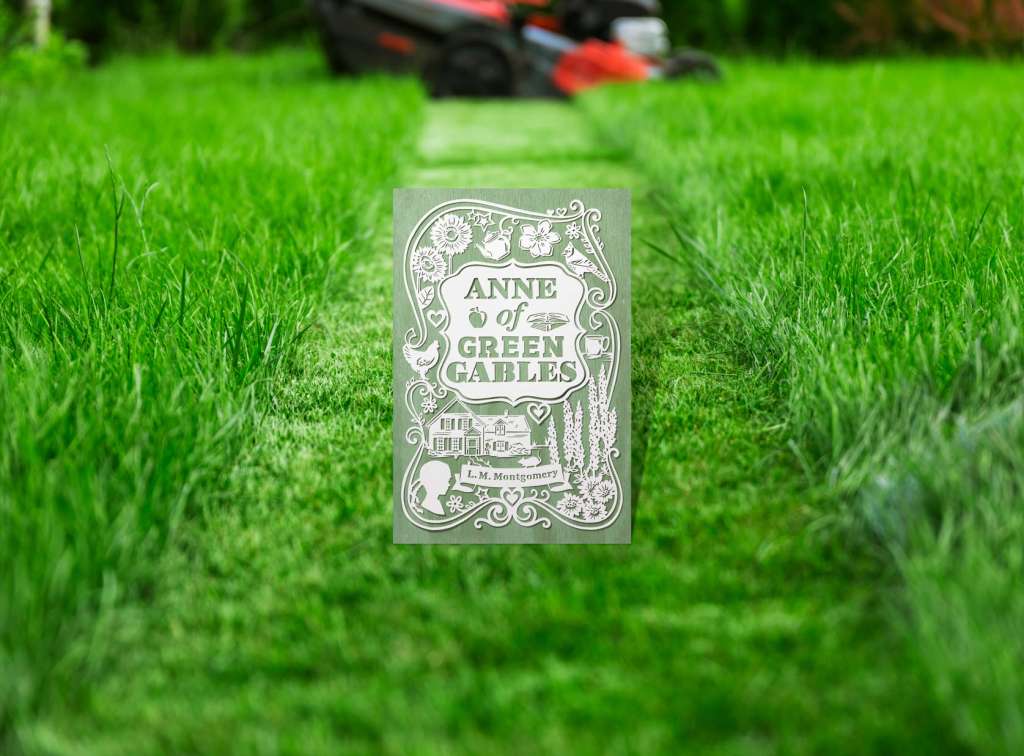
Amazing stories aren’t limited by time or space; they cross national boundaries and language differences.
Good literature travels far, as illustrated by a recent survey on the most translated book in history. Preply’s map displays the books that have been translated the most into each nation and continent.
The most translated Canadian novel is Lucy Maud Montgomery’s timeless coming-of-age story Anne of Green Gables. It has been translated into more than 36 other languages.
One of Canada’s most recognized works of literature is L. M. Montgomery’s tale of the orphaned redheaded girl named Anne Shirley.
Since its first 1908 publication, Anne of Green Gables has sold over 50 million books, inspired stage productions, television shows and films, a ballet, and more. It was included in Time Magazine’s ranking of the top 100 YA [Young Adult] novels of all time.
When Anne of Green Gables was first released, it was promoted as a children’s novel, and if you visit a bookshop today, you will still find it there. However, a lot of people think Anne of Green Gables is not a kid’s novel.
Finding love, figuring out who you are as a person, and having dreams are all important components of being human that are discussed in this novel, which also touches on the essence of life and death. Although it may be the tale of a little girl going through adolescence, it is also our collective story.
The tale emphasizes the value of family, stability, community, and home across all age groups and genders. A tale that can be told over and over again, a book that can be read repeatedly, and a movie that can be seen over and over again without being boring. It is ageless, cross-generational, and an evolving tale that evolves alongside us.
We want to tell our family, friends, and kids about this narrative so that they can discover the beauties of Anne’s world for themselves.
The fact that it continues to ring true for so many people around the world today is evidence of how well Montgomery’s narrative held up and how those who adopted it were able to build on it.
Check Out – Anne of Green Gables (Anne of Green Gables #1)
4. Pride and Prejudice
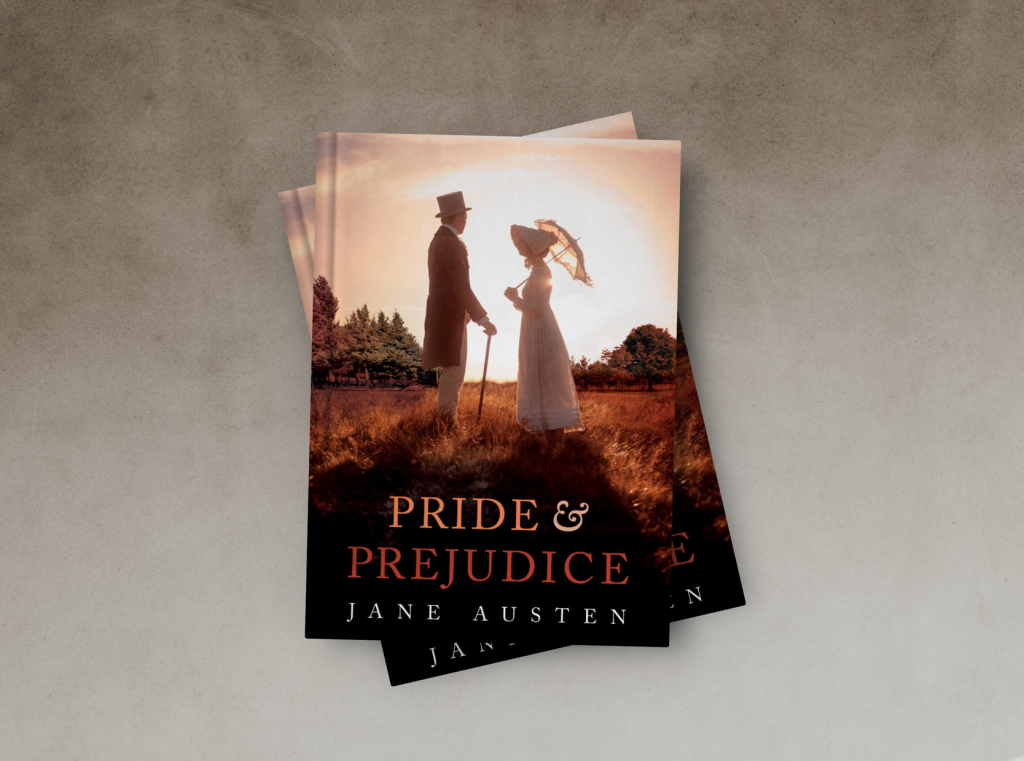
One of Hillary Clinton’s 3 answers to “Is there one book you wish all students would read?”
Everyone has, at some point in their lives, come upon a copy of Jane Austen’s Pride and Prejudice, which is a widely accepted fact. It may have been in your school’s library, you might have seen a colleague reading it on the couch, or you might have been obligated to read it for class. Since Pride and Prejudice’s debut more than 200 years ago, it has remained a fan favorite as well as one of the most often recommended books in academic curriculums.
What thoughts spring to mind when Pride and Prejudice is mentioned? Is it only the tale of a mother wanting to marry off her daughters to wealthy men? Or does the book stand out from many others of its day because of the account of Elizabeth’s desire to wed for love rather than money? Let’s look at the reasons why Pride and Prejudice ranks among the most popular books ever.
It Is A Book On Reading, For One.
The story places a great deal of emphasis on the major impacts that reading can have on a person. Elizabeth, the main protagonist, likes to read. In a time when women were not particularly expected to read, she forgoes playing a card game in favor of dedicating herself to reading, which is a truly unusual gesture.
Even without that, she already distinguishes herself from Caroline Bingley, whose true objective for reading is to win over Mr. Darcy.
The perfect romantic comedy
Pride and Prejudice, one of Jane Austen’s most accomplished novels, brilliantly combines humor, sarcasm, and romance. In order for Elizabeth and Mr. Darcy to be together, they must each let go of their personal pride and prejudice, which is the primary theme of the novel.
By the book’s end, we witness both of the characters emotionally develop as they forget and rediscover their attitudes toward one another, and by consequence, the rest of the world.
The story is based on a number of misunderstandings that are likely the only hurdles in the union of the two. The book is entertaining as well thanks to Mr. Bennet’s genuine comments like:
“For what do we live, but to make sport for our neighbors, and laugh at them in our turn?”
“I have a high respect for your nerves. They are my old friends. I have heard you mention them with consideration for these twenty years at least.”
Memorable Quotes
Right from the very first words of the book, which are so skilfully written, Pride and Prejudice features one of the most well-known collections of quotes:
“It is a truth universally acknowledged, that a single man in possession of a good fortune, must be in want of a wife.”
The tone for the remainder of the book is set by the oozing irony and sarcasm, and Austen does not let readers down.
Or perhaps this:
“He is a gentleman, and I am a gentleman’s daughter. So far we are equal.”
It’s only Austen could have used sarcasm in her intricate writing style without coming across as overly arrogant.
Excellent Characters
The novel’s genius is in how easily the reader can identify with the characters. We have also discovered individuals who fit this description in our lives, including Mrs. Bennet, the stereotypical overly enthusiastic aunt whose only goal in life is marriage,
Mr. Bennet, the distant yet devoted father to his daughters who has a favorable attitude toward one of them, Lydia, a sixteen-year-old who is infatuated with good looking army officers, Wickham with his playboy charms, and other likable figures. You never get the impression that a character is new since we have all met, known, and most likely understood them.
Harsh Realities
While the Bennet Sisters’ hilarious situation of marrying into money, the story also discusses the misfortune of Elizabeth’s friend Charlotte, whose standing in society is not particularly high. Elizabeth is disappointed by Charlotte’s smart decision to wed Mr. Collins since her romance makes her believe she can’t understand Charlotte’s position.
The daughter of a former knight, she is too well-educated to wed a working class man who would lower her class status. She also lacks the good looks necessary to be paired with someone from the higher class because of this.
Her only option is to make a compromise, and we regularly see this scenario in marriages or matches, which is why this book feels so authentic.
These are the five main reasons why Pride and Prejudice remains a timeless classic.

“In terms of classics, you can’t do better than Jane Austen for understanding the human soul.” – Tim O’Reilly
Check Out – Pride and Prejudice
3. The Souls of Black Folk
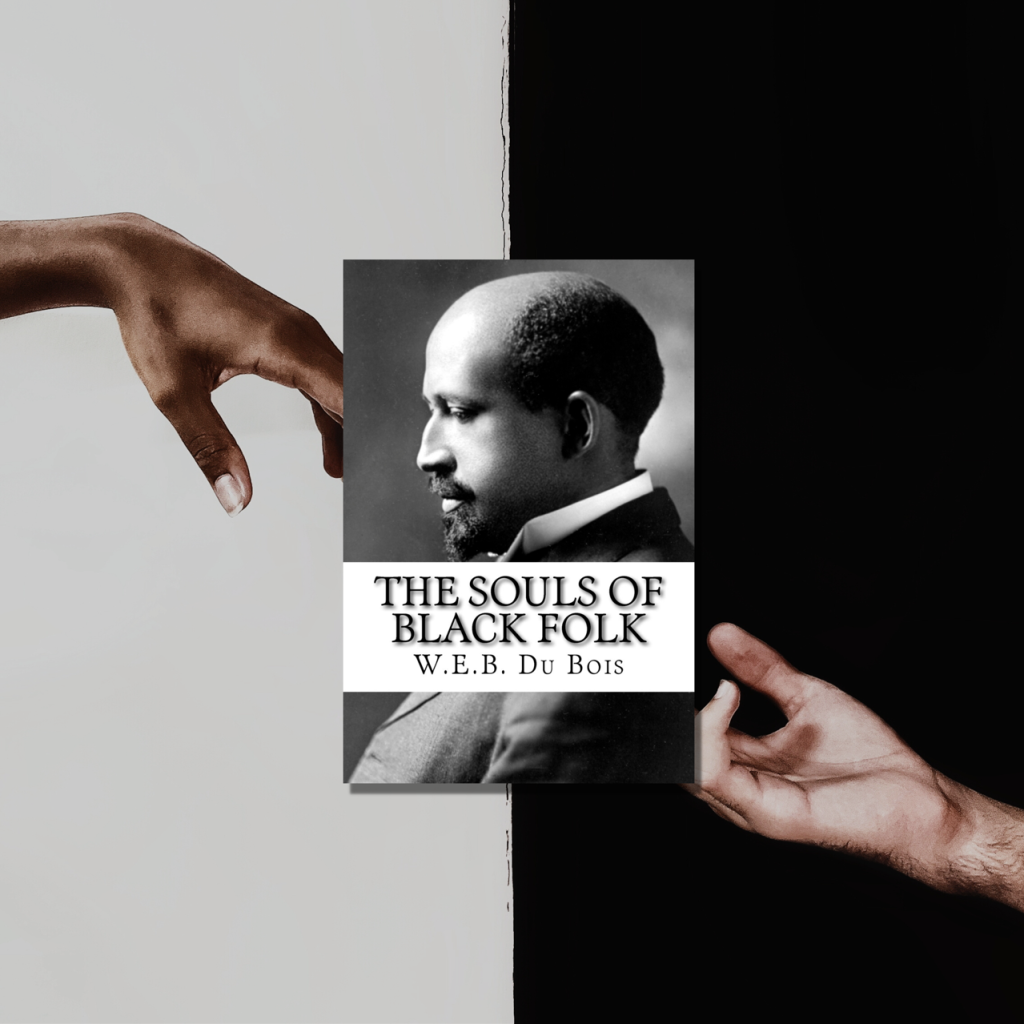
W. E. B. Du Bois wrote an acclaimed book titled The Souls of Black Folk in the United States in 1903, and it is not nearly forgotten to this day.
The literature and politics of the century or centuries that followed were constructed on the basis of this remarkable volume of essays.
Additionally, it allows for compelling, quick reading. Thought-provoking, occasionally elegant, but always startling, Du Bois’ words and visuals reflect his rigorous dedication and originality. We wanted to highlight this best-selling, genre-defining literature from a collection of famous essays to the top of our list for its great delivery, social and historical relevance.
The book was released in 1903 at a critical time. Nearly 40 years had passed following the end of the American Civil War, which, through Constitutional Amendment XIV, had granted black men citizenship rights and pledged equal justice under the law, embodied in the Reconstruction effort. However, racism and prejudice still endured, and how black Americans were treated varied extensively between states.
From the 1890s and beyond, rightist laws and statutory provisions referred to as “Jim Crow” laws—which are designed to severely limit and restrict the freedom of black Americans—began to be put into place. In such a dehumanizing environment, Du Bois’s book’s honest emphasis on the soul is an act of fundamental defiance and a historic plea for better awareness that racism was producing more and more division and harm.
A few of the many authors who have considerably profited from Du Bois’s creative influence include Richard Wright, members of the Harlem Renaissance, Lorraine Hansberry (she personally got to know him through his many visits to her family), James Baldwin, and Toni Morrison.
Just like the name suggests, Souls of Black Folk is a type of hybrid writing that incorporates music and poetry with social critique, history, biography, and even a little fiction. Du Bois skillfully shifts tone, style, and viewpoint while connecting the profoundly personal with a meticulous history as early as the first few pages.
A worthy shout.

“A seminal work in American and African-American literature” – Jesse Williams
Check Out – The Souls of Black Folk
2. The Adventures of Sherlock Holmes (Sherlock Holmes #3)

For many generations, fans have been enthralled by Sherlock Holmes and his sidekick Dr. Watson. It’s amazing to own this compilation of twelve short stories, which earns the number two spot on our top 100 books.
The Adventures of Sherlock Holmes includes everything from missing gems, to mysterious events and spectacular crimes. There is no shortage of great connections and delightful small adventures in The Adventures of Sherlock Holmes.
Only Holmes and Dr. Watson appear in all twelve of the stories, and they are all told from Watson’s perspective in the first-person narrative. In principle, The Adventures of Sherlock Holmes stories highlight societal injustices and seek to address them with fresh and fair judgment. The success of the stories led to a surge in subscriptions for The Strand Magazine where they were published, which allowed Doyle to request an even better pay for his next collection of short stories.
The Adventures of Sherlock Holmes is the third volume since the original Sherlock Holmes series. It follows Sherlock Holmes’ adventures as he works to unlock the secrets of each case he takes on. As usual, Sherlock Holmes proves his enigmatic brain once again. The story, which takes place in late 19th-century London, not only conjures up a compelling mystery storyline, but also moves between actual landmarks. From Hyde Park, the Thames, and St. George’s Church in Hanover Square, as well as a few made-up ones if only to provide variety. Also remarkable are the vivid depictions of London’s transportation systems that appear frequently.
The story opens at Sherlock Holmes’ renowned flat at 221B Baker Street, where he welcomes clients seeking his help in resolving different issues. Naturally, Sherlock Holmes uses his skills to solve each case in a logical fashion. Dr. Watson, Holmes’ closest friend and associate, acts as a monitor when the events around the investigations are fully revealed or are handed to him.
Dr. Watson’s perspective provides the overall storyline in more detail. In addition, Watson records each event and communicates it with the audience, serving as a journal of Holmes’s accomplishments.
Because there are often missing details in this kind of storytelling, it further heightens the emotion and suspense regarding each case and keeps the reader unsure about what to do next. It’s interesting how Holmes keeps the audience guessing while delivering logical arguments for each of his ideas. In his suspenseful and mysterious book, Doyle touches on a number of issues, including family riches, character, social position, and moral vulnerability.
Doyle’s utilization of 19th-century English vocabulary makes it an enjoyable read while still keeping a clear, understandable writing style. Quite simply, this is just the start of an extraordinary adventure for those meeting the pipe-smoking, violin-playing detective for the first time.
Check Out – The Adventures of Sherlock Holmes (Sherlock Holmes #3)
1. The Brothers Karamazov

Finally, our number one pick in the top 100 books of all time. Introducing…The Brothers Karamazov! This is a family drama, a philosophical novel, a murder mystery, and a love story. It’s also a timeless masterpiece!
Why does The Brothers Karamazov top our list?
Fyodor Dostoyevsky’s final, longest, and most acclaimed book, The Brothers Karamazov, explores life in an environment experiencing deep, unnerving transformation.
It’s a debate and dialogue novel, packed with a dizzying array of perspectives discussing what it means to be Russian and a human being finding purpose in a confusing reality. It’s a family drama, a murder mystery, and a love story all rolled into one.
It’s no surprise that generations of readers from all walks of life have discovered in this Dostoyevsky’s magnum opus, a mirror image of their own big issues as well as a rich, captivating world in its own right.
In his early adulthood, Dostoyevsky endured a turbulent life, and elements of his life struggles show frequently in his novels. For instance, Dostoyevsky struggled financially for the majority of his early adulthood, struggling to maintain appearances on a meager salary. The son of a physician, he rose through the ranks of the aristocracy largely on his own initiative. As a young writer in St. Petersburg in the 1840s, he became connected with the utopian socialist, Petrashevsky Circle.
While the party’s interests were limited to reading, writing, and analyzing political reform, it did so on the backdrop of the 1848 Revolutions in Europe. These events upset the czarist state, and Dostoyevsky and his fellow scholars were arrested and sentenced to die in 1849. Their deaths were spared at the last second by a czar’s pardon; in truth, they were never planned to be conducted out.
Almost 20 years later, Dostoyevsky would write The Idiot, in which the lead, like Dostoyevsky himself, is forever traumatized by a similar event of psychological torment.
Dostoyevsky’s four years of hard labor in a harsh Siberian prison cell, during which time he gave up his scientific socialism and acquired a Christian idealism laced with an almost religious faith in the Russian spirit, had an equal impact.
Ivan Karamazov, the figure at the core of The Brothers Karamazov, is confronted with the same problem. Dostoyevsky’s Russia was transitioning from an aristocratic to an industrial economy, a move that much of Europe had done over centuries rather than decades. Ivan is a Westernized Russian atheist with an eye toward the future.
Dostoyevsky started to see that Dmitri, his older brother, was a careless thrill seeker who lived for the moment, and that his sort of corrupted materialism was an inevitable result of the European Enlightenment, which was supported by professors like Ivan.
Alyosha, the youngest and third Karamazov brother, is unselfish and represents real hope in the shape of the ideal man. He is named after Dostoyevsky’s son, who passed away at age three following a seizure brought on by the epilepsy he inherited from his father.
The Brothers Karamazov’s moral framework has several elements that modern audiences may find difficult to understand. In addition to thinking that Christianity was the greatest answer to the crisis that Russia, Europe, and mankind as a whole were currently experiencing, Dostoyevsky also believed that the Russian Orthodox Church was the only genuine embodiment of the religion and was bound to heal the world.
Even those who can relate to Ivan’s dilemma of hope will certainly disagree with the author’s proposed solution. But none of this has lessened the novel’s influence or appeal over time. Readers are continually captivated by Dostoyevsky’s writing because of its fierce, distinctive life and particularly, his enduring characters.
Dostoyevsky acknowledges that humans cannot exist without ideas and that people are the actual focus of any novel from the first scenes of his work in which he introduces the Karamazov family, which consists of the boys and their alcoholic, obnoxious, father.
In addition to being a thought-provoking discussion on faith and morality, those moments are also a familiar scenario for anybody who has ever spent the holidays with your mixed relatives, from the lovable to the intolerable.
If you set aside Dostoyevsky’s rep for seriousness, it is also incredibly hilarious.
Dostoyevsky once commented to a friend that “life is filled of the humorous and only majestic in its inner sense.”)
The intricate love lives of the Karamazovs, which are both wretched and sublime, never cease to captivate, even if Ivan’s philosophical confusion may not speak to you.
Even if they are rooted in a specific period of Russian history, their troubles seem to be quite similar to ours.
How potent is love? Hate? Blood? Money? Faith? What renders this great novel timeless are its questions, which we keep asking ourselves years after the world that formed The Brothers Karamazov has faded away.
Woody Allen calls this book one of his favorite and has cited it as a major influence on his own work.
Check Out – The Brothers Karamazov
